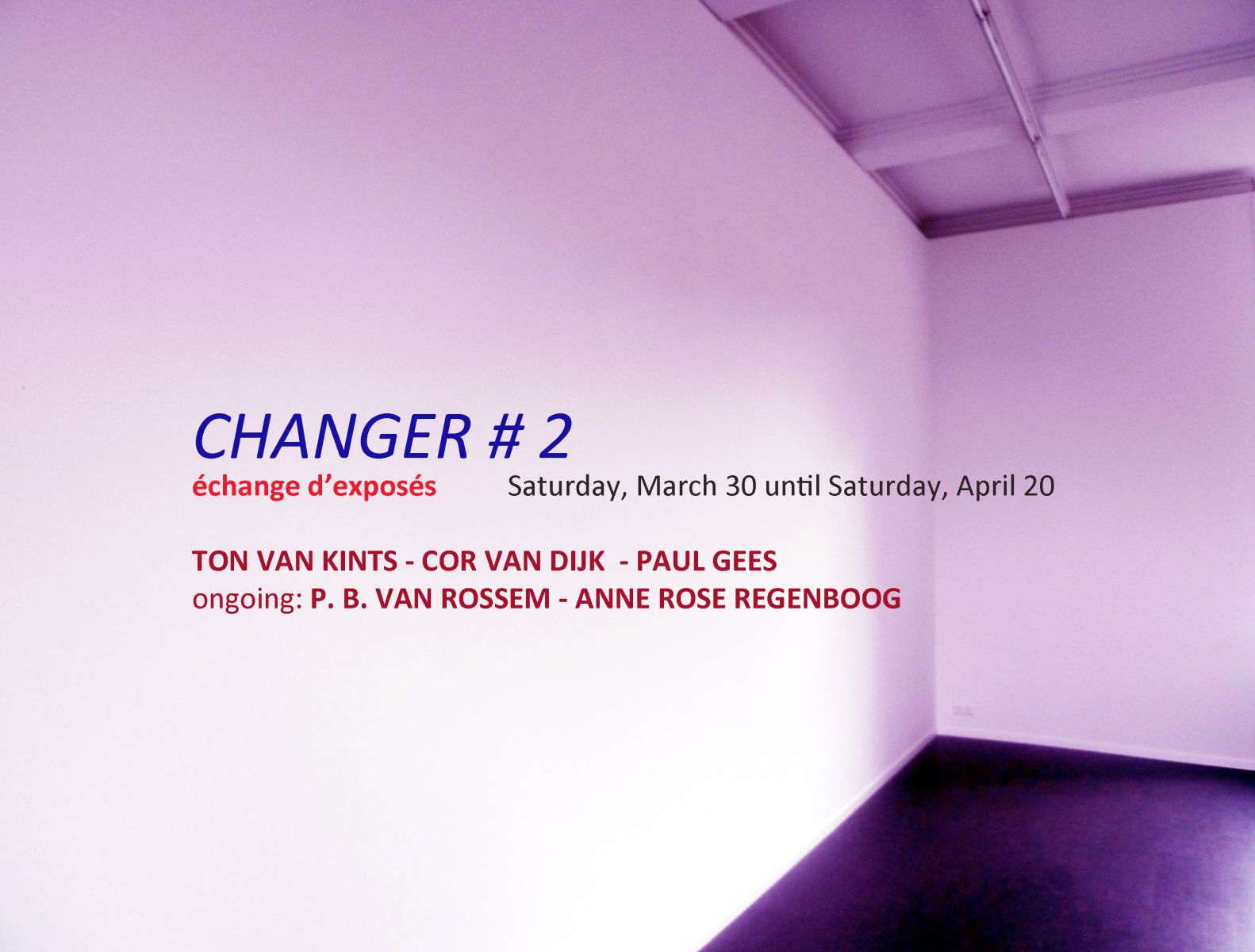2024
08/02 > 24/02
‘Even licht’
Tamara Dees (NL) & Nanda Runge (NL)
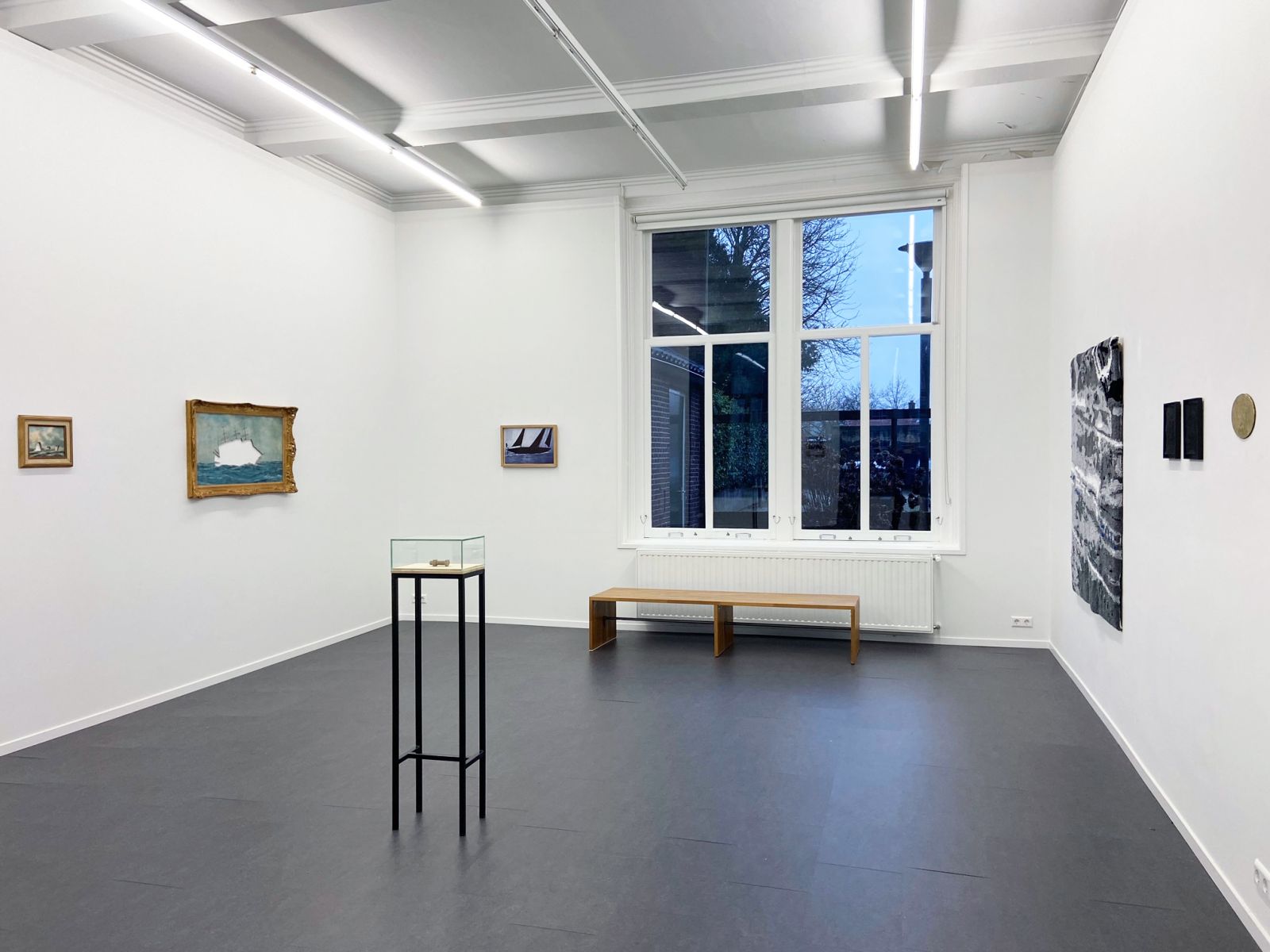
Tamara Dees
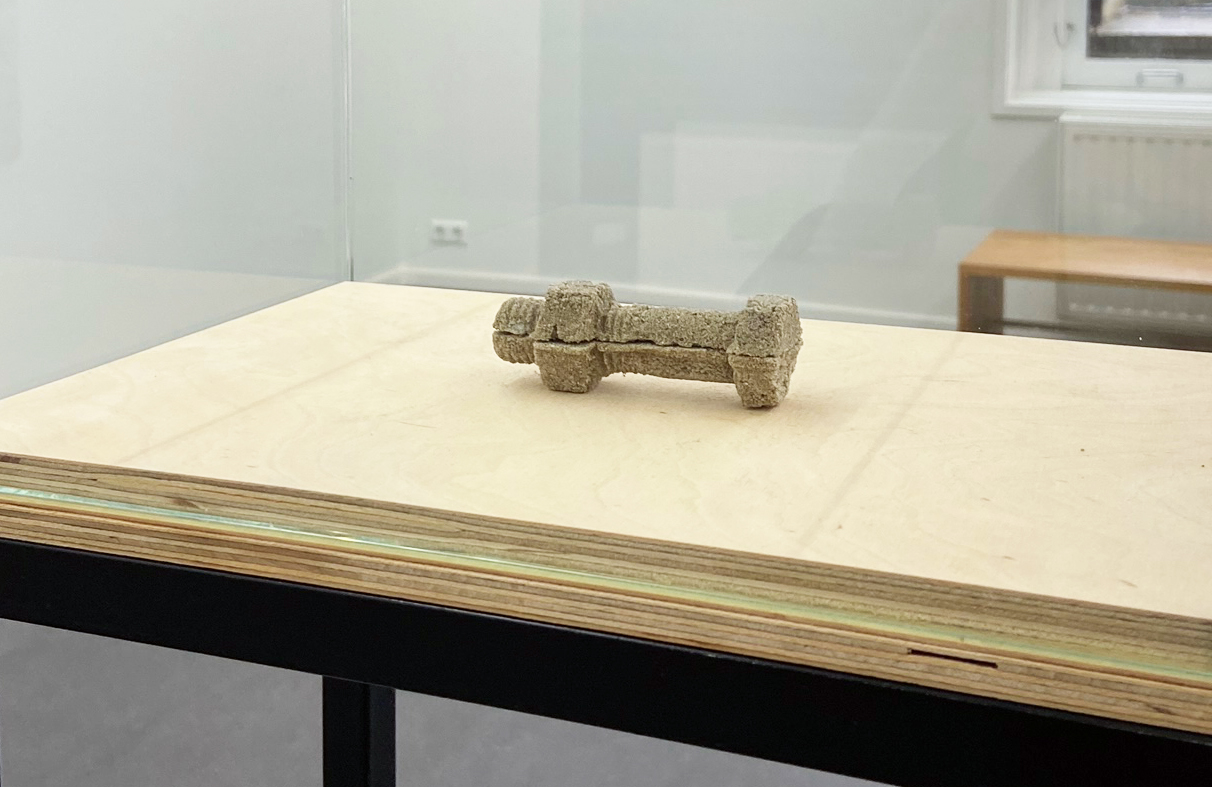
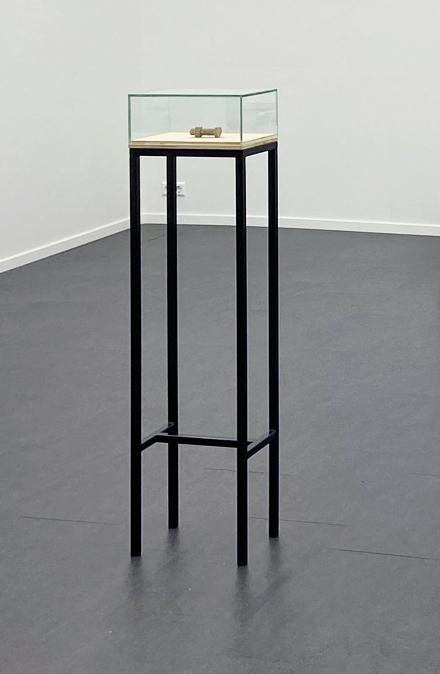
Tamara Dees
M16 (2019) - Multiple Ed. 5
Zand, houtlijm / Sand, wood glue, 8,5 x 3 cm
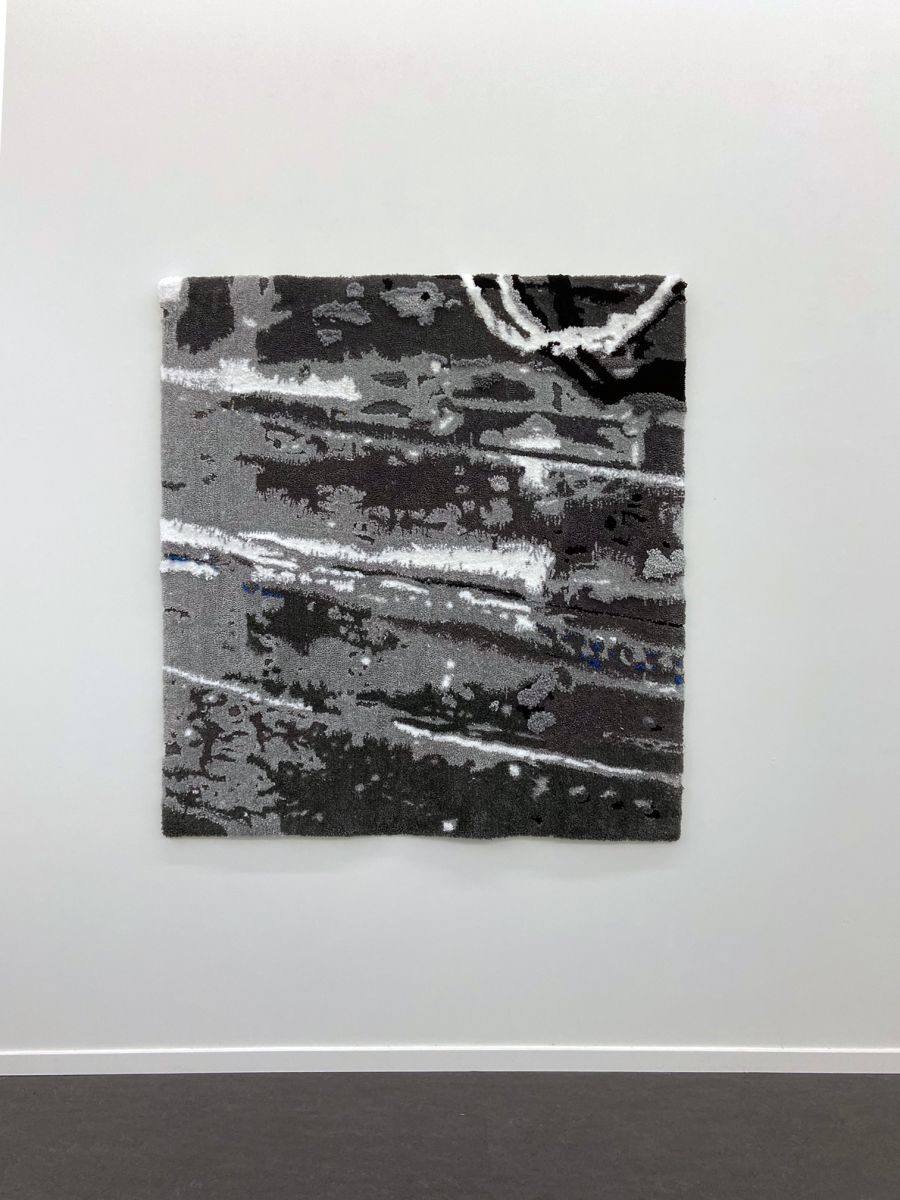
Tamara Dees
‘See me, feel me’ (2024)
Polyester/katoen, acryl, wol / Polyester/cotton, acrylic, wool
138 x 151 cm
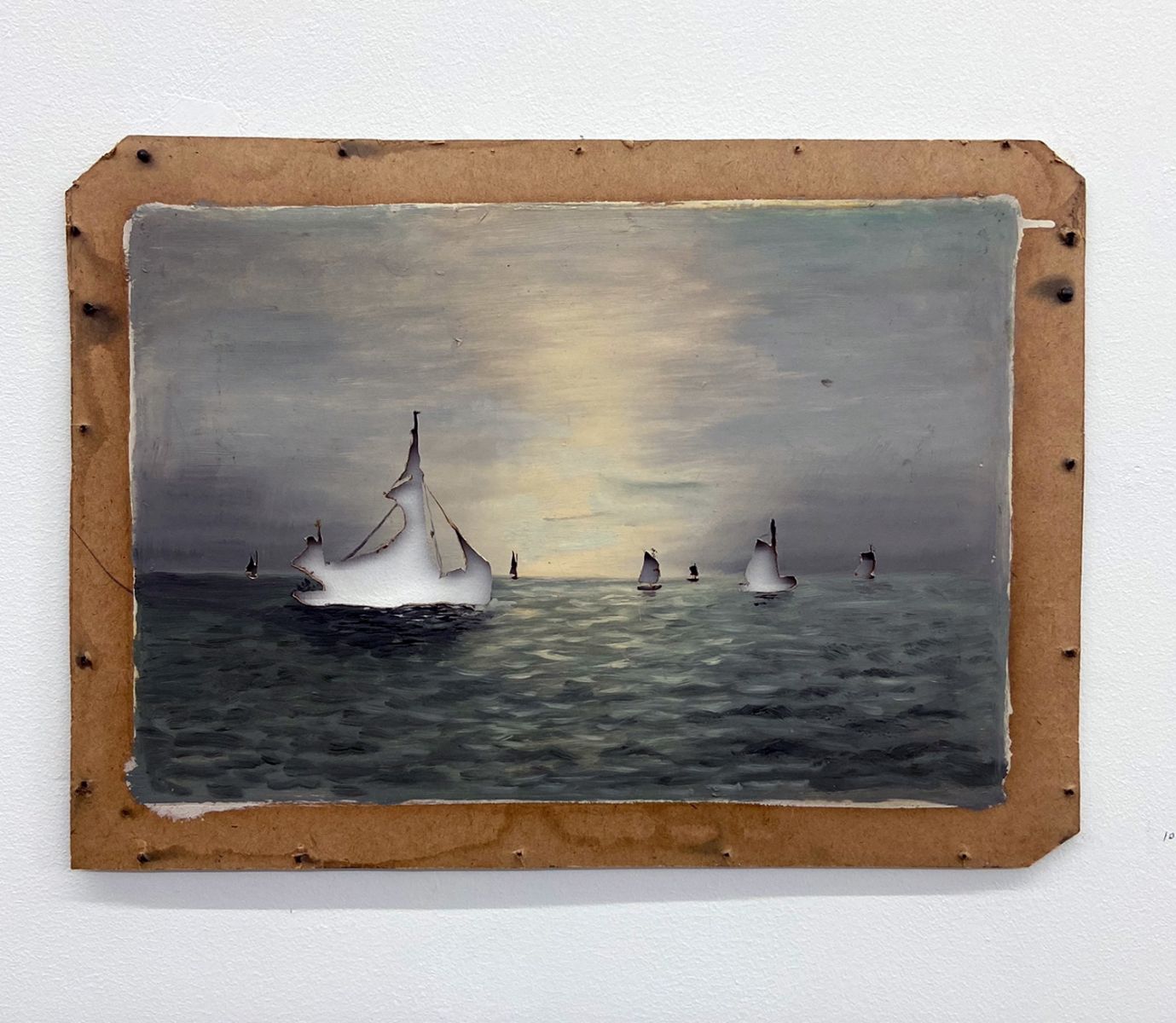
Tamara Dees
'Adagio' (2023)
Uitgezaagd, gevonden paneelschilderij / Found panel painting, sawed-out parts
30 x 40 cm
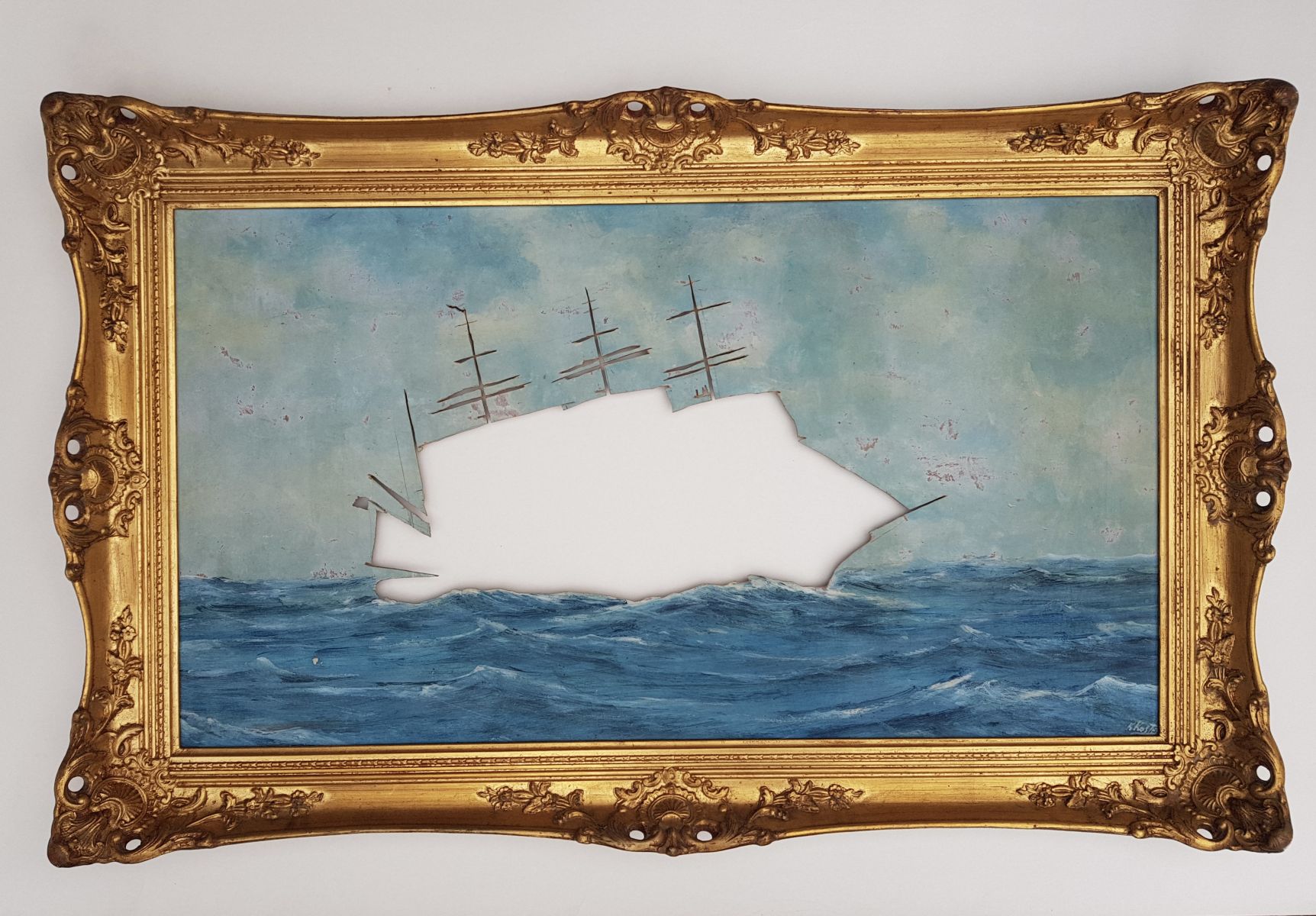
Tamara Dees
‘The ship song’ (2023)
Uitgezaagd, gevonden paneelschilderij / Found panel painting, sawed-out parts
90 x 51 cm
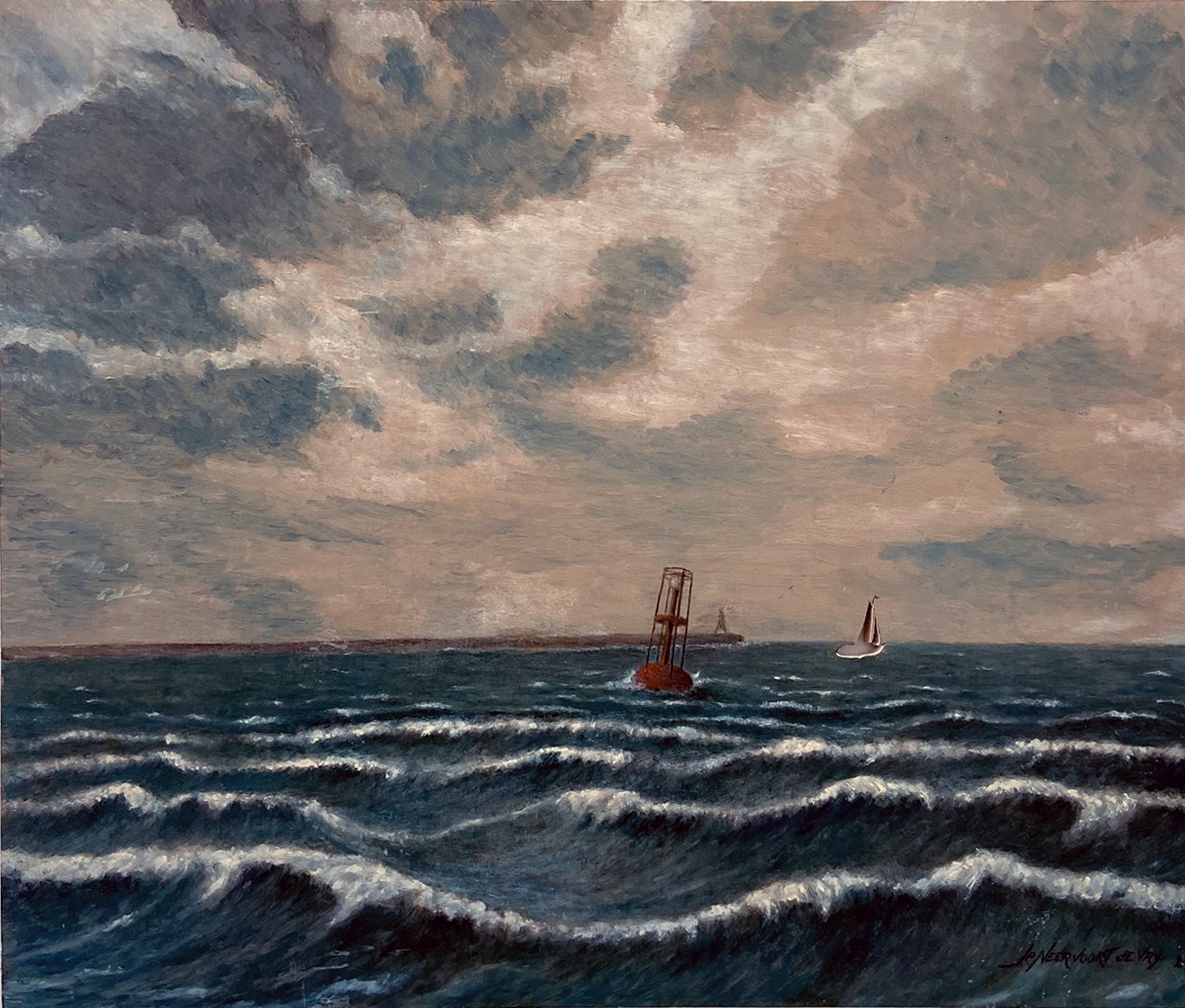
Tamara Dees
‘Largo’ (2023)
Uitgezaagd, gevonden paneelschilderij / Found panel painting, sawed-out parts
45 x 54 cm
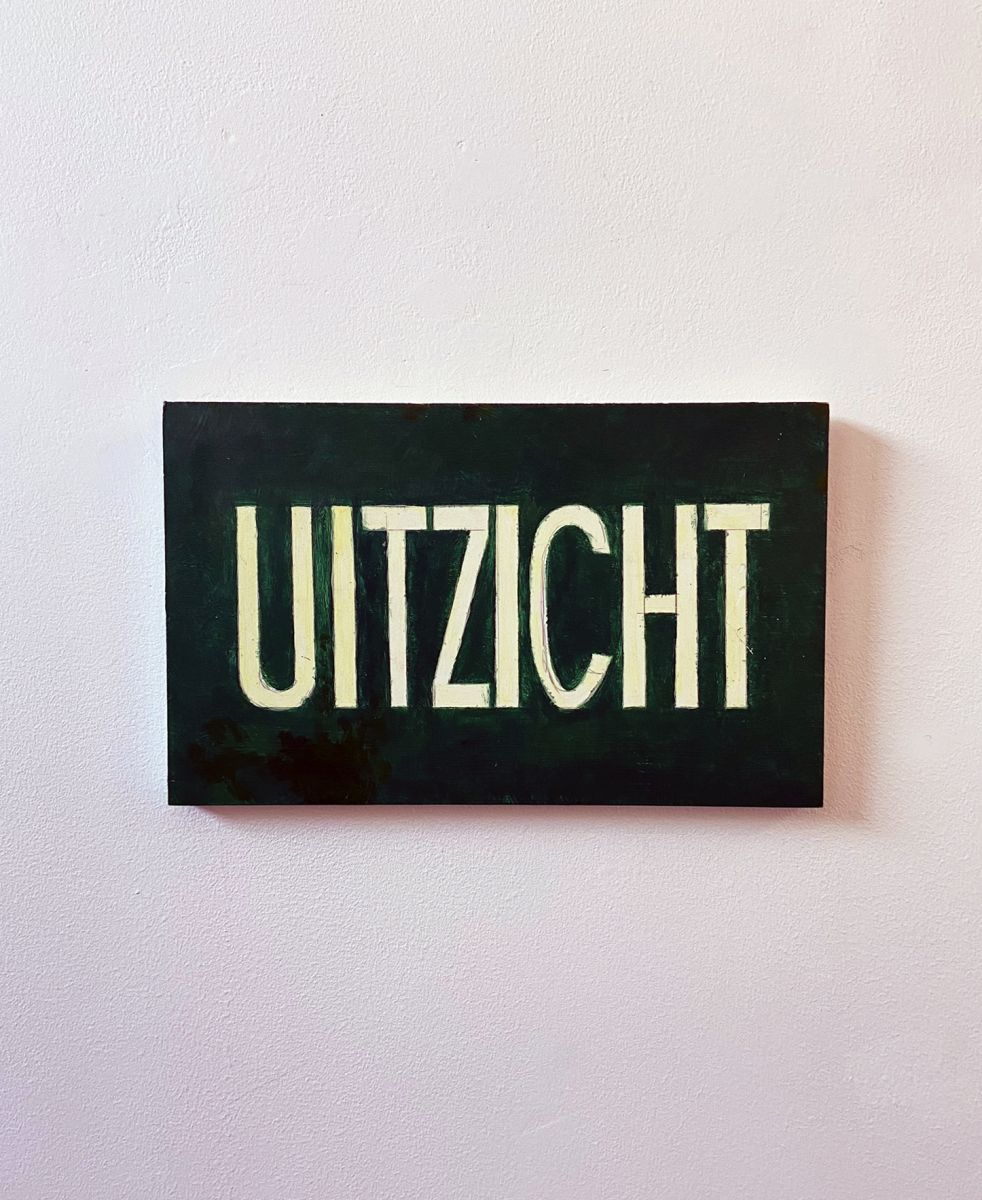
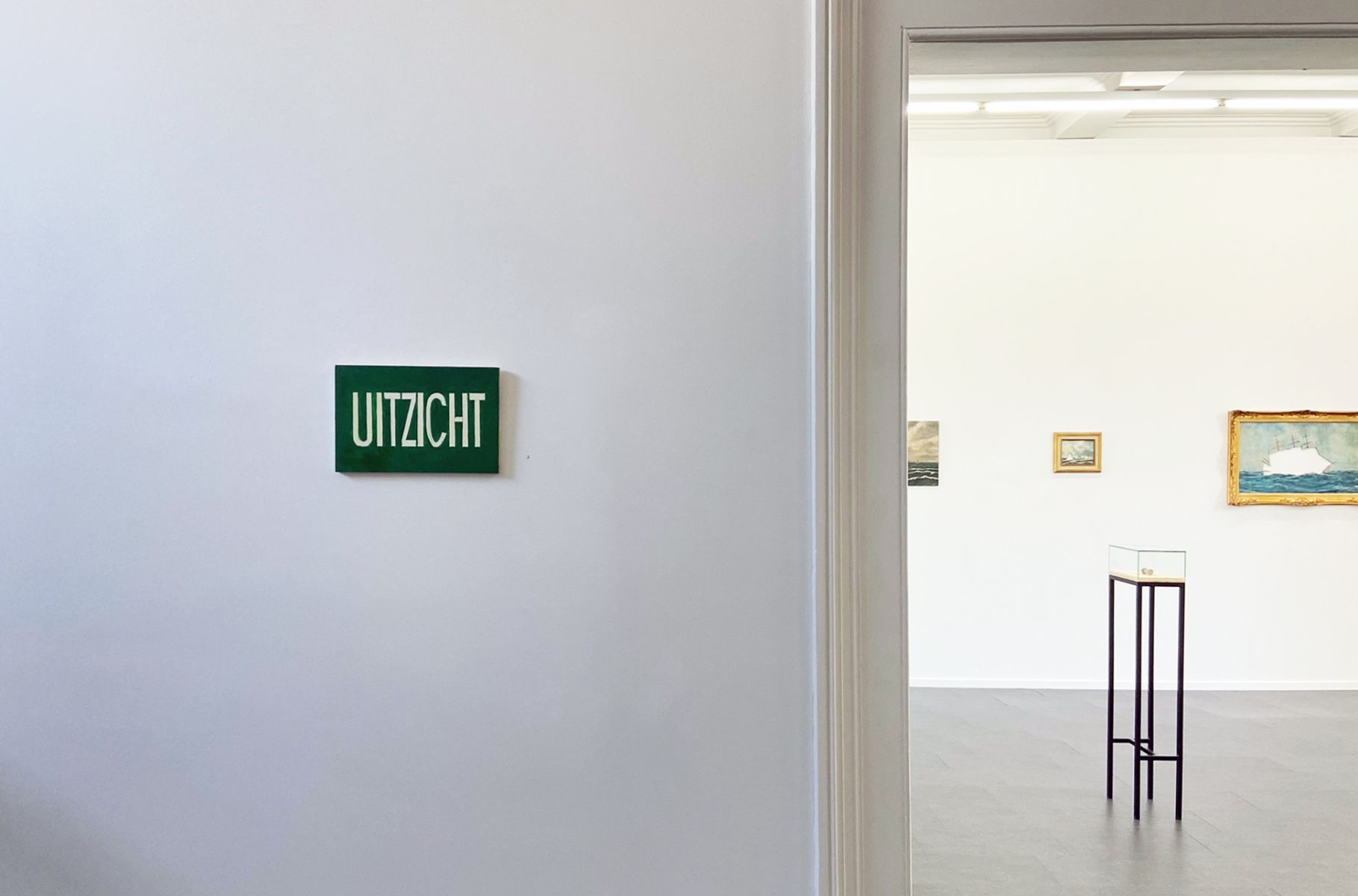
Tamara Dees
‘Uitzicht’ (2007)
Acryl op paneel / Acrylic on panel, 15 x 25 cm
%20Nanda%20adj.jpg)
Nanda Runge
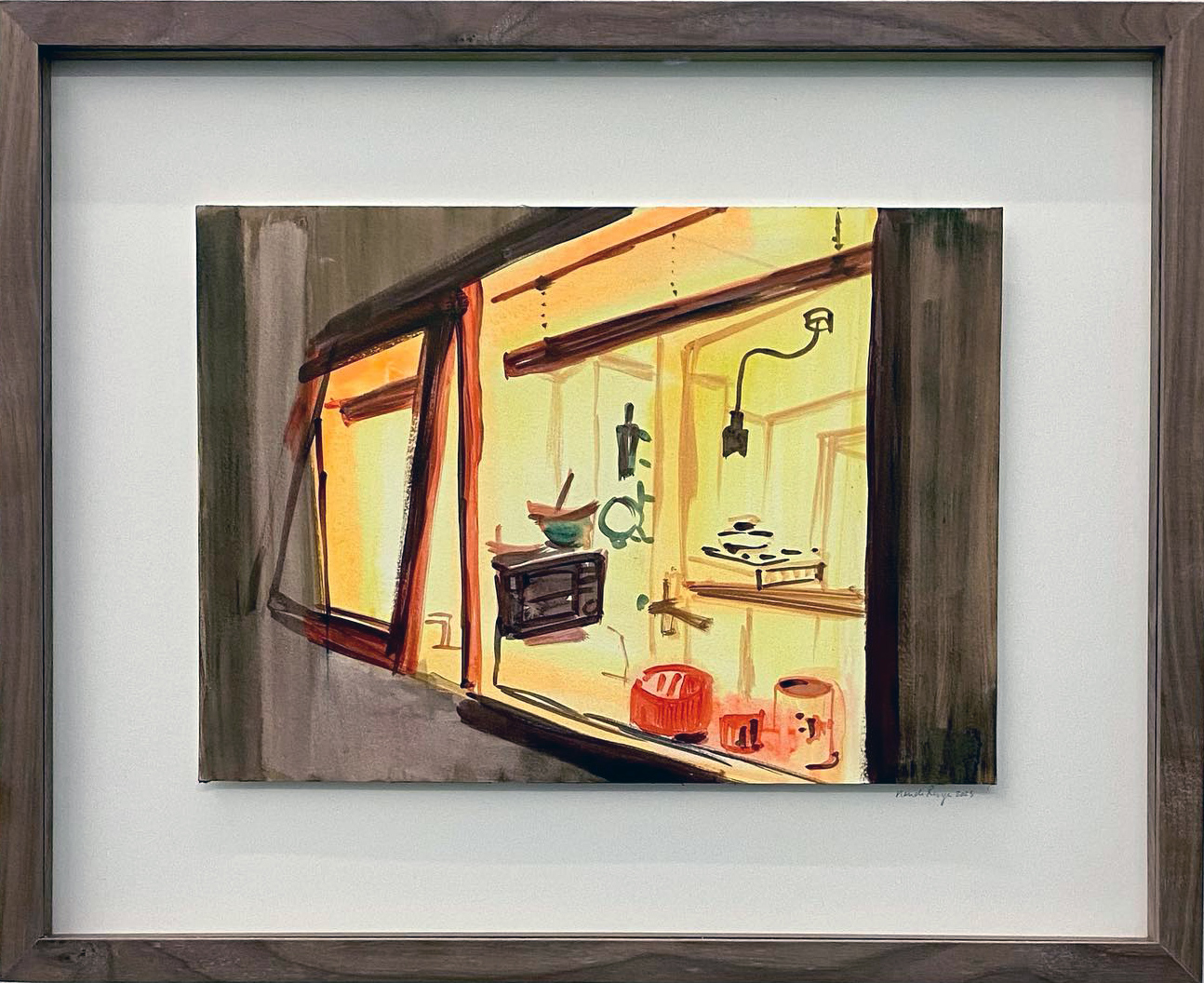
Nanda Runge
'Licht van de maan # 3 (2023) - [ light of the moon # 3 ]
Aquarel, 43 x 53 cm
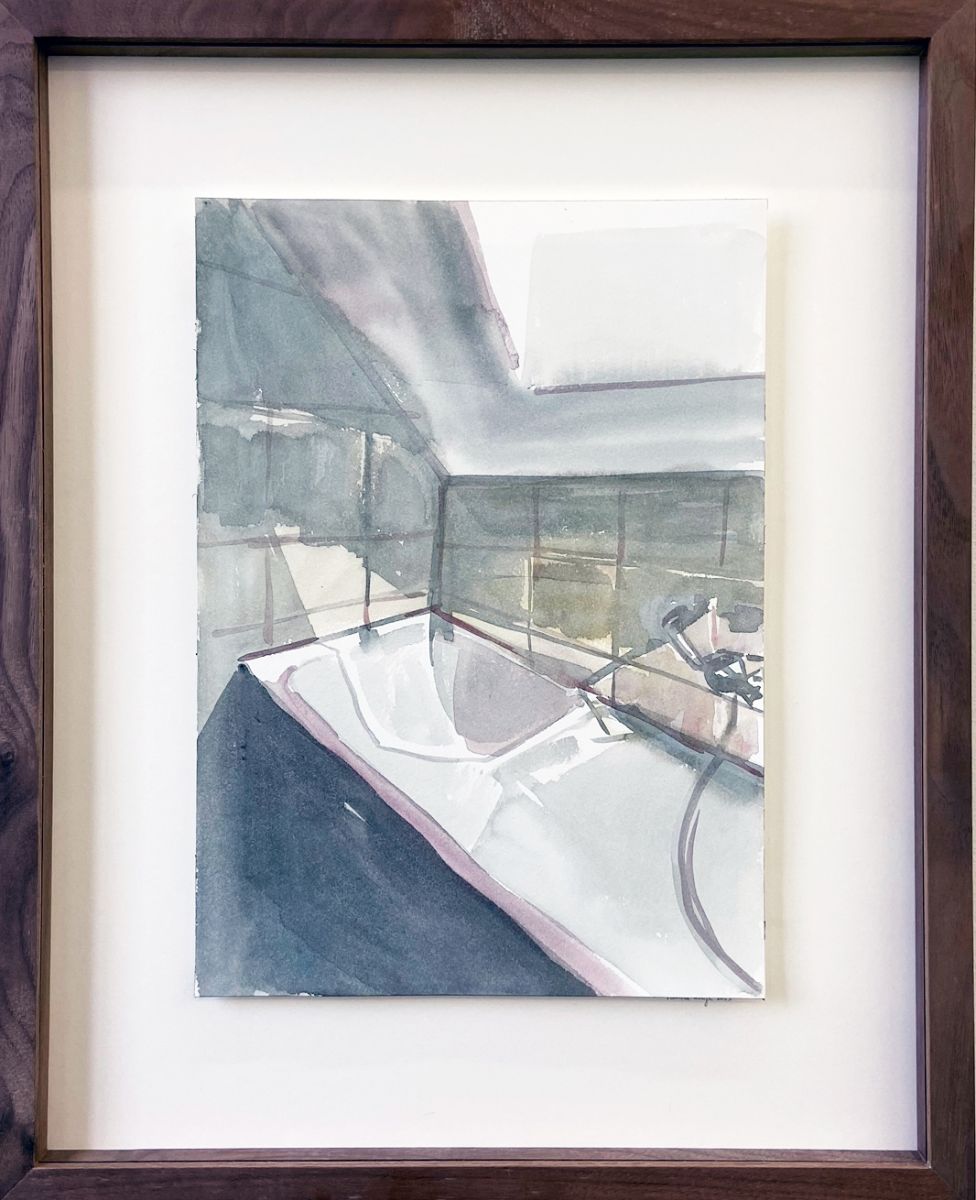
Nanda Runge
'Licht van de maan # 2 (2023) - [ light of the moon # 2 ]
Aquarel, 53 x 43 cm
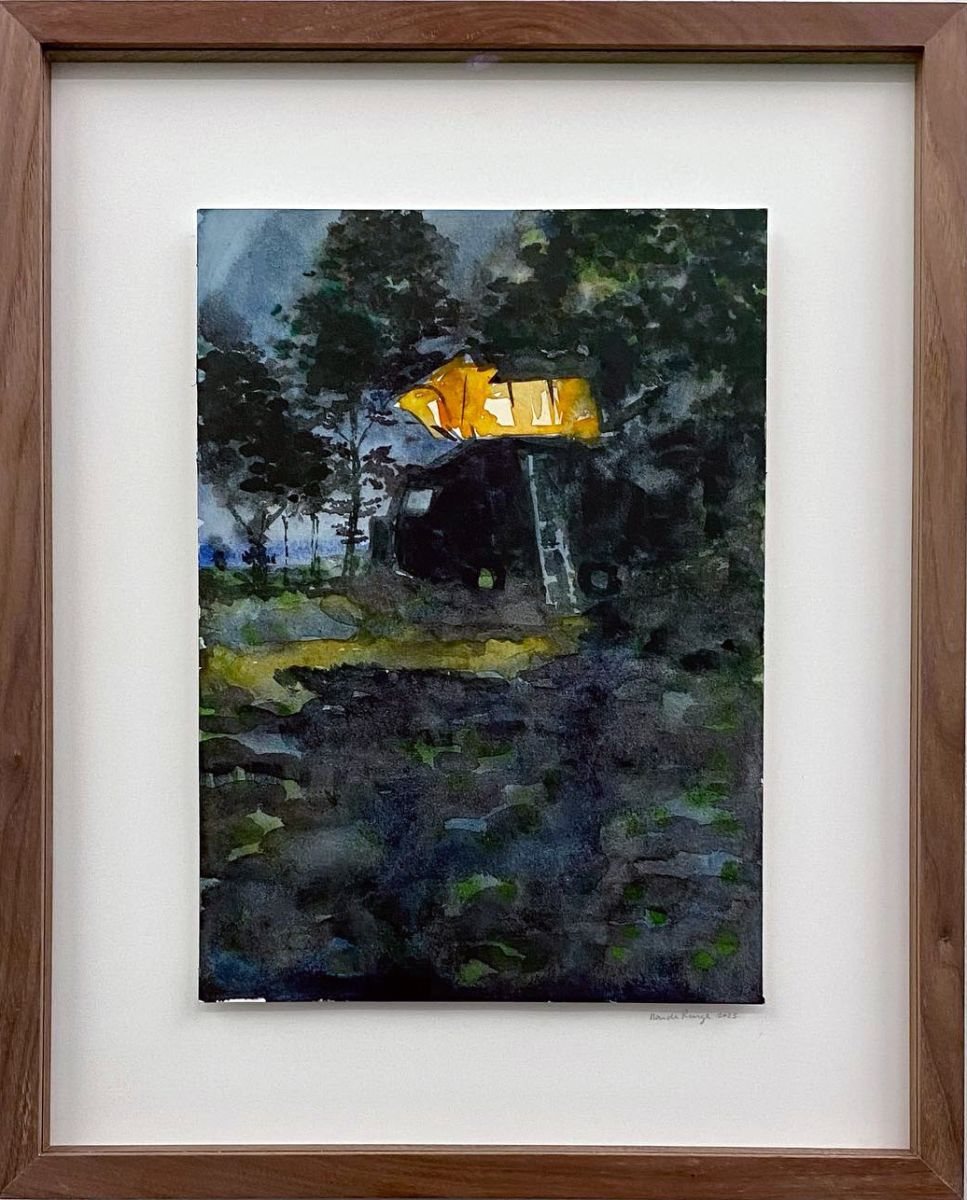
Nanda Runge
'Licht van de maan # 1 (2023) - [ light of the moon # 1]
Aquarel, 53 x 43 cm
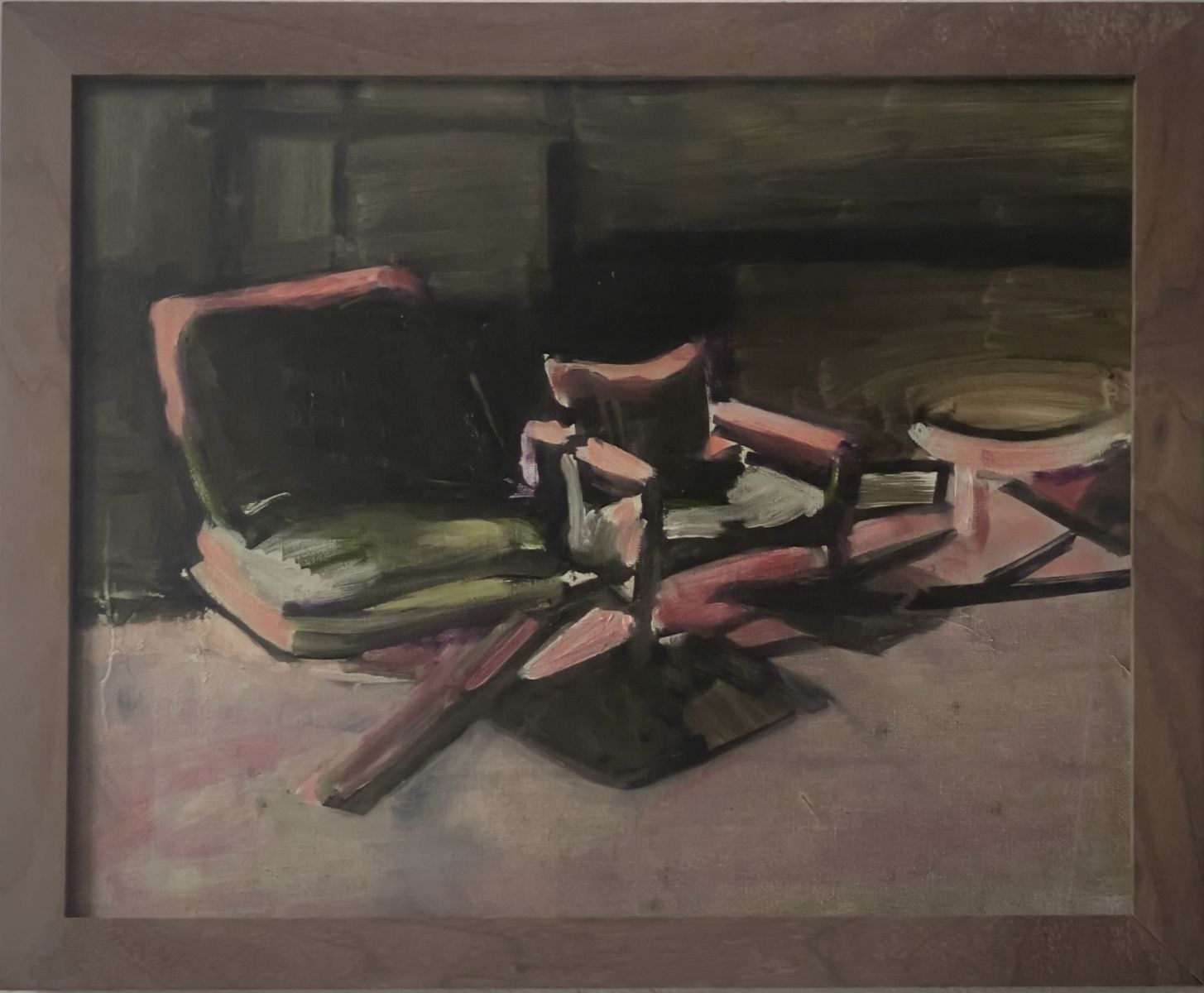
Nanda Runge
‘Rayleigh scattering at home # 3’
Olieverf op linnen / Oil on linen, 25 x 30 cm
09/03 > 29/03
Changer # 1
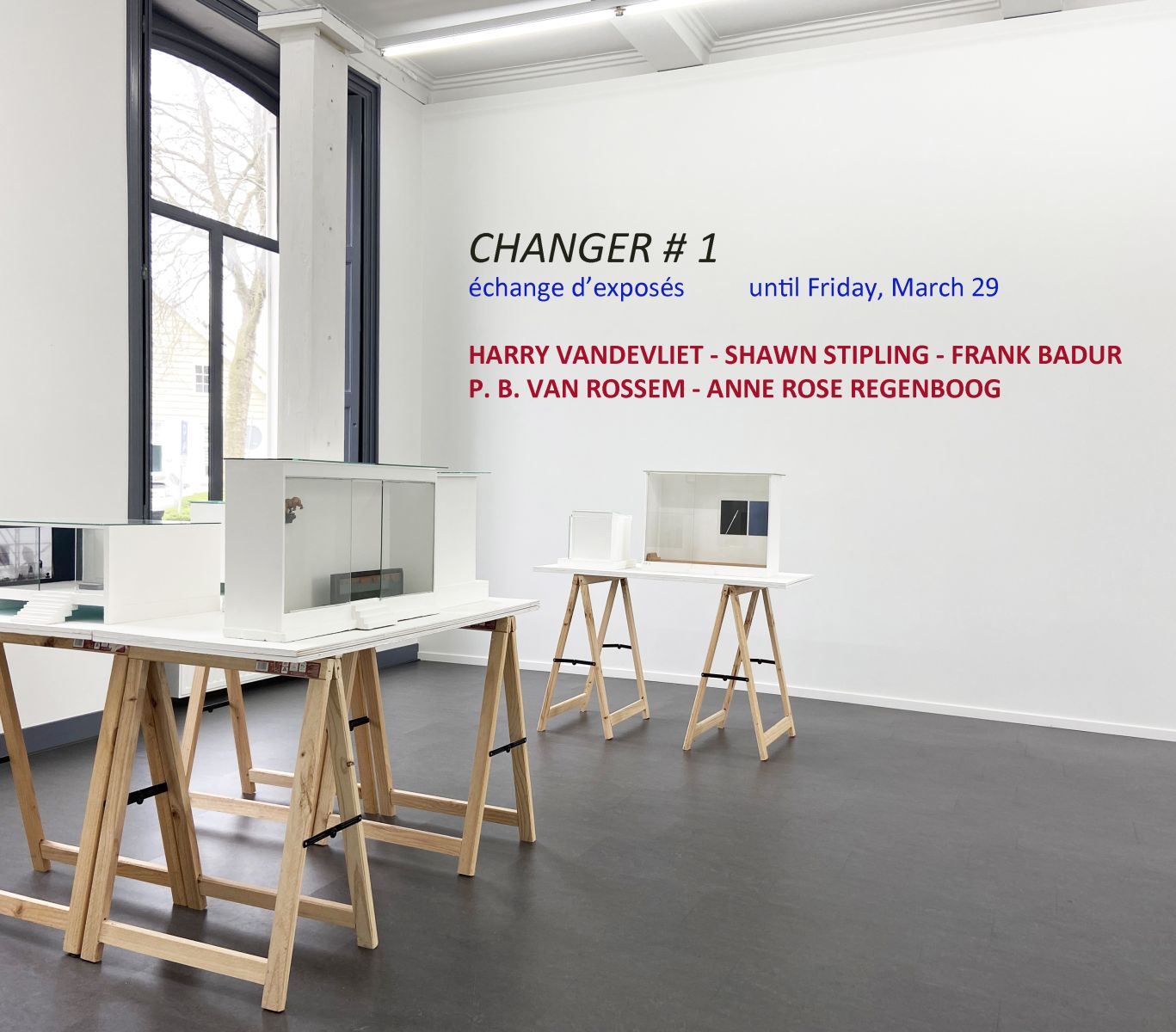
New
09/03 > 20/04 Anne Rose Regenboog - recent works
09/03 > 20/04 P. B. Van Rossem - recent works
09/03 > 29/03 Harry Vandevliet - pavilions & works on paper
From the stock
09/03 > 29/03 Shawn Stipling - painting & works on panel
09/03 > 29/03 Frank Badur - works on paper
Tijdelijk te zien in het Kabinet / On temporary display at the Cabinet:
Ditty Ketting - 3 works on paper (20 x 20 cm)
Regine Schumann - 'Colormirror Cologne (2010), series of 8 works, 39 x 9 x 6 cm each.
%20badur%20adj.jpg)
CHANGER # 1 - Frank Badur
%20adj.jpg)
CHANGER # 1 - P. B. Van Rossem
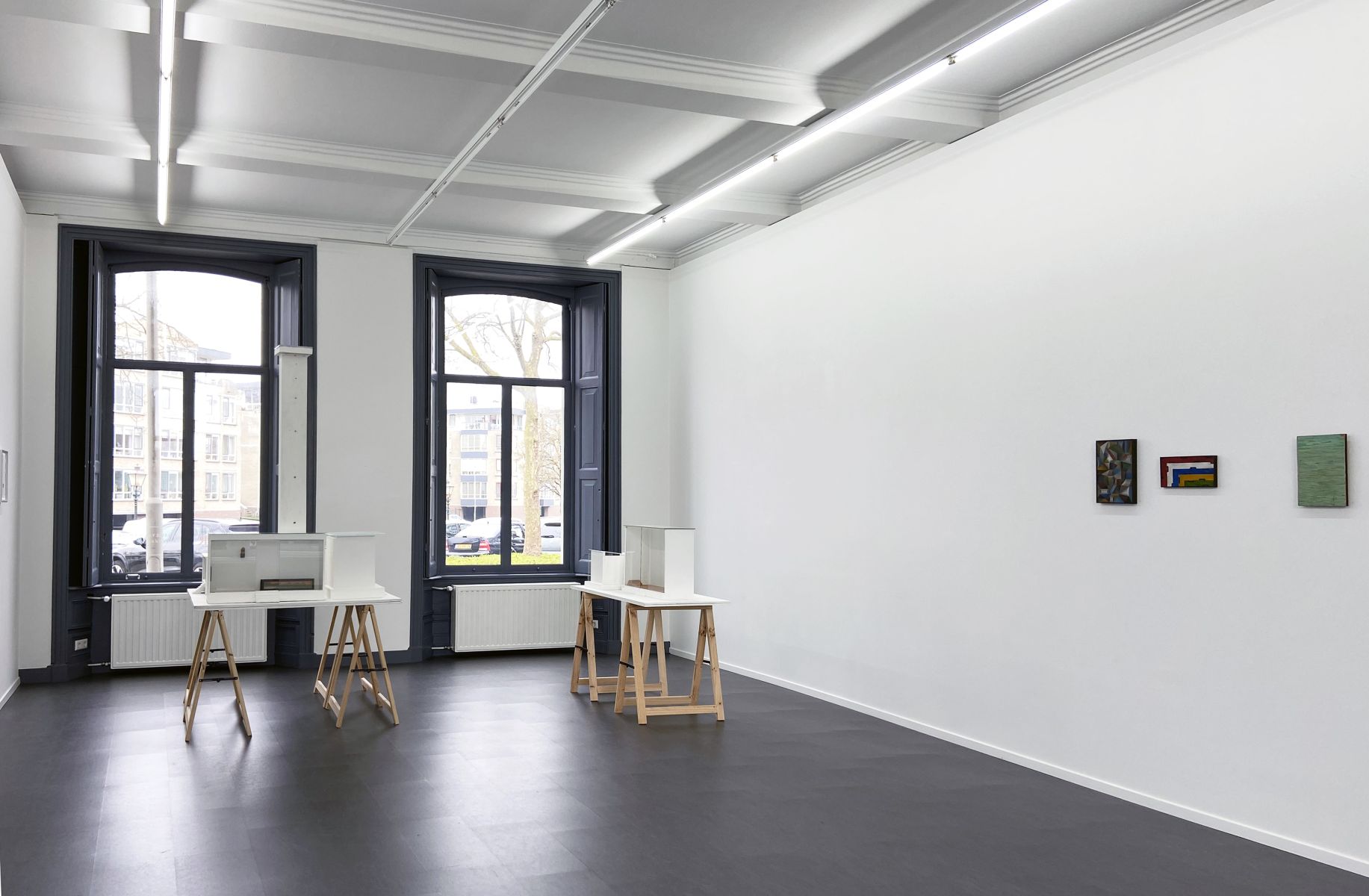
CHANGER # 1 - (L) Harry Vandevliet / (R) P. B. Van Rossem
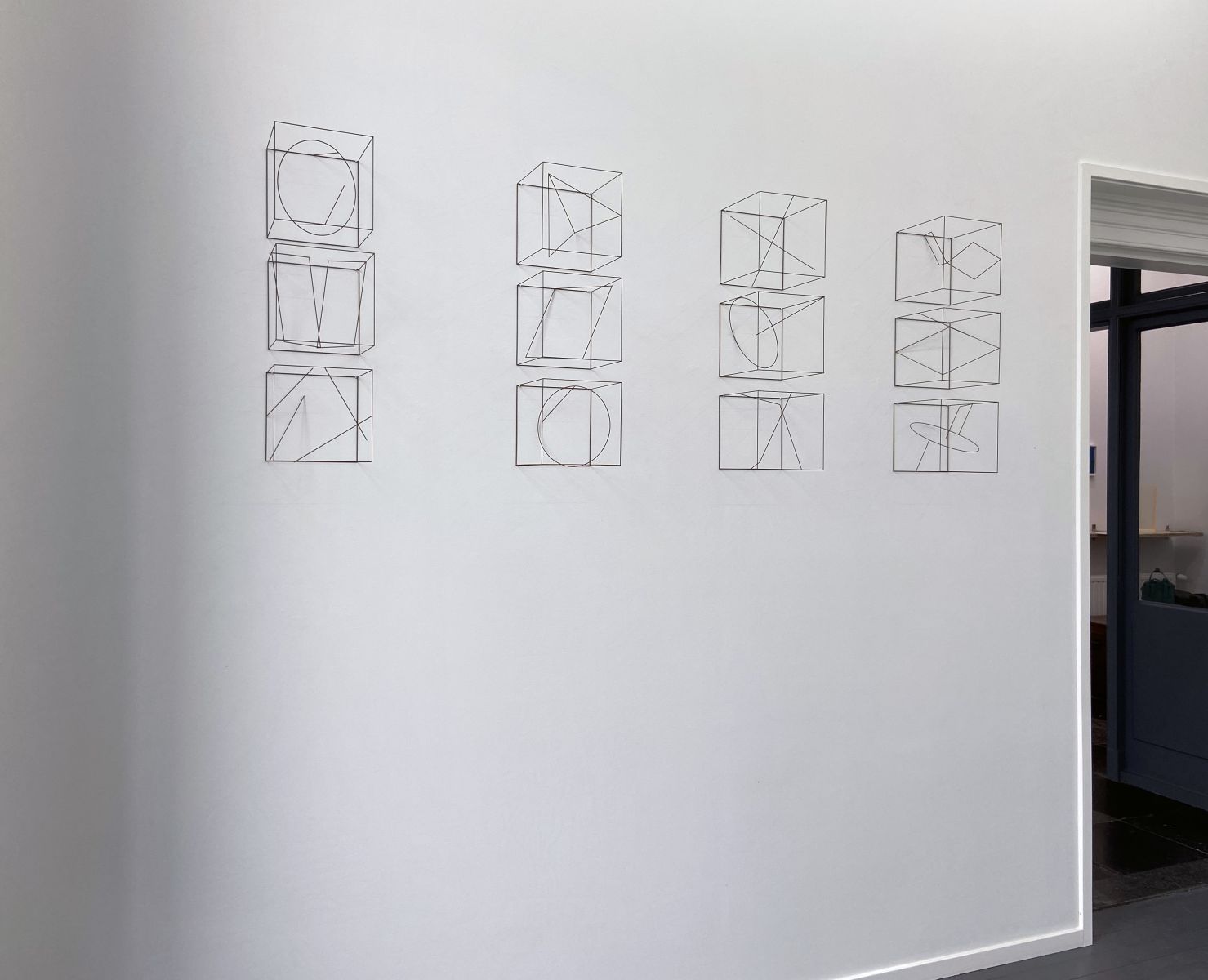
CHANGER # 1 - Anne Rose Regenboog
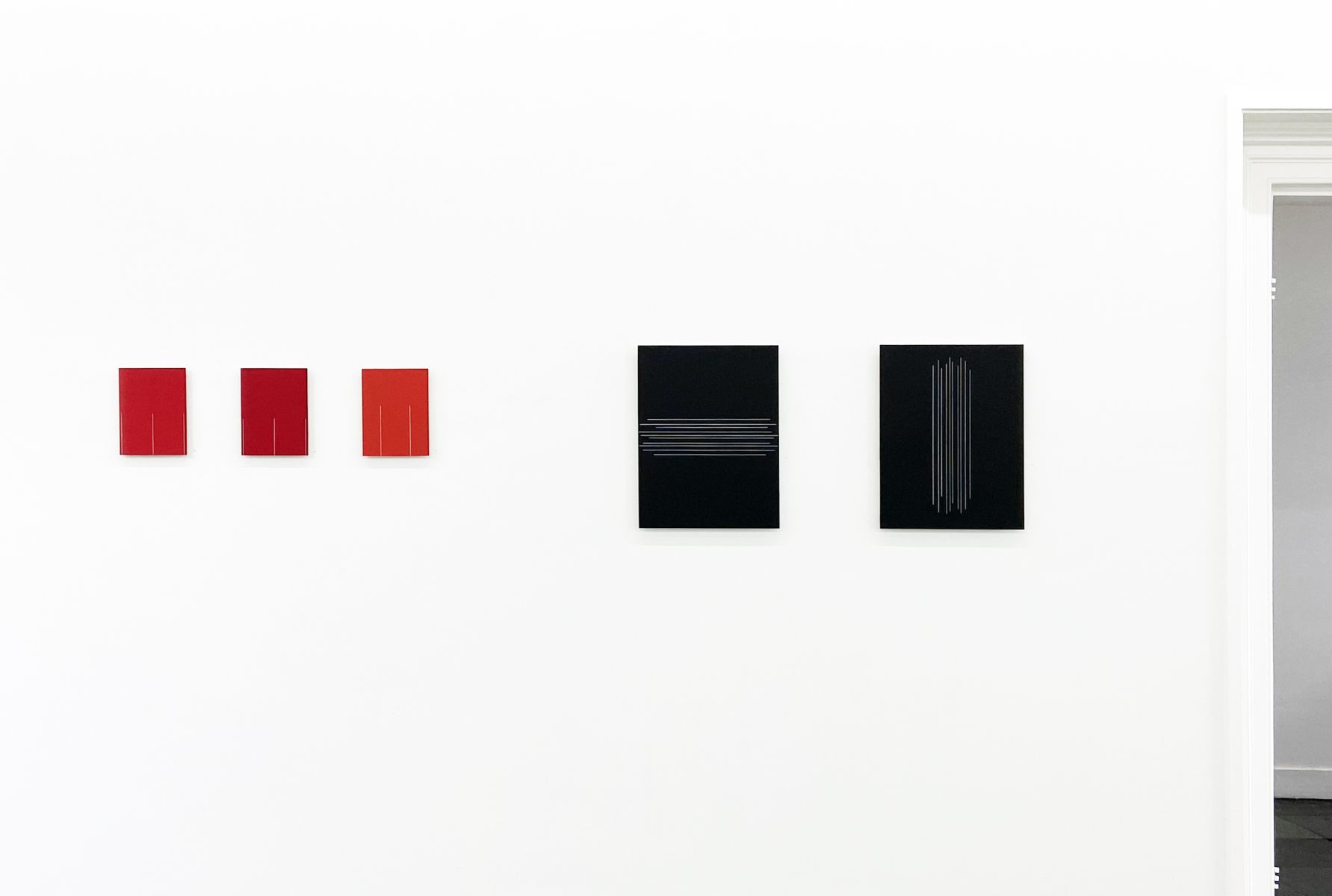
CHANGER # 1 - Shawn Stipling
Changer # 2
30/03 > 20/04
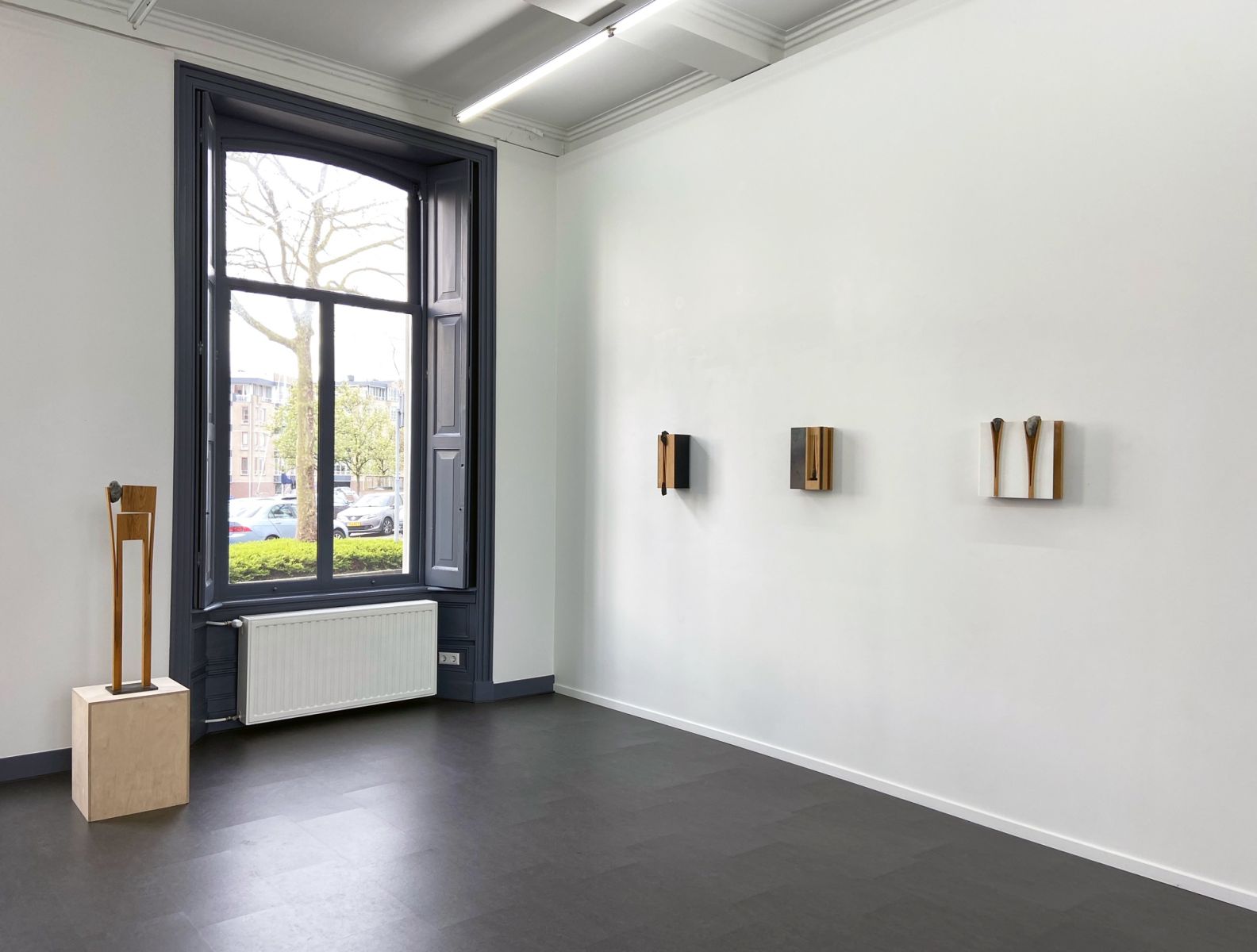
CHANGER # 2 - Paul Gees
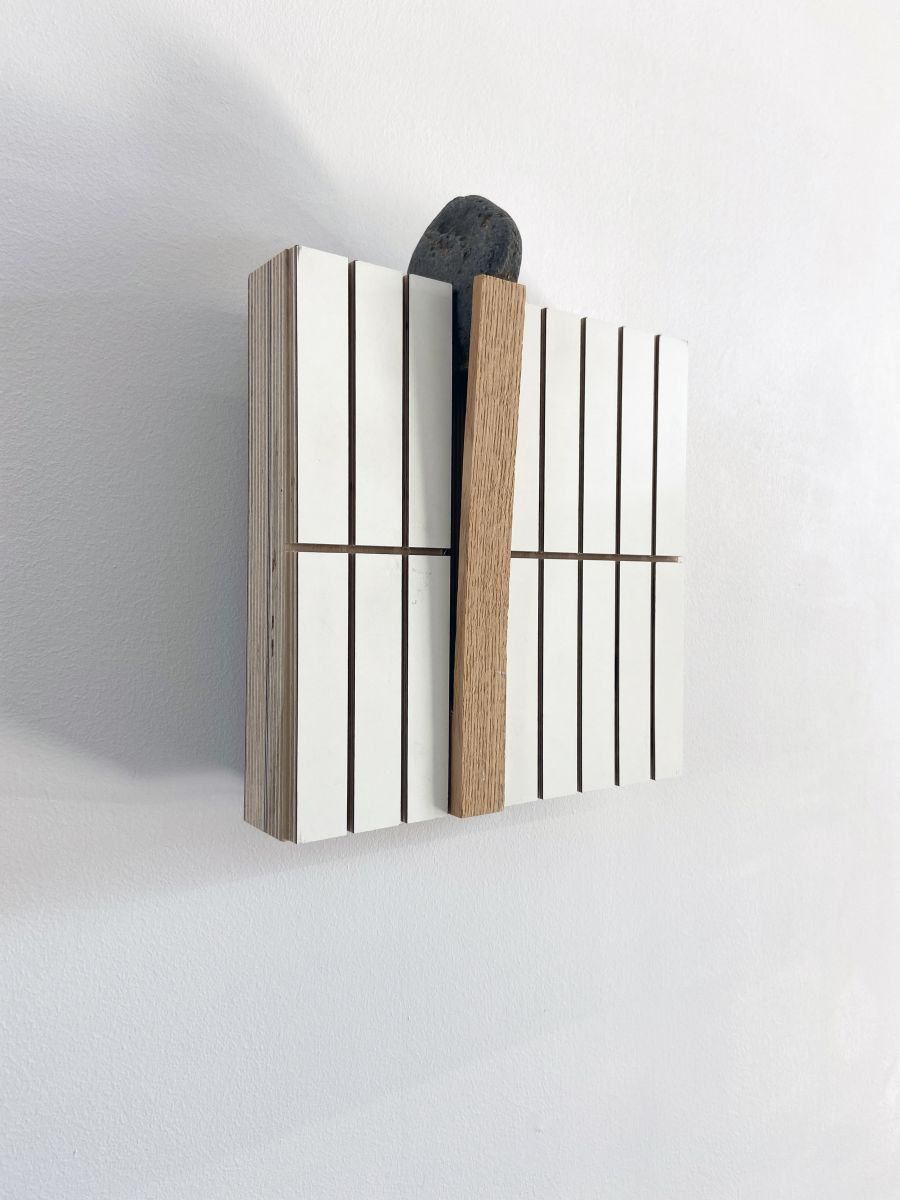
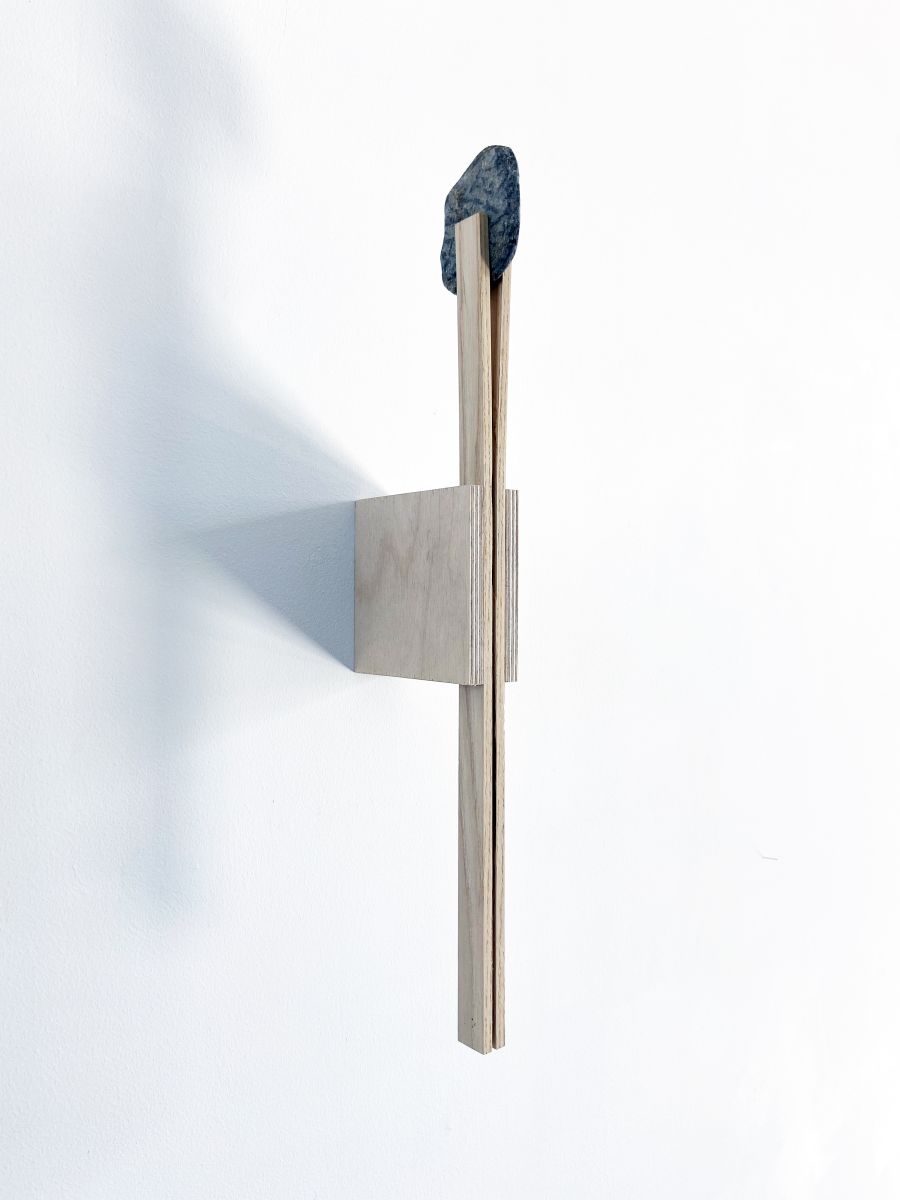
Paul Gees Paul Gees
‘Klavier’ (2017) ‘Spitted’ (2018)
HPL panel, ash wood, stone Plywood, ash wood, stone (Ed. 6/9)
25,5 x 21 x 8,5 cm 46 x 3,5 x 12 cm
%20adj.jpg)
CHANGER # 2 - Cor van Dijk
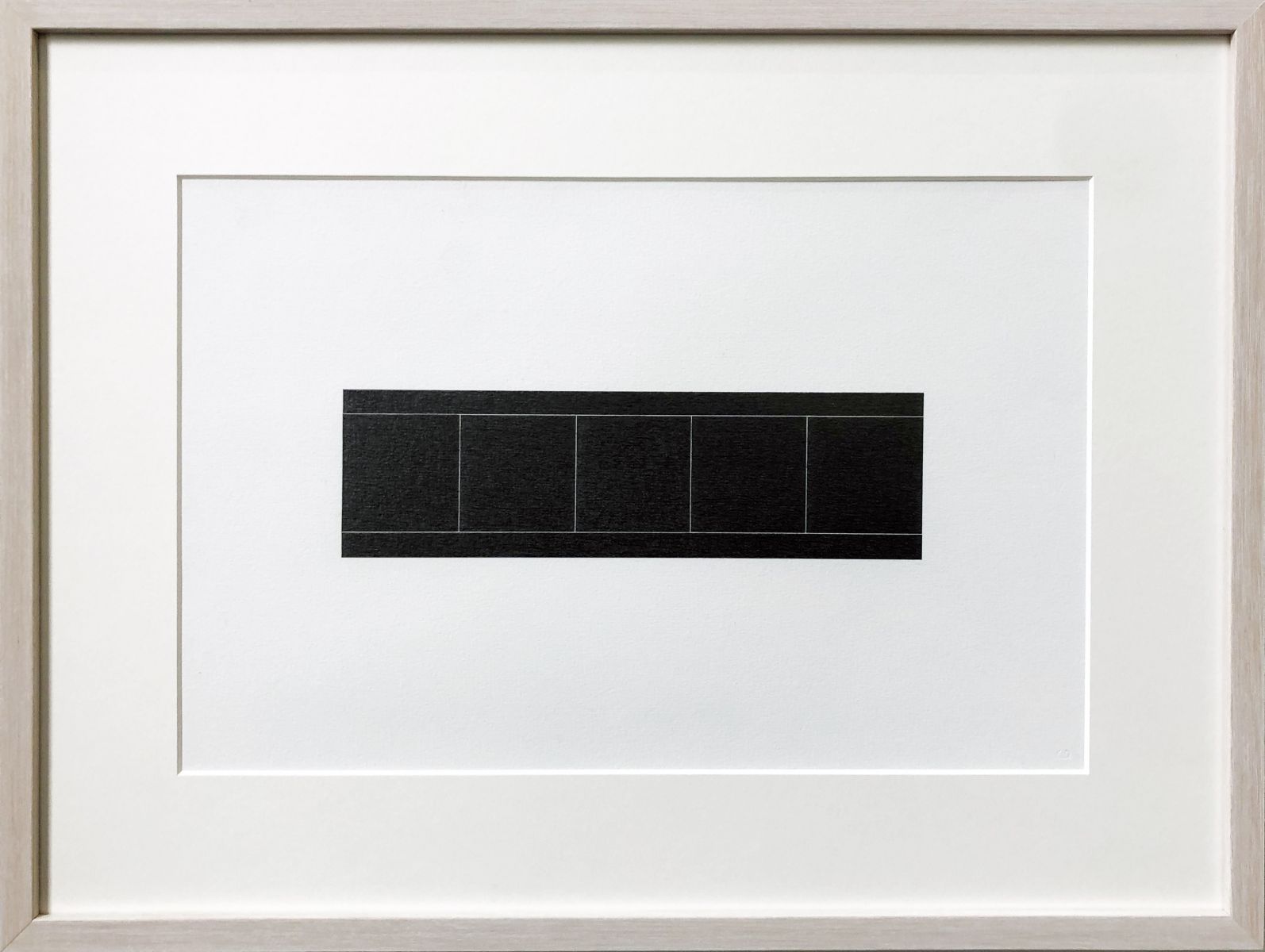
Cor van Dijk
Untitled (2023)
Drawing, pencil on paper
40,5 x 54 cm
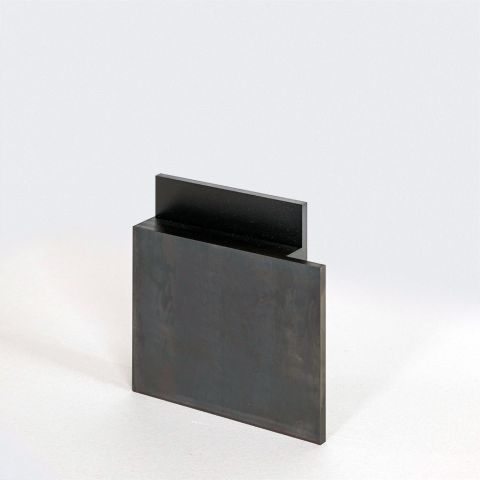
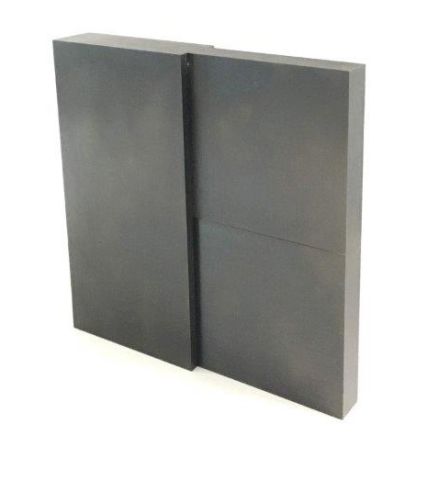
Cor van Dijk Cor van Dijk
Untited (2020) Untitled (2023)
Steel (Ed. 7/7) Steel, 2 parts (Ed. 7/7)
18 x 18 x 3 cm 18 x 18 x 3 cm (in this setup)
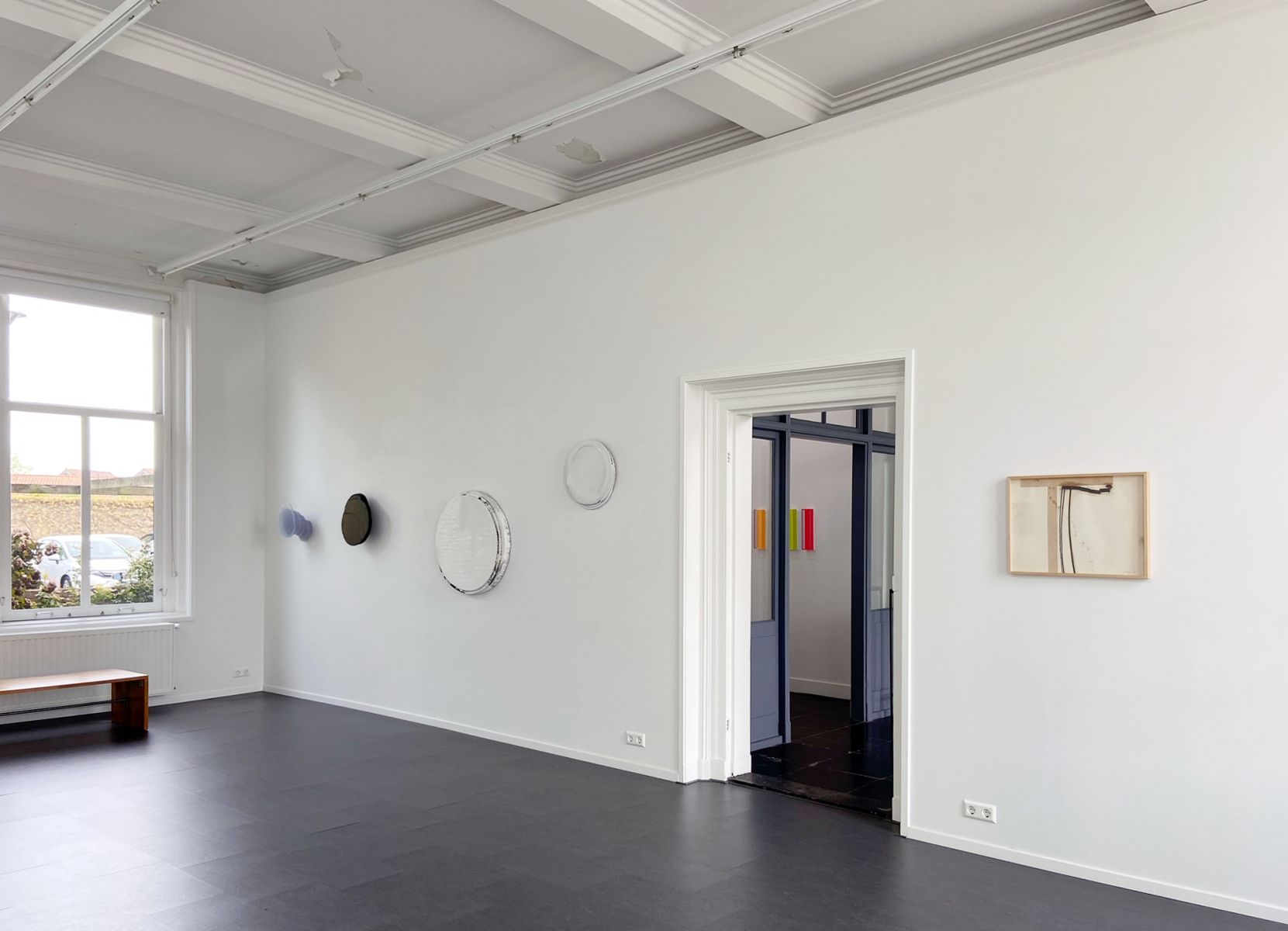
CHANGER # 2 - Ton van Kints, Paul Gees
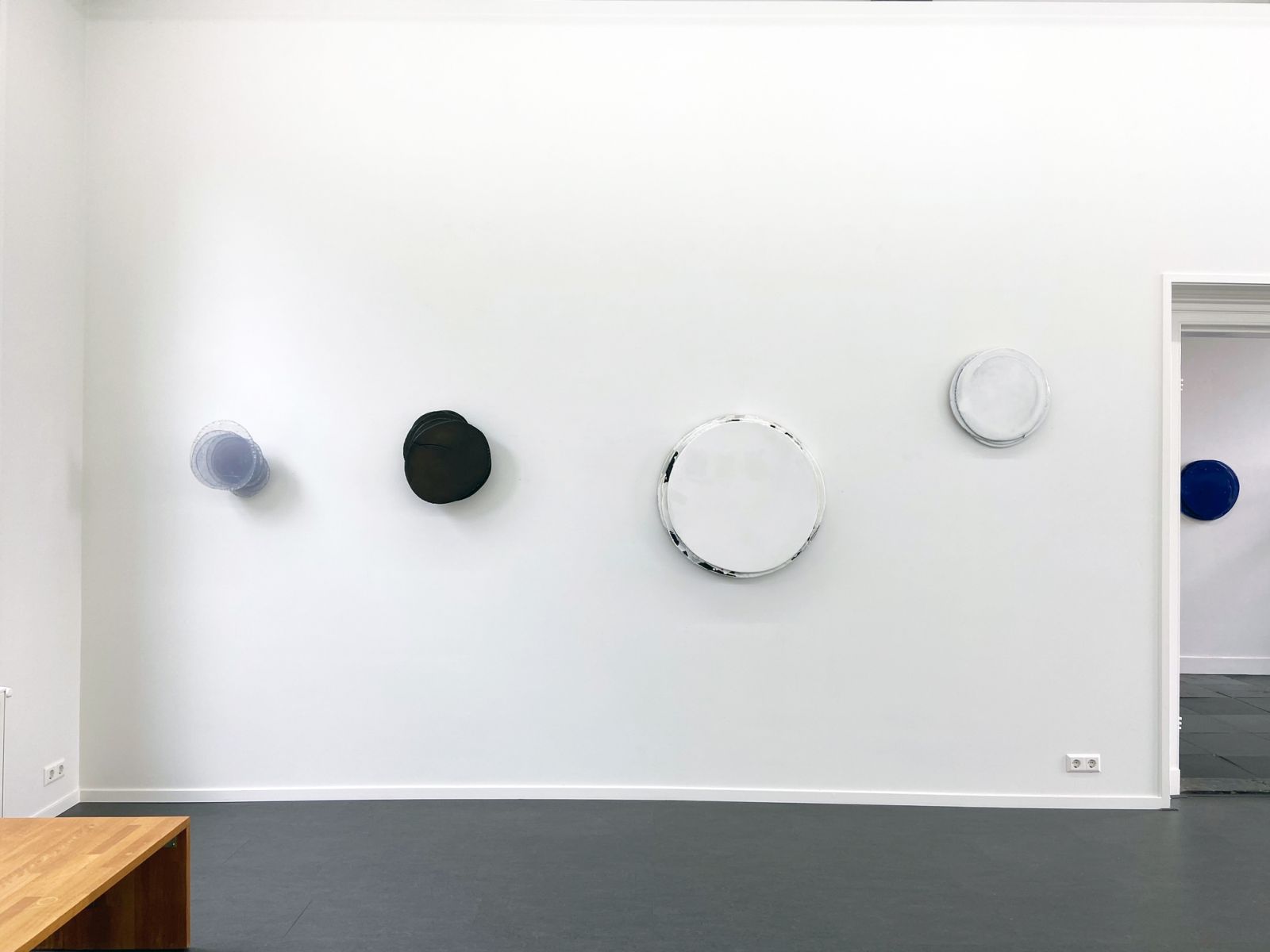
CHANGER # 2 - Ton van Kints
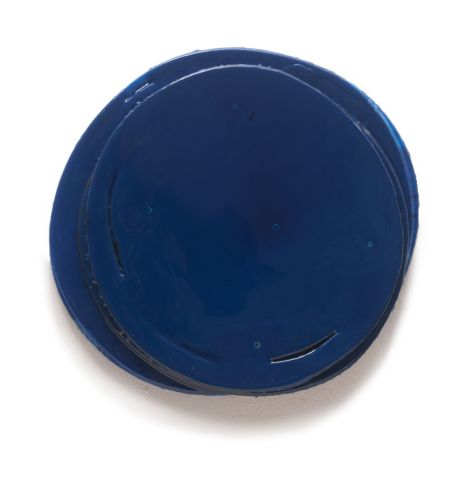
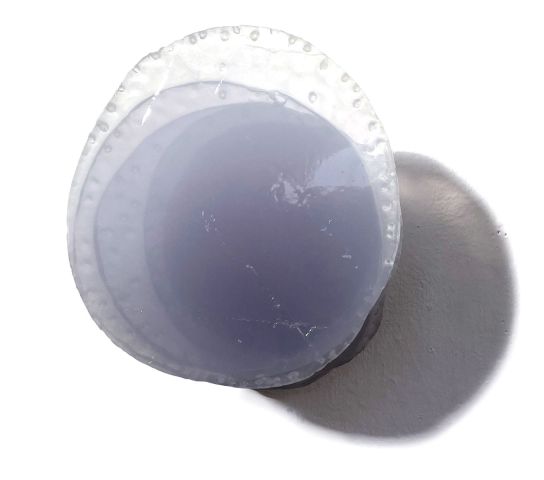
Ton van Kints Ton van Kints
1 + 1 + 1 (back to back, face to face) # 8 (2006-2024) 'Package # 7' (2023)
DD lacquer, epoxy, paint, plywood Polyester, pigment, DD lacquer ∅ 18 x 32 cm
∅ 54 x 7 cm
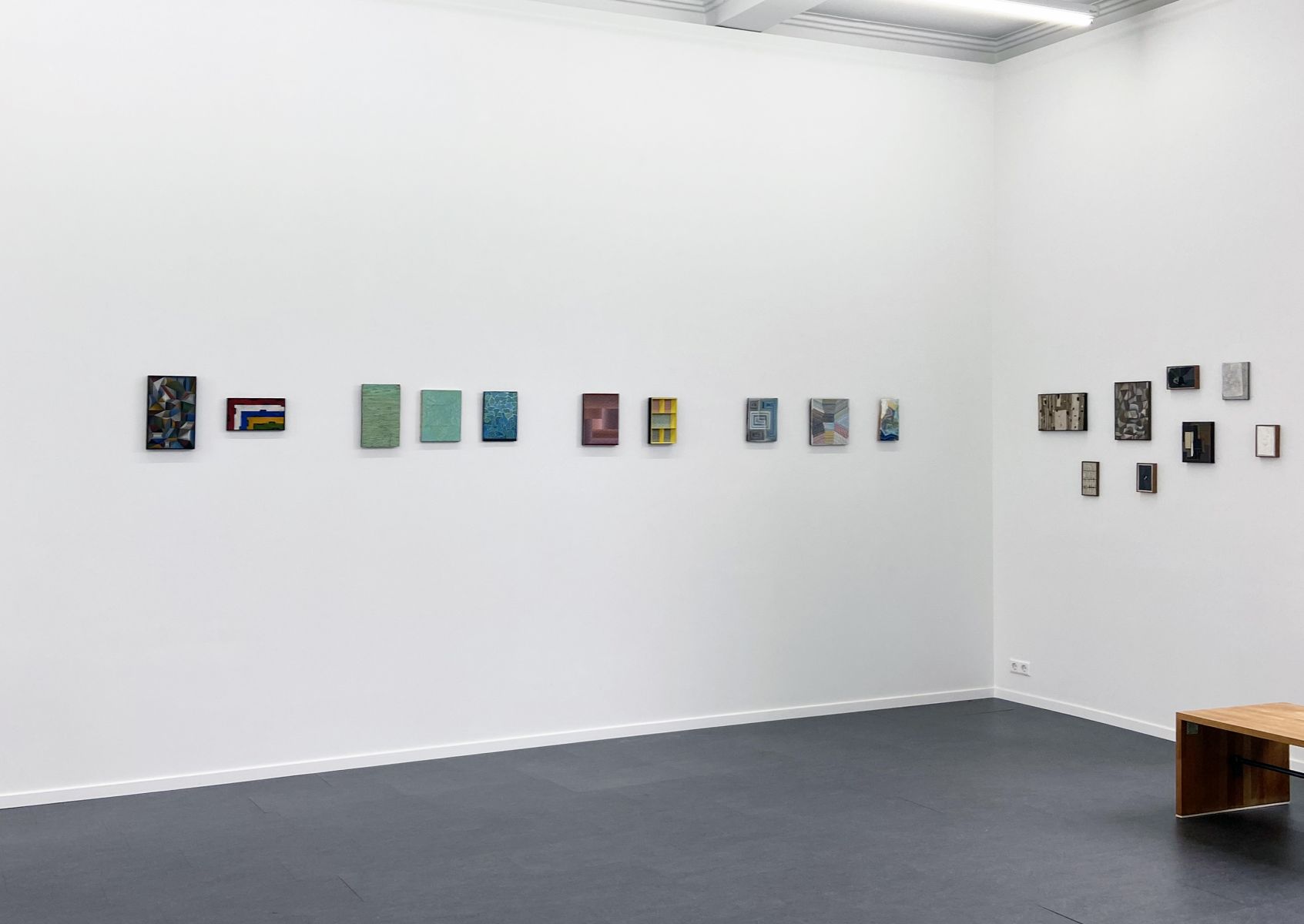
CHANGER # 2 - P. B. Van Rossem
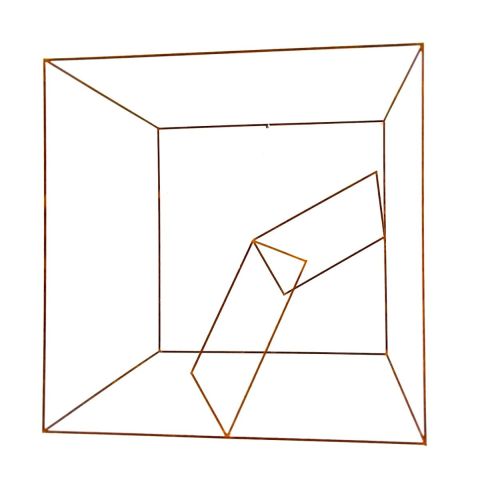
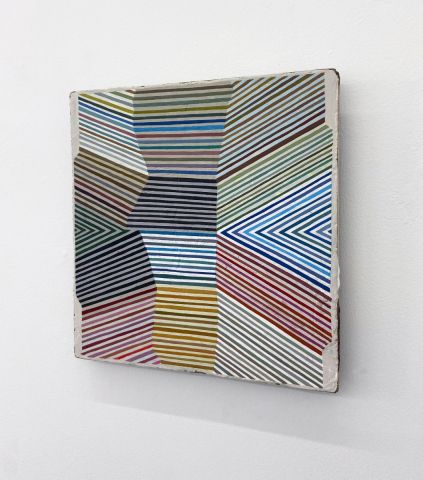
Anne Rose Regenboog P. B. Van Rossem
'Cube' Untitled (2007/2024)
Steel wire, rust patina Vinylpaint, gesso, plywood
20 x 20 x 20 cm 23,7 x 19 cm

CHANGER # 2 - Anne Rose Regenboog
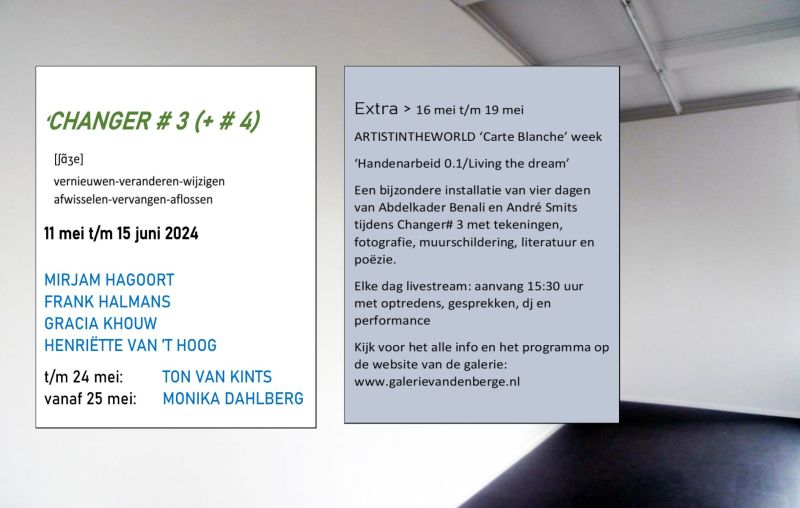
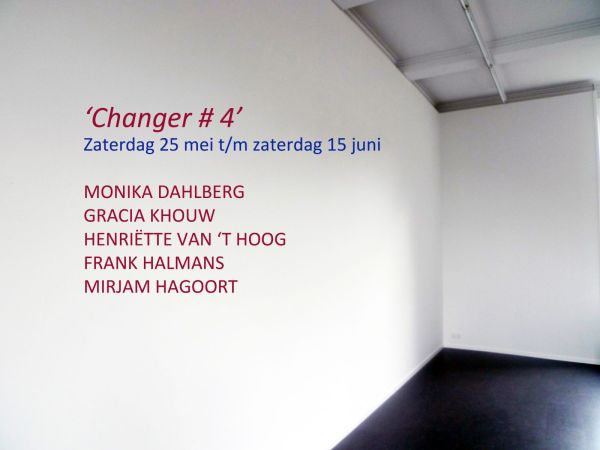
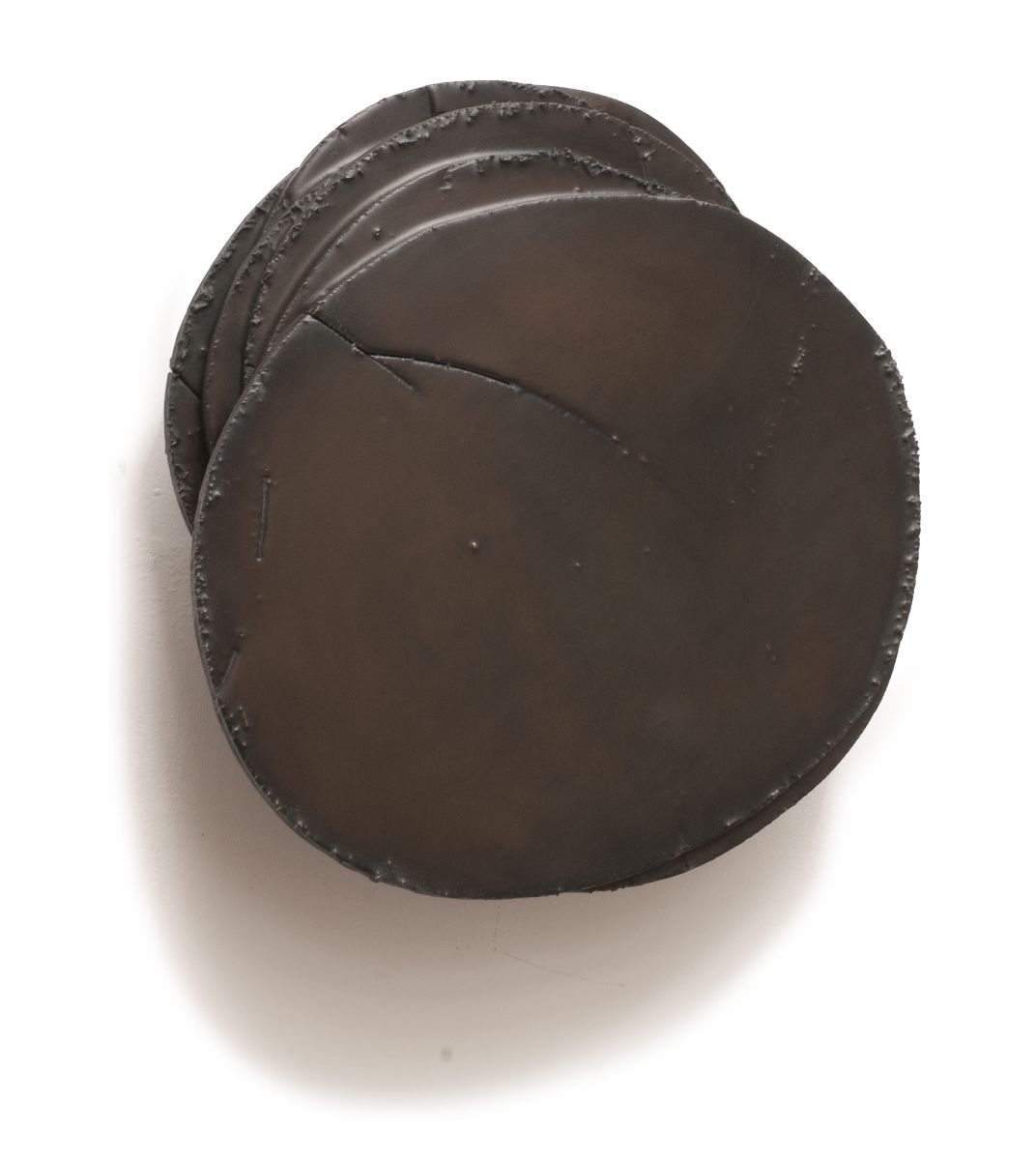
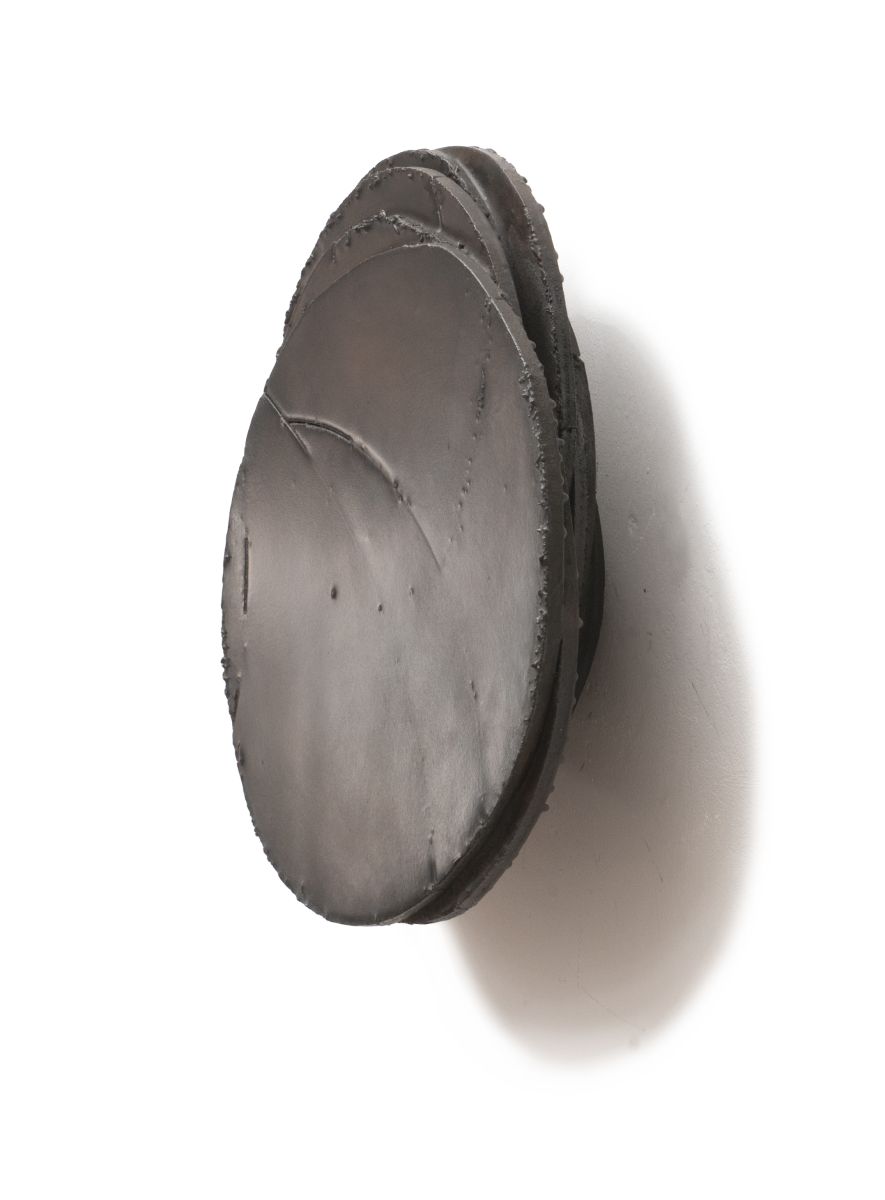
Ton van Kints
‘Package # 5 /Volo di rondini’ (2023)
Wood/various materials, bronze metallized
46 x 45 x 13 cm
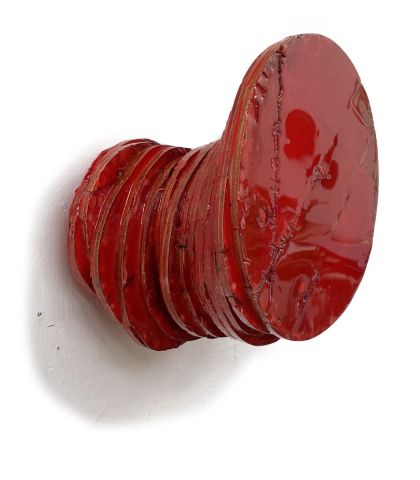
Ton van Kints
Package # 7 - Sierra Leonse ruit’ (2000/2022)
Epoxy on plywood
Ø 18 x 32 cm
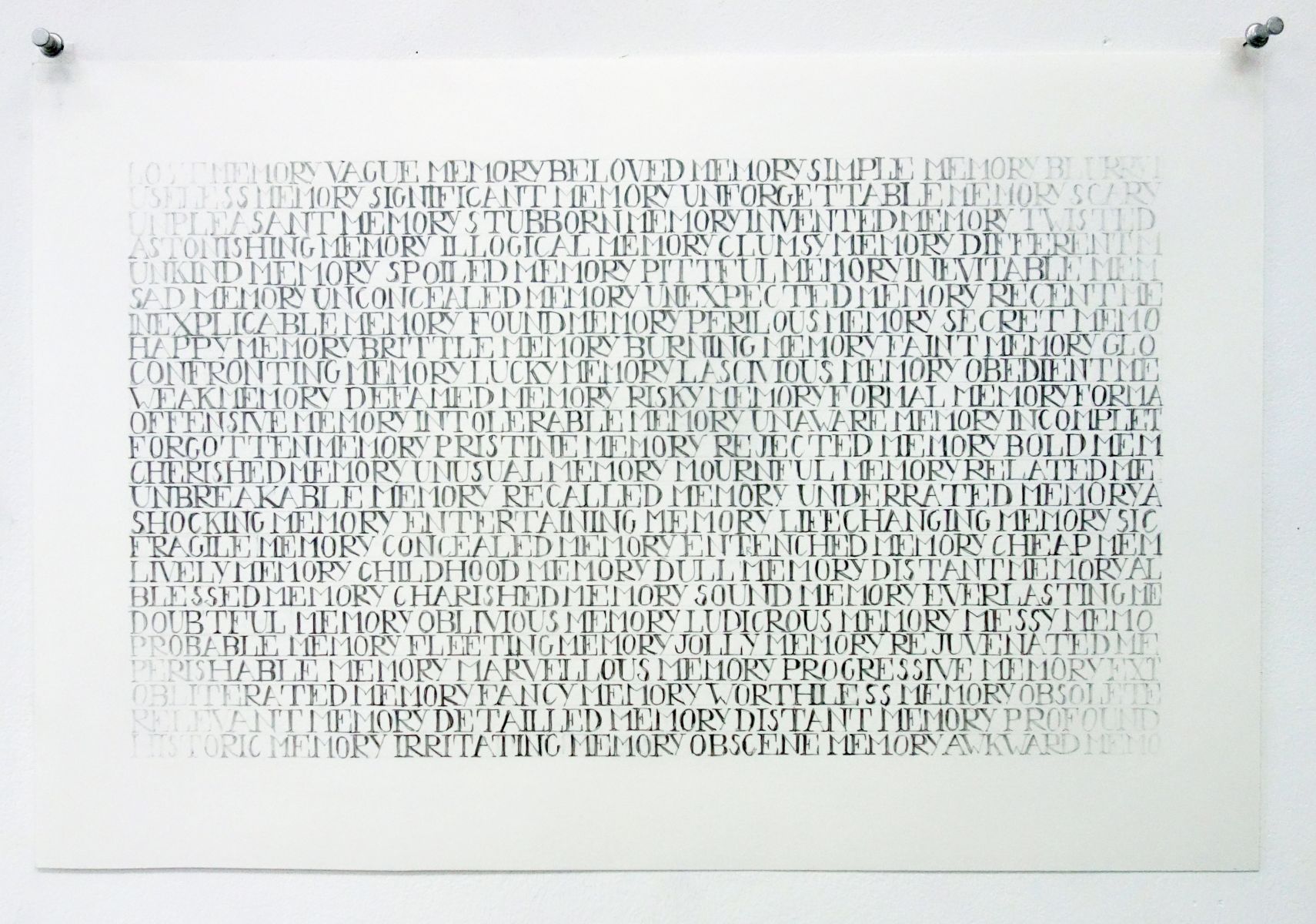
Frank Halmans
'Drawing from memory (English version / LOST) 2023
Pencil on paper
32 x 55 cm
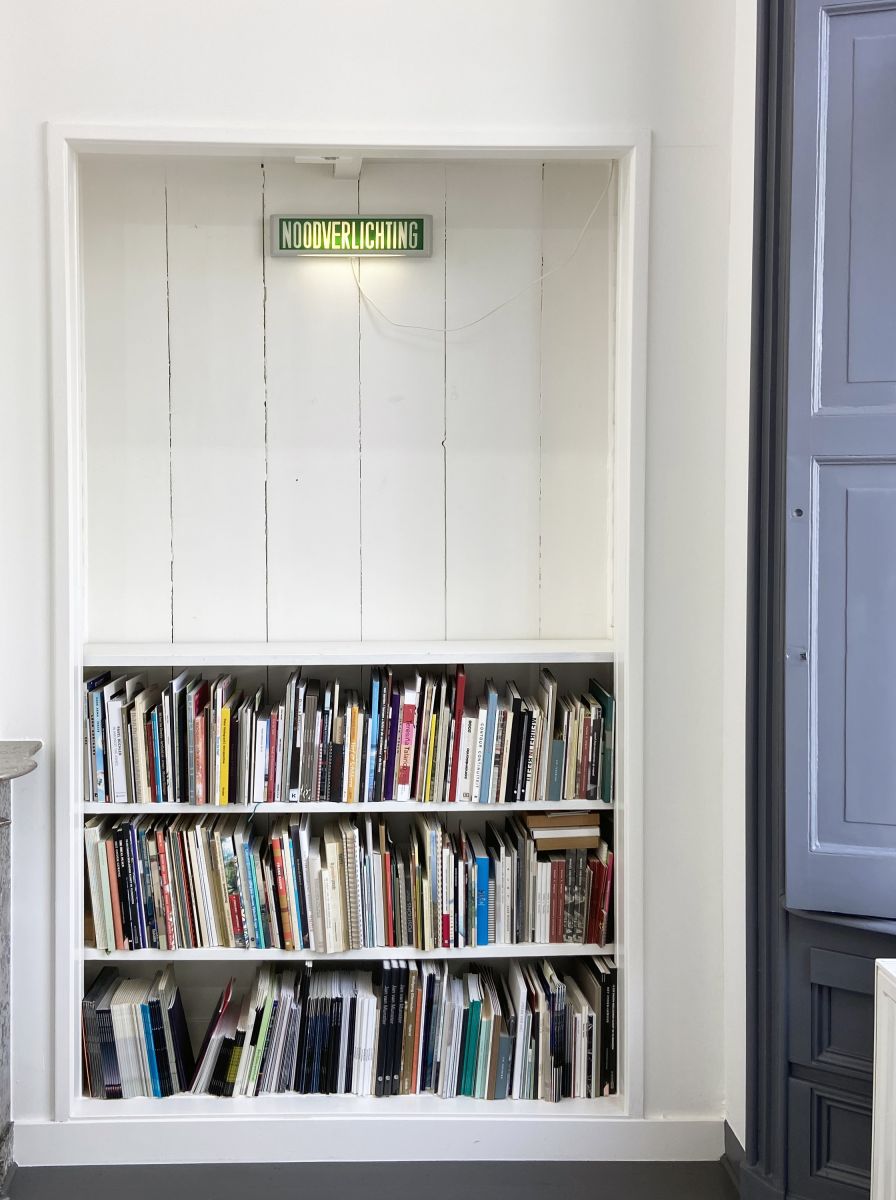
Frank Halmans
Noodverlichting (1999)
Staal, plexiglas, elektronica, lak
44 x 10.5 x 5 cm
Frank Halmans
'... In zijn werk onderzoekt Halmans vaak de huiselijke wereld en beschouwt hij een thuis als een plek waar het leven schommelt tussen een publieke en een private sfeer. Halmans gaat na hoe we als mens deze twee verschillende gebieden bewonen. Men zou de kunstenaar een 'huiskundige' kunnen noemen: hij is een volleerd timmerman, loodgieter en metselaar en weet bijgevolg alles over huizen. Binnen zijn werk echter nemen huizen of delen ervan een soort droomgestalte aan.
De grenszone tussen herinnering en feitelijke waarneming is het domein van Halmans. Een schemergebied tussen waken en slapen, mijmeren en wegdromen. De alledaagse voorwerpen - tafels, stoelen, bedden, lampen en wekkers - die hij vindt, zelf maakt of op rommelmarkten koopt, plaatst hij in een context die ze een andere betekenis geeft. Door een spel te spelen met objecten worden spullen in Halmans' wereld getransformeerd tot persoonlijke herinneringsbeelden. Herinneringen zijn dan ook van essentieel belang voor de kunstenaar. 'Vergeten is alarmerend', zegt hij daarover, 'alles is tevergeefs geweest, zinloos, als je met vergeten tevreden zou zijn'.
'... In his work, Halmans often examines the domestic world, viewing a home as a place where life oscillates between a public and a private sphere. Halmans explores how we as humans inhabit these two different spheres. One could call the artist a "home expert": he is an accomplished carpenter, plumber and bricklayer and consequently knows all about houses. Within his work, however, houses or parts of them take on a kind of dreamlike form.
The border zone between memory and actual perception is Halmans' domain. A twilight zone between waking and sleeping, musing and daydreaming. He places everyday objects - tables, chairs, beds, lamps and alarm clocks - that he finds, makes himself or buys at flea markets, in a context that gives them a different meaning. By playing a game with objects, things in Halmans' world are transformed into personal images of memory. Memories, then, are essential to the artist. 'Forgetting is alarming,' he says of it, 'everything has been in vain, pointless, if you would be satisfied with forgetting.'
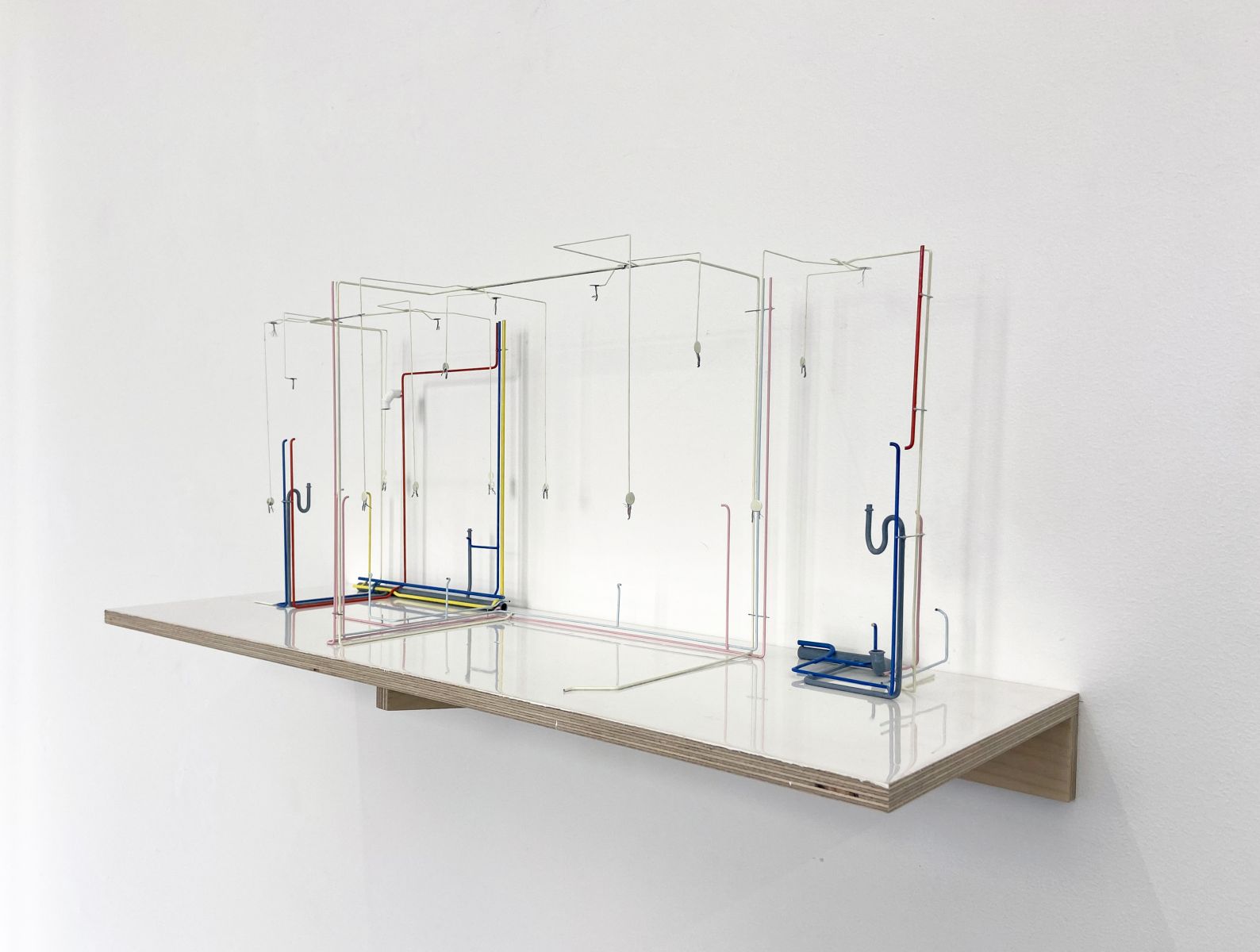
Frank Halmans
‘Gebilde 37’ (2023) - Cycle, kitchen/dining room/toilet
Brass, bronze, steel, lacquer
56 x 20 x 25 cm
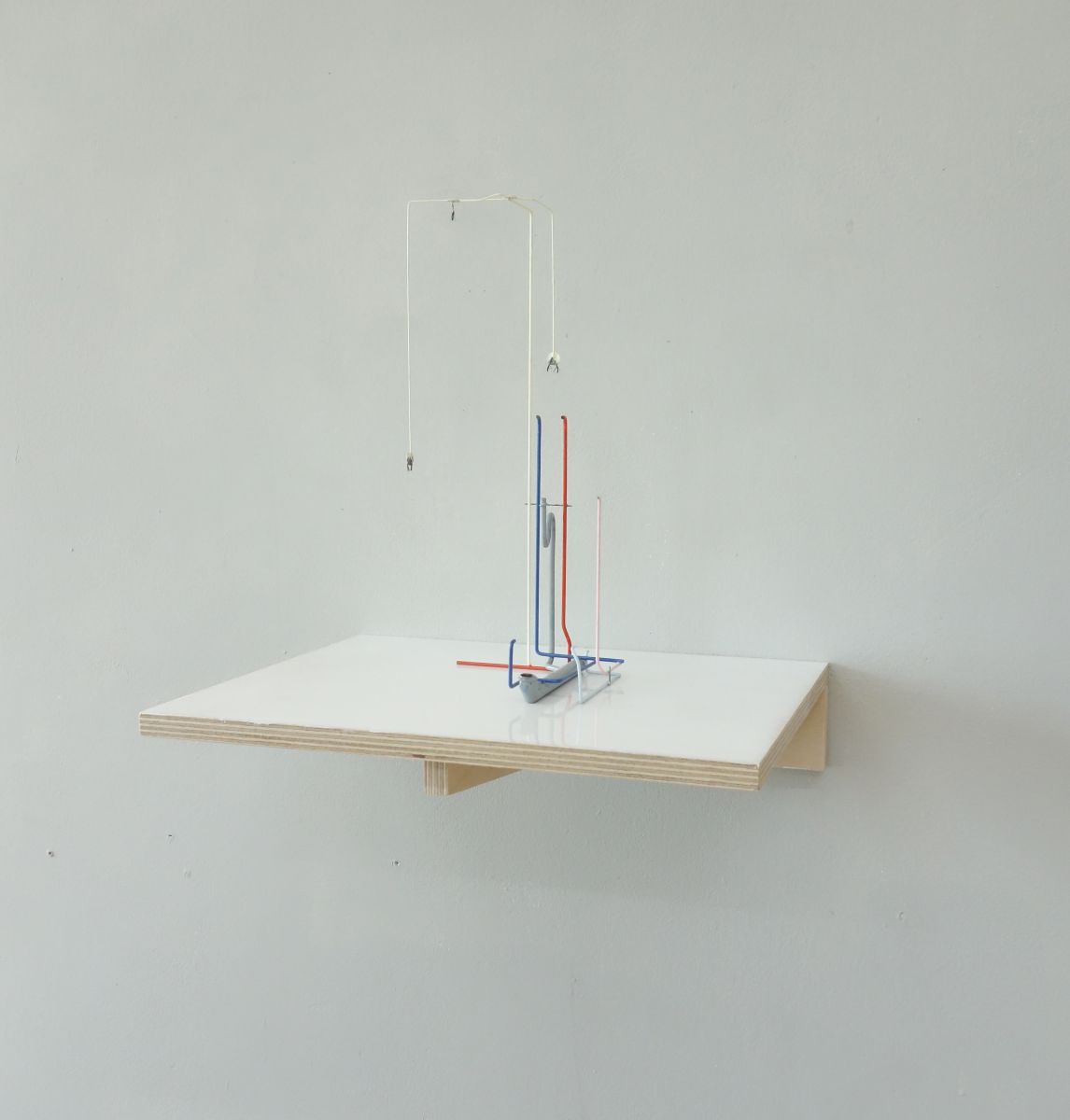
Frank Halmans
Gebilde # 34 - Toilet
Brass, bronze, steel, paint
25 x 10 x 10 cm
Gebilde
Een soort schaalmodellen. Halmans toont u het voor het oog verborgen leidingwerk (gas, water, elektra, riolering) dat zich bevindt in de muren, vloeren en plafonds van vertrekken in gebouwen en woonhuizen.
Een wonderschoon lijnenspel in kleur - dat associaties oproept met De Stijl. Uitgangspunt was de referentie aan anatomische modellen zoals het vatensysteem of zenuwbanen.
Gebilde
A kind of scale models.Halmans shows you the pipework (gas, water, electricity, sewage), hidden from the eye, that is found in the walls, floors and ceilings of rooms in buildings and homes.
A wonderful play of lines in color - evoking associations with De Stijl. The starting point was the reference to anatomical models such as the vascular system or neural pathways.
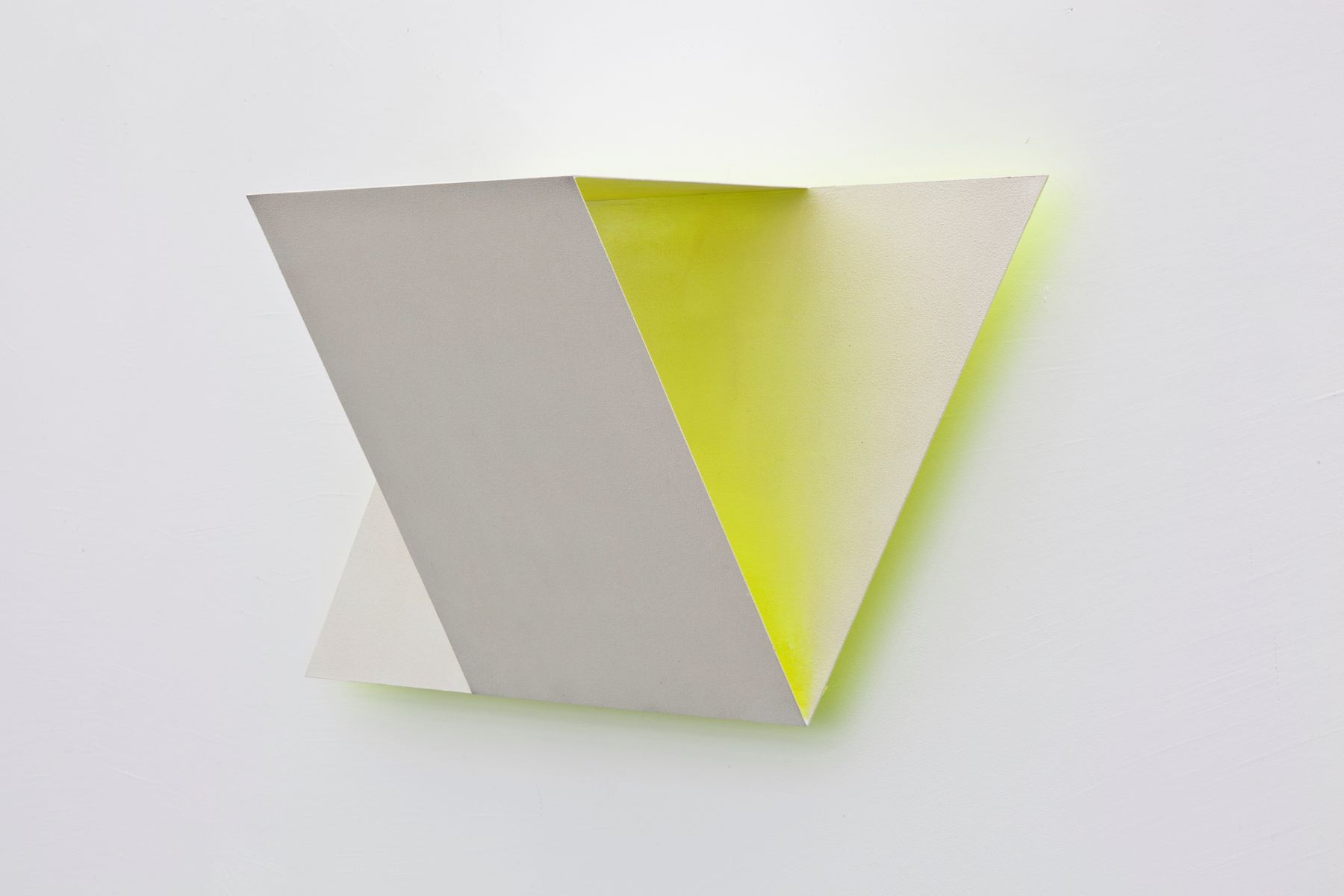
Henriëtte van 't Hoog
‘Xtra’ (Yellow) - 2012
Acrylic on zinc
55 x 26 x 18 cm
Henriëtte van 't Hoog
Bij het geometrisch abstracte werk van Henriëtte van ’t Hoog verlies je vaak je evenwicht. Ze speelt met het perspectief van kubusachtige vormen, met hun driedimensionaliteit, hun kleur en licht.
Als je langs deze objecten loopt, veranderen hun vormen, hun perspectief stort in. De reflecterende verf op de achterkant van het object straalt zijn kleur uit op de muur. De reflectie benadrukt zijn ruimtelijkheid en geeft het ding een poëtische annotatie.
Het werk van Henriëtte van ’t Hoog is dan ook concreet en niet concreet.
Henriëtte van ’t Hoog maakt muurbeelden, aquarellen, vloerobjecten, muurschilderingen en videowerken.
In the geometric abstract work of Henriëtte van 't Hoog, you often lose your balance. She plays with the perspective of cube-like forms, with their three-dimensionality, their color and light.
When you walk past these objects, their shapes change, their perspective collapses. The reflective paint on the back of the object radiates its color onto the wall. The reflection emphasizes its spatiality and gives the thing a poetic annotation.
Henriëtte van 't Hoog's work, then, is concrete and not concrete.
Henriëtte van 't Hoog creates wall sculptures, watercolors, floor objects, murals and video works.
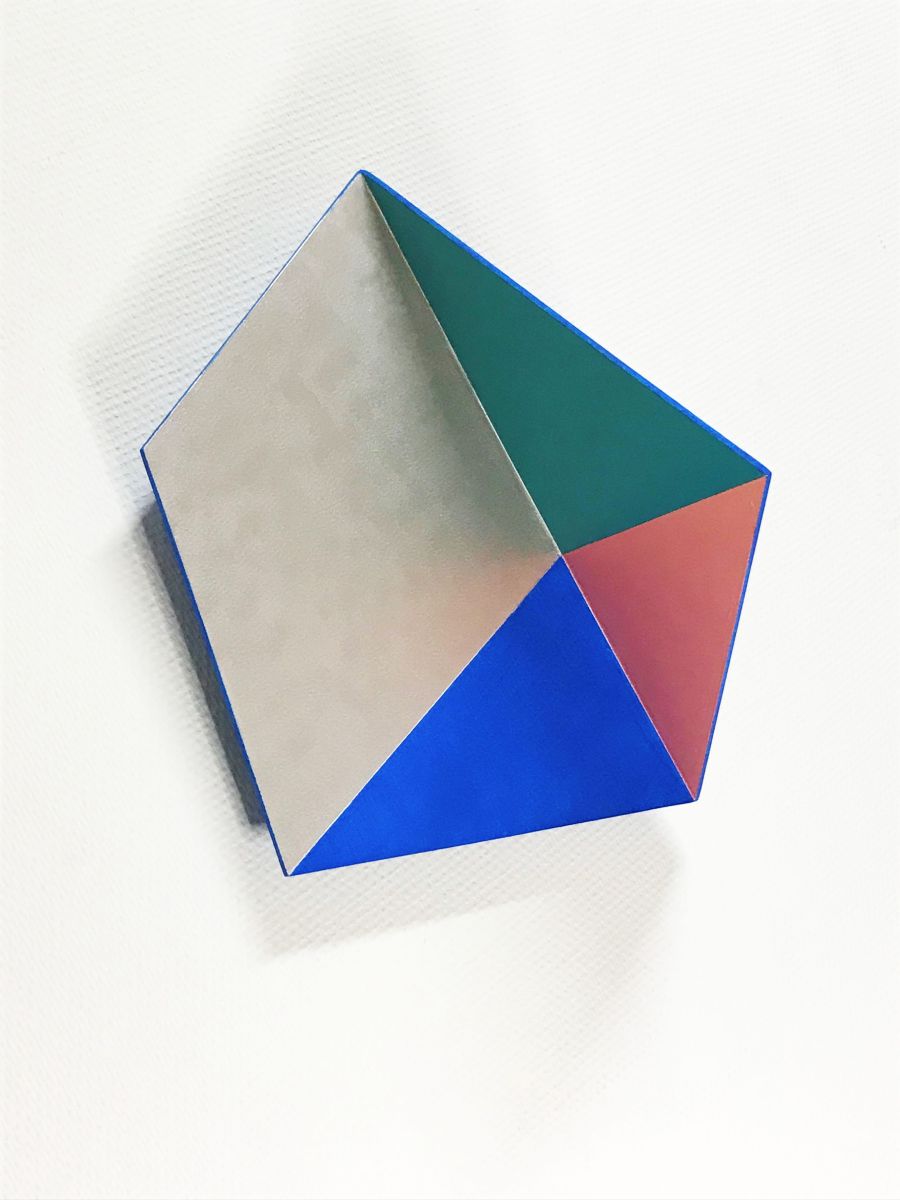
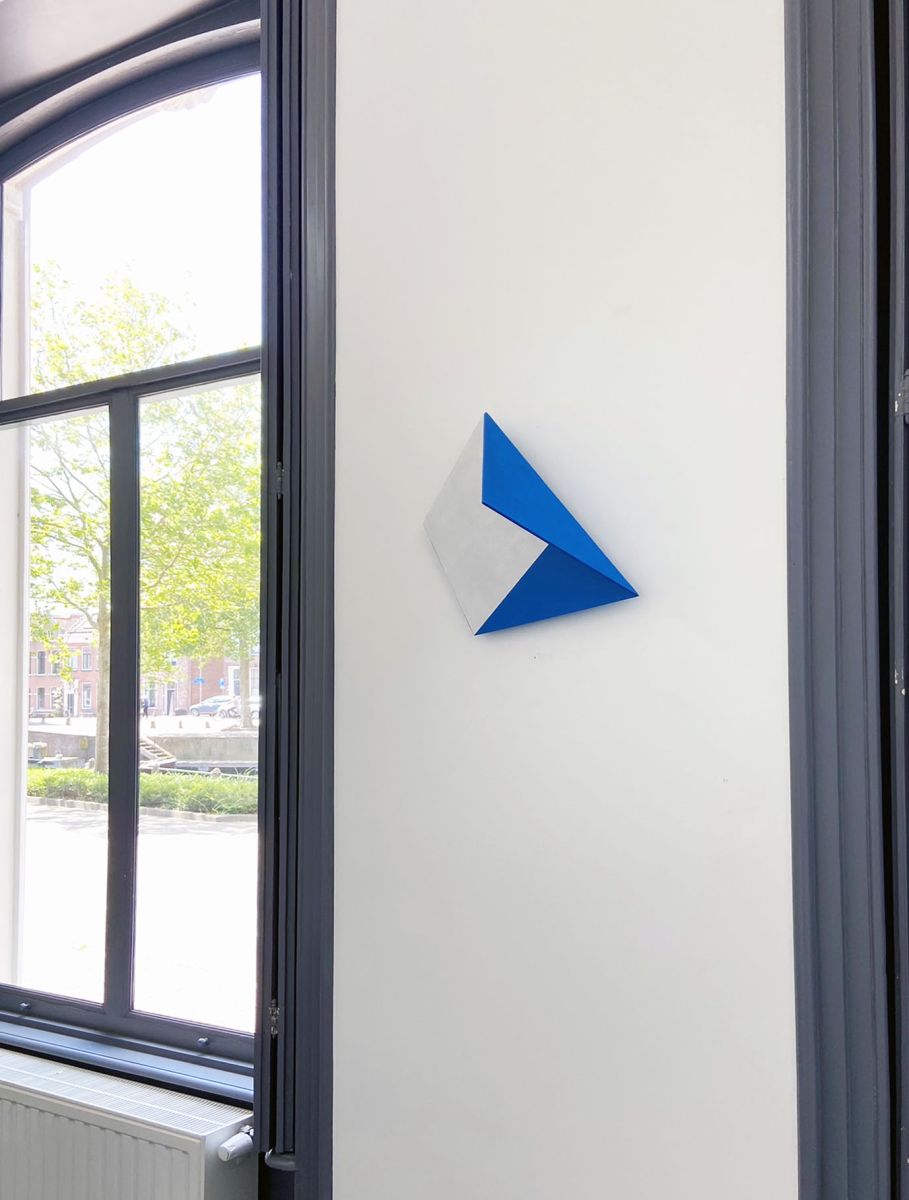
Henriëtte van 't Hoog
‘Wing’ (2023)
Acrylic on MDF, 44 x 27 x 24 cm
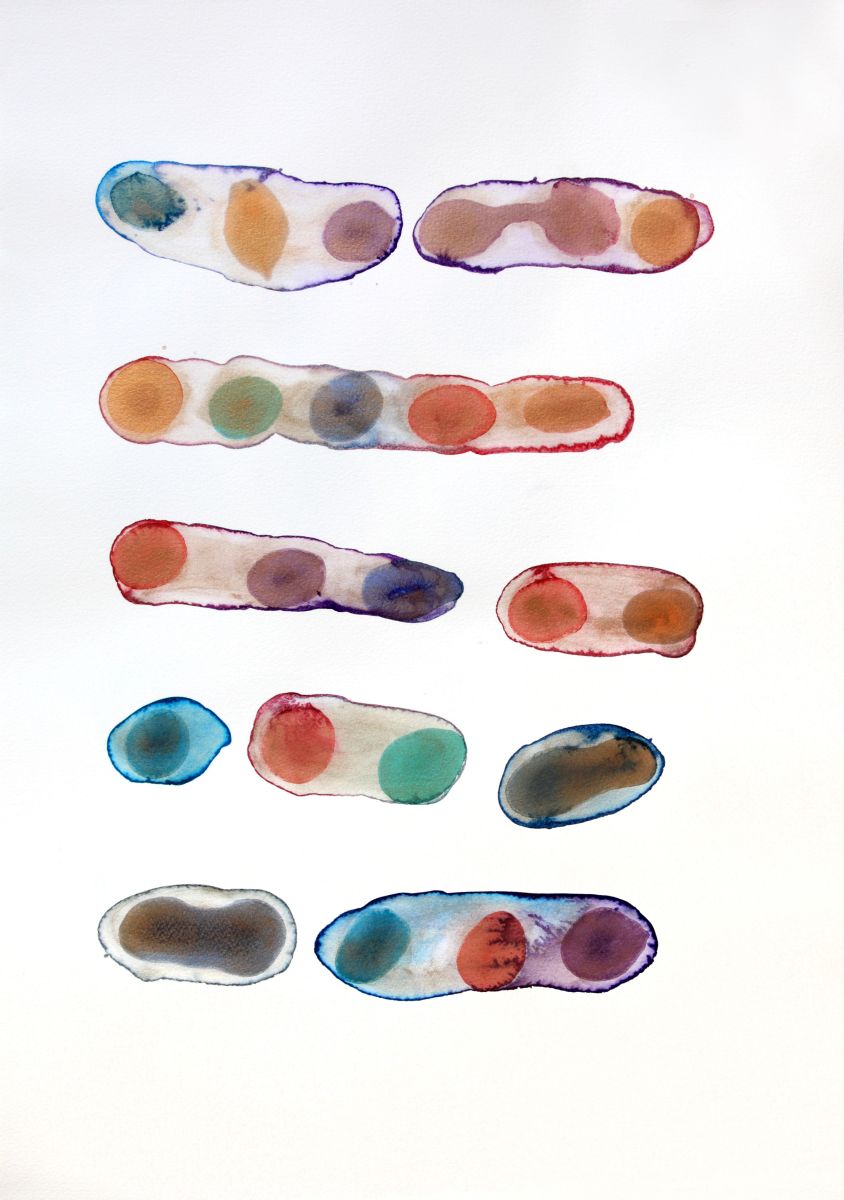
Henriëtte van 't Hoog
Untitled (2022)
Aquarel - framed
sheet size 70 x 53 cm
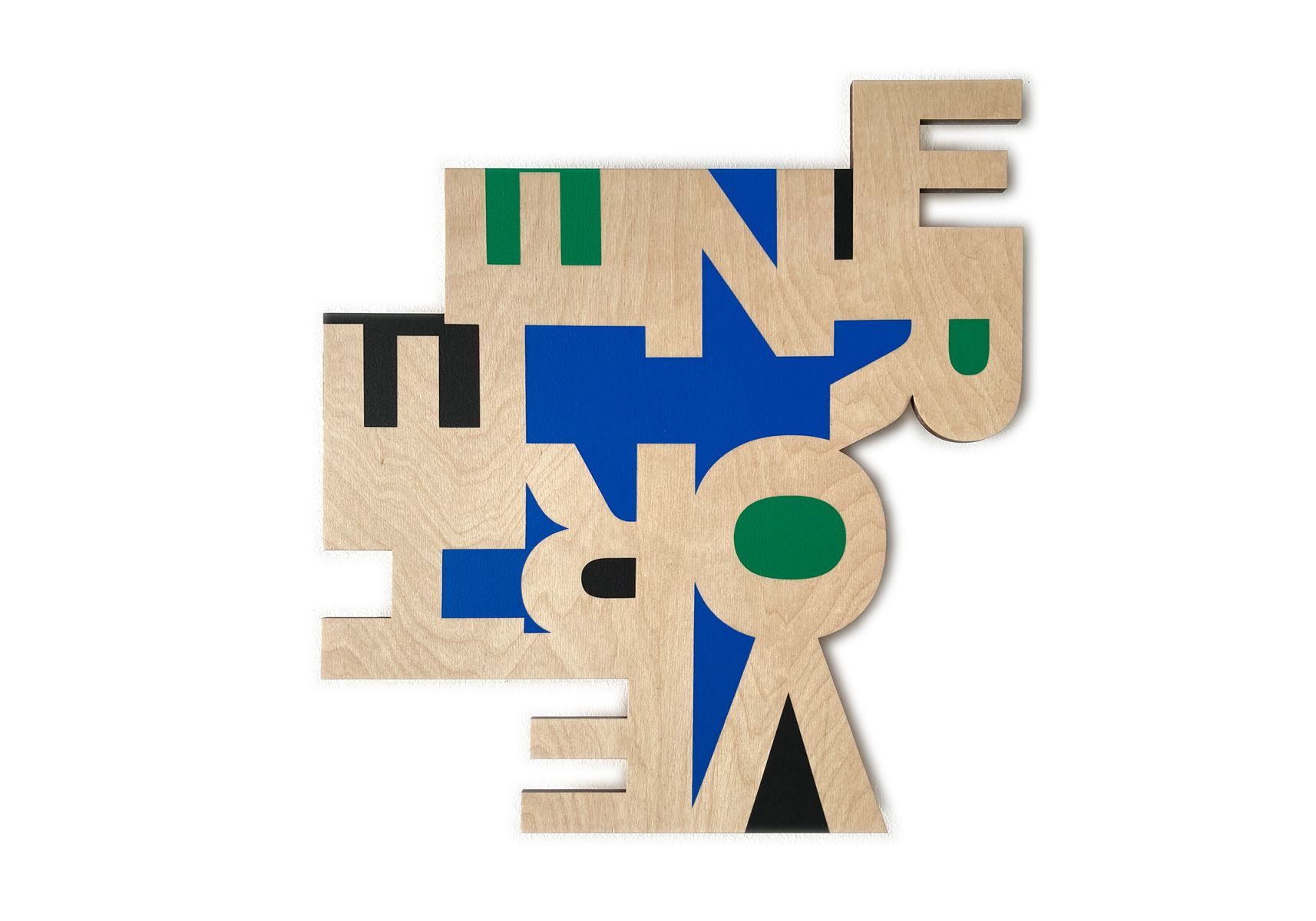
Gracia Khouw
'OVER [24-04-2021] - Blue (F1) Ed. 1/3
Acrylic on laser-cut birch plywood
33 x 36 x 2 cm
%20adj%2001.jpg)
Gracia Khouw
BUKU – BOEK – BOOK : 108 Indonesian, Dutch and English ( 4-letter) word images with the same meaning.
The gallery presents a selection of 36 word images - Triptychs (same word in 3 languages). Ed. 8
Giclée prints, 27.9 x 21.6 cm
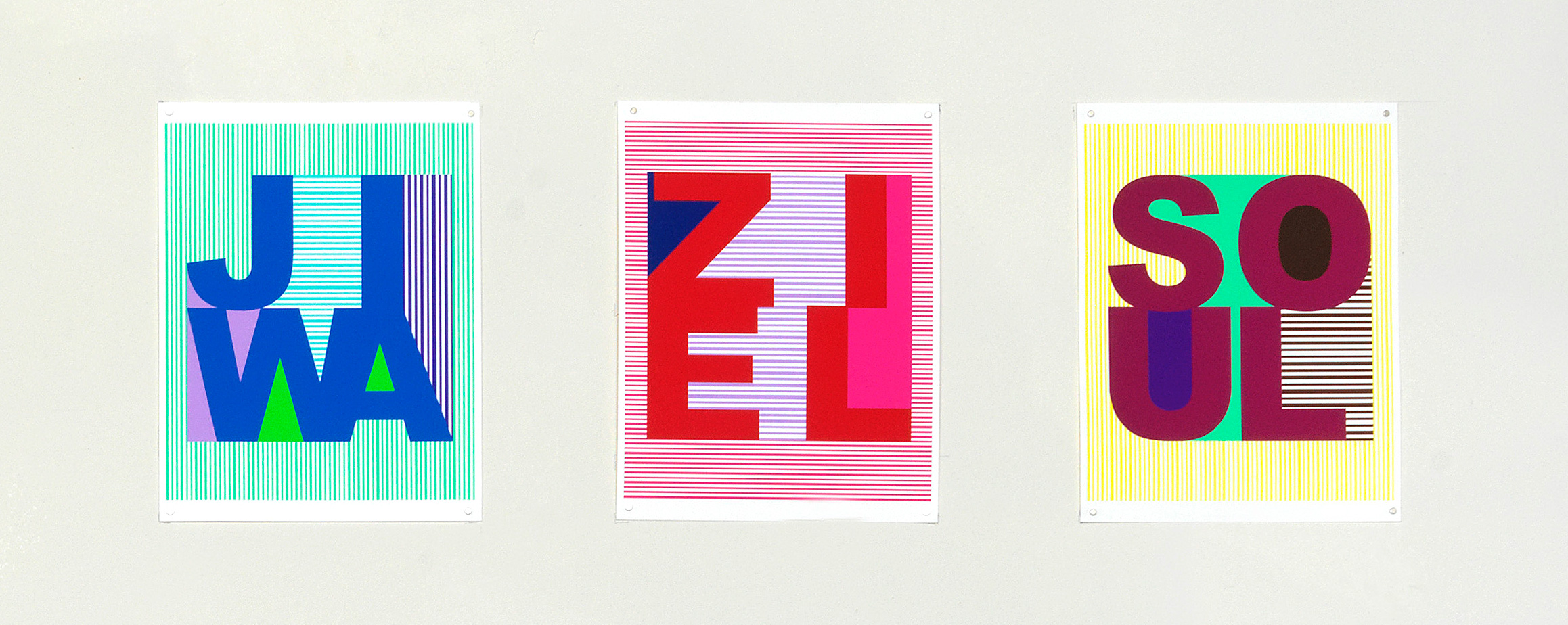
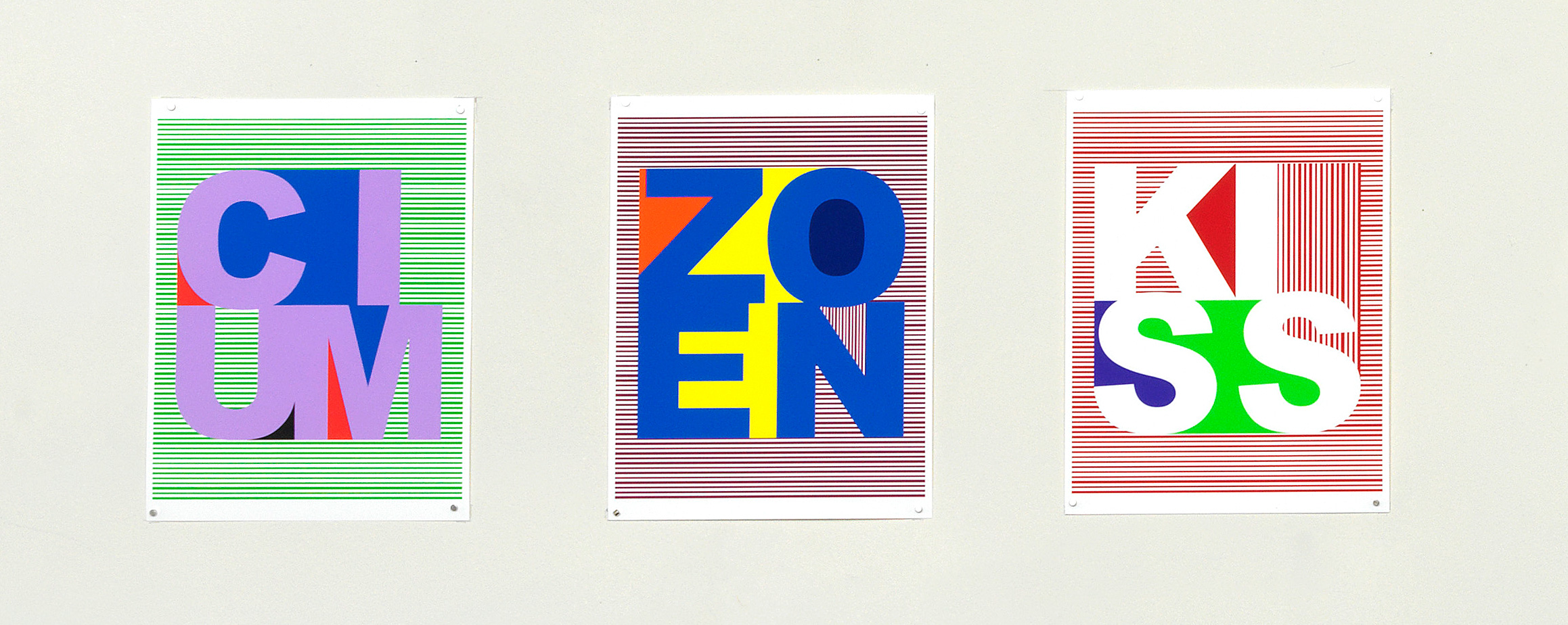
Gracia Khouw
Gracia Khouw (1967) werkt in verschillende media: schilderijen, wandschilderingen, digitale prints en animaties. In opdrachtsituaties in de openbare ruimte zoekt ze op verschillende manieren verbinding tussen plaats en gebruikers van de ruimte, zoals architectonische kenmerken of geschiedenis van de locatie.
In haar letterbeelden gebruikt Gracia Khouw visuele taal in onze beeldcultuur.
Taalregels en leesbaarheidsvoorschriften worden ondersteboven gekeerd om de complexe relatie tussen kijken, lezen en denken te ontleden. In haar composities met letters en tekens hanteert ze strikte ordeningsprincipes, zoals symmetrie en rastervorm, beeldrijm of fragmentaties.
De werken verschijnen als visuele poëzie waarin klank een belangrijke rol speelt.
VIER LETTERS
Wat kun je zeggen met vier letters? Gracia Khouw is gefascineerd door vierletterwoorden. Beknopte woorden die naar objecten of personen verwijzen, maar ook woorden die gevoelens of abstracte begrippen overbrengen. De vierletterwoorden symboliseren snel, compact, efficiënt en standaard, passend bij deze tijd. Ze begon vanaf 2017 de woorden te verzamelen; eerst de Engelse en vanaf 2022 is de zoektocht uitgebreid met Nederlandse en Indonesische woorden, de talen waar ze in thuis is.
WOORDBEELD
Wat is een woordbeeld? Het woord functioneert als een architectonisch raamwerk, als vier letters die samen iets betekenen. Tegelijkertijd benadert ze de letters als tekens die uit horizontalen, verticalen en rondingen bestaan. In de ordeningen van dikke en dunne lijnen en van gekleurde vlakken, gaat het haar om de interactie met de restruimte en onderlinge samenhang. Je ervaart een kantelpunt tussen woord en beeld, betekenis en vorm.
TALEN
Hoe komen de drie talen bij elkaar? Binnen in de verzameling vond Khouw 36 woorden waar de betekenis van de woorden samenvallen; ze vormen het uitgangspunt voor nieuwe woordbeelden, die zijn uitgevoerd als giclée prints in verschillende formaten en voor animaties. Daarnaast is ook de publicatie BUKU-BOEK-BOOK verschenen.
Gracia Khouw (1967) works in different media: paintings, murals, digital prints and animations. In commissioned situations in public space, she seeks to connect place and users of the space in different ways, such as architectural features or history of the location.
In her letter images, Gracia Khouw uses visual language in our visual culture.
Rules of language and legibility are turned upside down to dissect the complex relationship between looking, reading and thinking.
In her compositions with letters and signs, she uses strict ordering principles, such as symmetry and grid form, image rhyme or fragmentation. The works appear as visual poetry in which sound plays an important role.
FOUR LETTERS
What can you say with four letters? Gracia Khouw is fascinated by four-letter words. Concise words that refer to objects or people, as well as words that convey feelings or abstract concepts. The four-letter words symbolize fast, compact, efficient and standard, appropriate to our times. She began collecting the words starting in 2017; first the English ones and from 2022 the search has expanded to include Dutch and Indonesian words, the languages she is at home in.
WORD IMAGE
What is a word image? The word functions as an architectural framework, as four letters that together mean something. At the same time, she approaches letters as signs made up of horizontals, verticals and curves. In the arrangements of thick and thin lines and of colored surfaces, she is concerned with the interaction with the residual space and mutual coherence. You experience a tipping point between word and image, meaning and form.
LANGUAGE
How do the three languages come together? Inside the collection, Khouw found 36 words where the meanings coincide; they are the starting point for new word images, which have been executed as giclée prints in different formats and for animations. Also released is the publication BUKU-BOEK-BOOK.
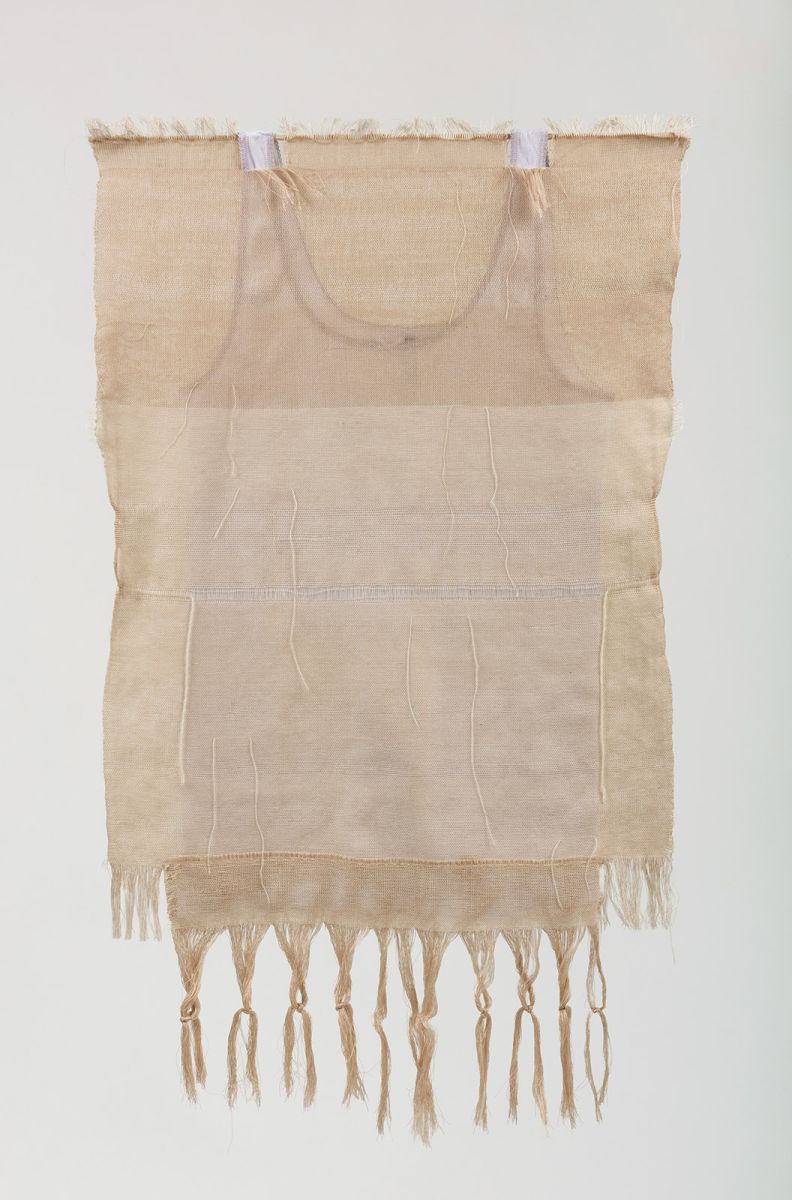
Mirjam Hagoort
Untitled (2024-07) 2024
Fabric, cotton, shirt cotton
90 x 53 cm
.jpg)
Mirjam Hagoort
Untitled [2024-10] 2024
Fabric, cotton, India ink, oil paint
90 x 75 cm
Mirjam Hagoort
Er staat een tent van mistig kalkpapier en behangerslijm rond een mathematisch skelet van bamboestokken middenin het lokaal van Textiel Monumentaal. Misschien zet deze eerste opdracht op de Haagse Academie al meteen de toon. Daarna gaat haar werk in allerlei varianten steeds weer over kortstondig onderdak en sporen van leven.
Al fotograferend, tekenend, schilderend, lijmend, riso-printend, frotterend en wevend ontstaan er bouwsels van papier en textiel, verf en inkt, grafiet en glansgaren, was en glas. Resultaten van nieuwsgierig onderzoek naar een architectuur van verval en wederopbouw, huizig en stads, herbergzaam en onherbergzaam, donker en licht. Altijd weer thuiskomend in ritmes en verhoudingen van de menselijke maat. Abstract en figuratief tegelijk.
Zoals het beeld van dat archetypische woonblok, gefundeerd op een toevallige, maar zeer welkome naad in de stof. Beton brut in een landschap van textiel met print en rafel, gevat in een grid van rode ruiten van een versleten doek. Een zachtgele laag bijenwas houdt alles bij elkaar – zolang als ‘t duurt.
Sinds het weefgetouw in haar atelier staat komen er nieuwe metamorfosen aan het licht. Bewegingen van chaos naar orde en vice versa. Stof wordt draad en draad weer stof.
A tent of foggy chalk paper and wallpaper glue stands around a mathematical skeleton of bamboo sticks in the middle of the Textiel Monumentaal classroom. Perhaps this first assignment at the Hague Academy immediately sets the tone. After that, her work in all kinds of variations is always about ephemeral shelter and traces of life.
While photographing, drawing, painting, gluing, riso-printing, frottering and weaving, she creates constructions of paper and textile, paint and ink, graphite and glitter yarn, wax and glass. Results of curious research into an architecture of decay and reconstruction, domestic and urban, hospitable and inhospitable, dark and light. Always coming home to rhythms and proportions of the human scale. Abstract and figurative at the same time.
Like the image of that archetypal residential block, founded on an accidental but very welcome seam in the fabric. Concrete brut in a landscape of textiles with print and fray, encased in a grid of red checks from a worn canvas. A soft yellow layer of beeswax holds it all together - for as long as it lasts.
Since the loom has been in her studio, new metamorphoses have come to light. Movements from chaos to order and vice versa. Fabric becomes thread and thread becomes fabric again.
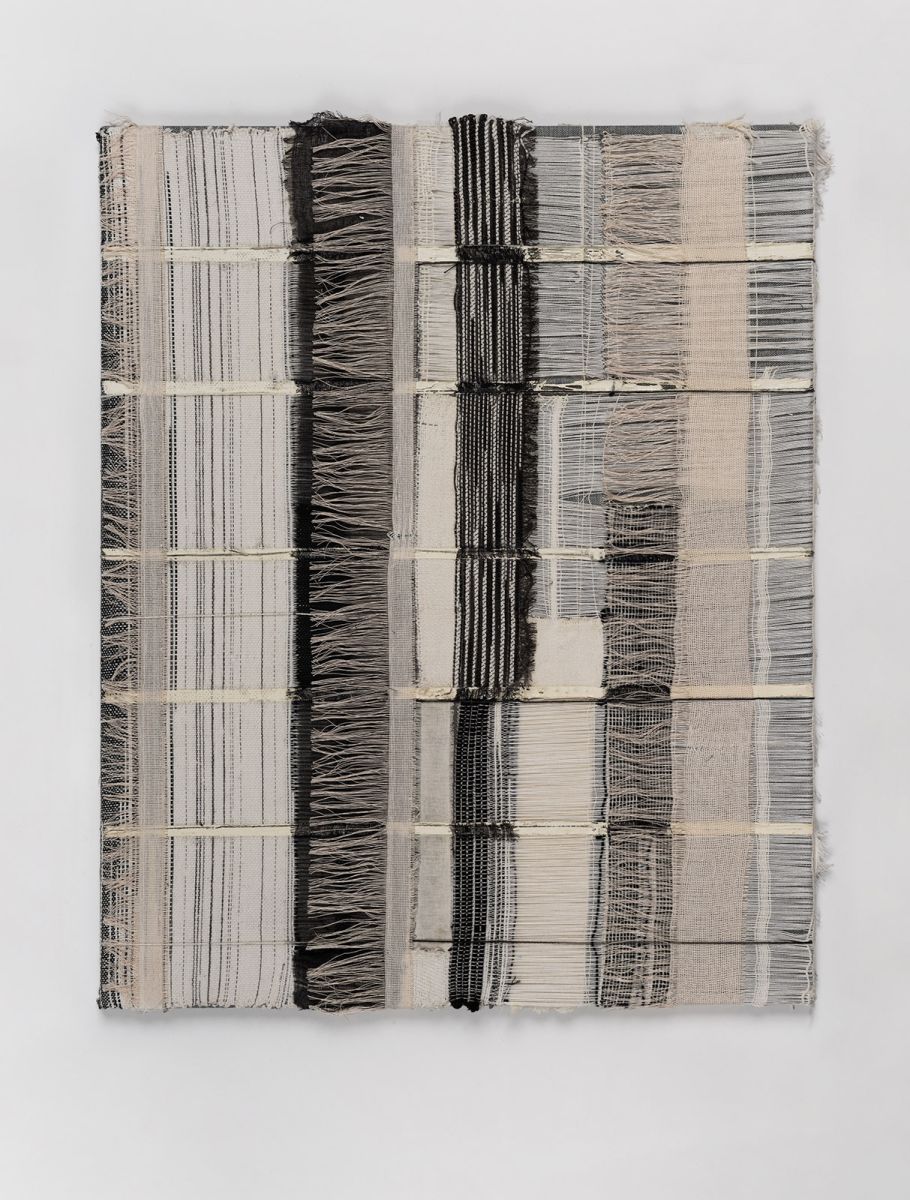
Mirjam Hagoort
Zonder titel - 2024-11 (2024)
Fabric, cotton, oil paint, rubber, Indian ink
60 x 75 cm
16/05 > 19/05 - EXTRA - Artistintheworld ‘Carte Blanche’ week @ Galerie van den Berge
‘Handenarbeid 0.1/Living the dream’
Tijdens ‘Changer # 3’organiseert André Smits op uitnodiging van de galerie gedurende vier middagen diverse activiteiten in de zaal.
In de zaal is een relatief omsloten ruimte gecreëerd met 5 vrijstaande wanden.
André Smits beschilderde de wanden in zijn herkenbare stijl en plaatste aan de buitenzijde de atelierfoto's en ‘playlists’ (tekeningen/werkagenda's) die hij maakte tijdens zijn onlangs afgesloten reis door Marokko.
Aan de binnenzijde van de wanden toont Abdelkader Benali op zondag 19 mei zijn in Tanger gemaakte foto’s (met teksten en tekeningen).
Het merendeel van de activiteiten speelt zich gedurende de middagen af binnen de redelijk omsloten ruimte van deze muren.
'Manual labor 0.1/Living the dream'
During 'Changer # 3'André Smits organizes various activities in the hall for four afternoons at the invitation of the gallery.
A relatively enclosed space was created in the hall with 5 free-standing walls.
André Smits painted the walls in his recognizable style and placed on the outside the studio photos and 'playlists' (drawings/work diaries) he made during his recently concluded trip through Morocco.
On the inside of the walls, Abdelkader Benali will display his photographs taken in Tangier (with texts and drawings) on Sunday, May 19.
Most of the activities during the afternoons take place within the reasonably enclosed space of these walls.
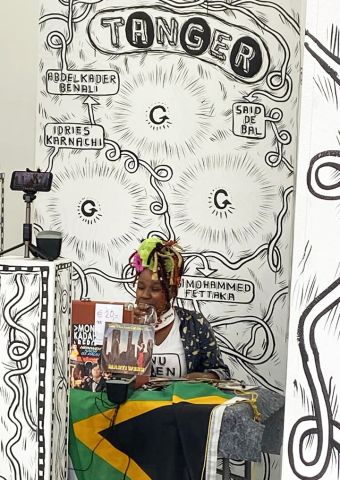
.jpeg/Ramon(1)__360x480.jpeg)
16/05 - Monika Dahlberg spins records 17/05 - Ramon de Nennie ‘14 songs from the depths'
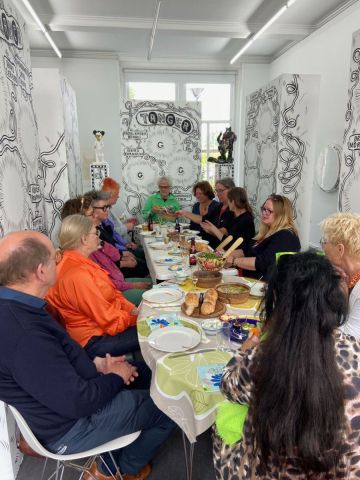
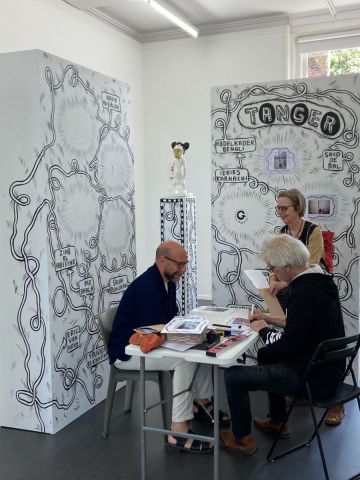
18/05 - Iris B conversation and meal 19/05 - Abdelkader Benali & André Smits, photoprints, texts & drawings
Nieuw in ' Changer # 4' is de presentatie van Monika Dahlberg die de plaats inneemt van de presentatie van Ton van Kints.
De presentaties van Gracia Khouw, Henriëtte van 't Hoog, Frank Halmans en Mirjam Hagoort blijven ongewijzigd staan t/m zaterdag 15 juni.
New to ' Changer # 4' is the presentation of Monika Dahlberg who will take the place of Ton van Kints' presentation.
The presentations by Gracia Khouw, Henriëtte van 't Hoog, Frank Halmans and Mirjam Hagoort will remain unchanged until Saturday, June 15.
Monika Dahlberg: Collages from the series ‘Dichter bij Vincent’ (Closer to Vincent)
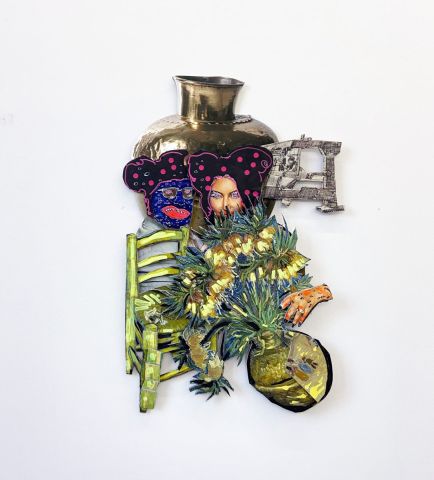
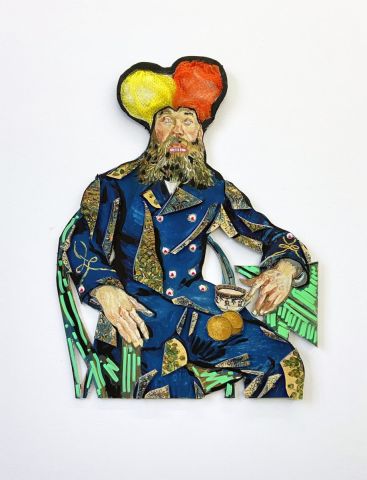
Monika Dahlberg Monika Dahlberg
‘Seamless meaning - Kim & Ron’ (2022) ‘Adoration is unhealthy’ (2022)
Various materials, photo collage, contour-cut foamboard Various materials, photo collage, contour-cut foamboard
68 x 60 cm 88 x 68 cm
Monika Dahlberg (Kericho, KE– 1975) maakt sculpturen, installaties, collages, foto’s en teksten.
Sociale, esthetische en politieke kritiek zijn instrumenten van haar werkwijze. Haar vitale en krachtige werk is doortrokken van sensorische, erotische energie. Kenmerkend voor haar werk zijn de kunsthistorische verwijzingen die ze koppelt aan haar eigen biografie. Ze ontwikkelde daarbij een eigen beeldtaal die ze verweeft met hoe ze het leven leeft en ervaart.
Vaak voorziet zij de personages in haar foto's en collages van Minnie en Mickey Mouse oren, een verwijzing naar een typisch Afrikaanse haardracht maar tevens als commentaar op de Disneyficering van de hedendaagse samenleving.
Van 30 juli t/m 30 oktober 2022 was de tentoonstelling ‘Dichter bij Vincent’ te zien in het Vincent van GoghHuis in Zundert.
De tentoonstelling was gebaseerd op onderzoek van kunsthistoricus Alexandra van Dongen naar de voorwerpen die Van Gogh heeft afgebeeld op zijn schilderijen. In de periode voorafgaand aan de tentoonstelling werkten Monika Dahlberg en André Smits in Zundert als ‘artist in residence’ en gaven de tentoonstelling vorm met teksten, tekeningen en collages.
Monika Dahlberg (Kericho, KE- 1975) makes sculptures, installations, collages, photographs and texts.
Social, aesthetic and political criticism are natural tools of her working method. Her vital and powerful work is imbued with sensory, erotic energy. Characteristic of her work are the art-historical references she links to her own biography. In the process, she developed her own visual language that she interweaves with how she lives and experiences life.
She often provides the characters in her photographs and collages with Minnie and Mickey Mouse ears, a reference to a typical African hairstyle but also as a comment on the disneyfication of contemporary society.
From 30 July to 30 October 2022, the exhibition 'Closer to Vincent' was on display at the Vincent van GoghHuis in Zundert. The exhibition was based on research by art historian Alexandra van Dongen into the objects Van Gogh depicted in his paintings.
In the period leading up to the exhibition, Monika Dahlberg and André Smits worked in Zundert as 'artist in residence' and shaped the exhibition with texts, drawings and collage
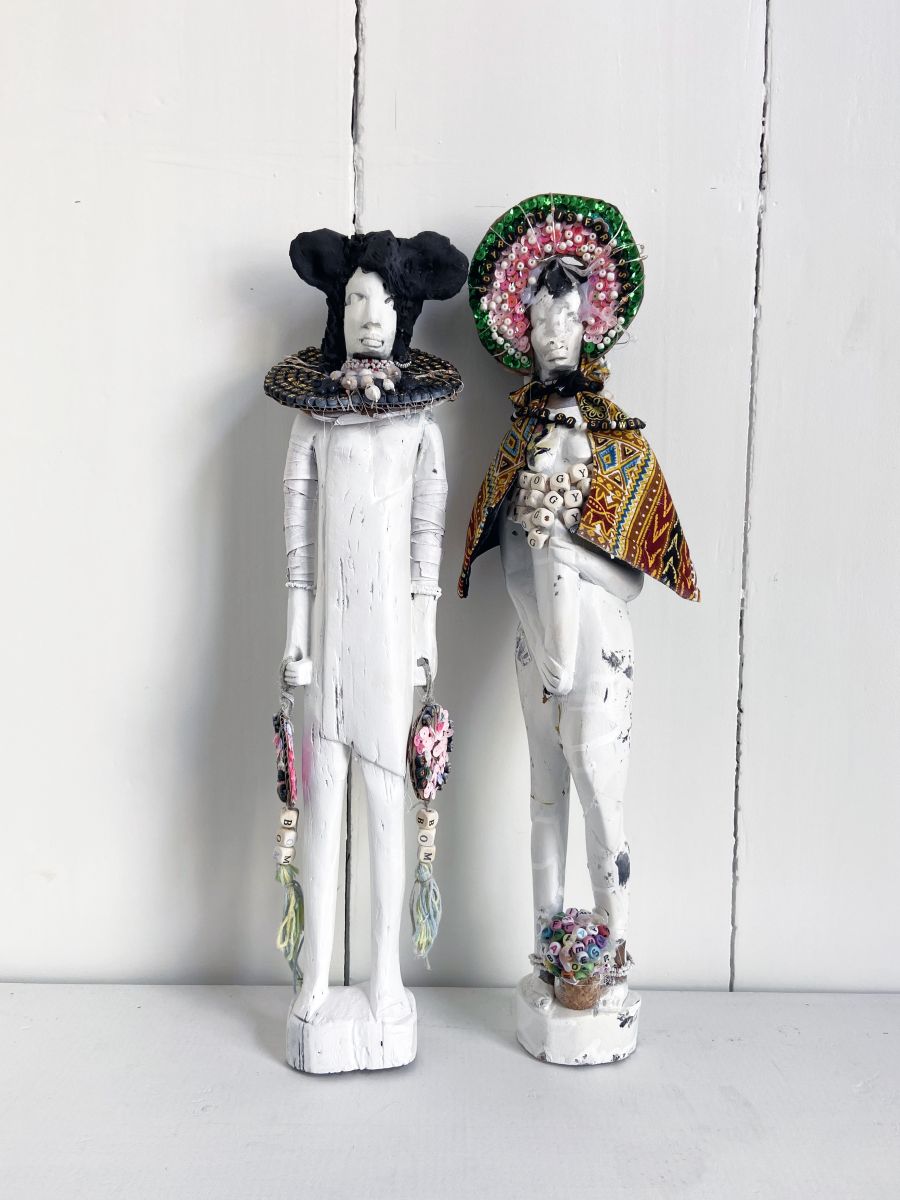
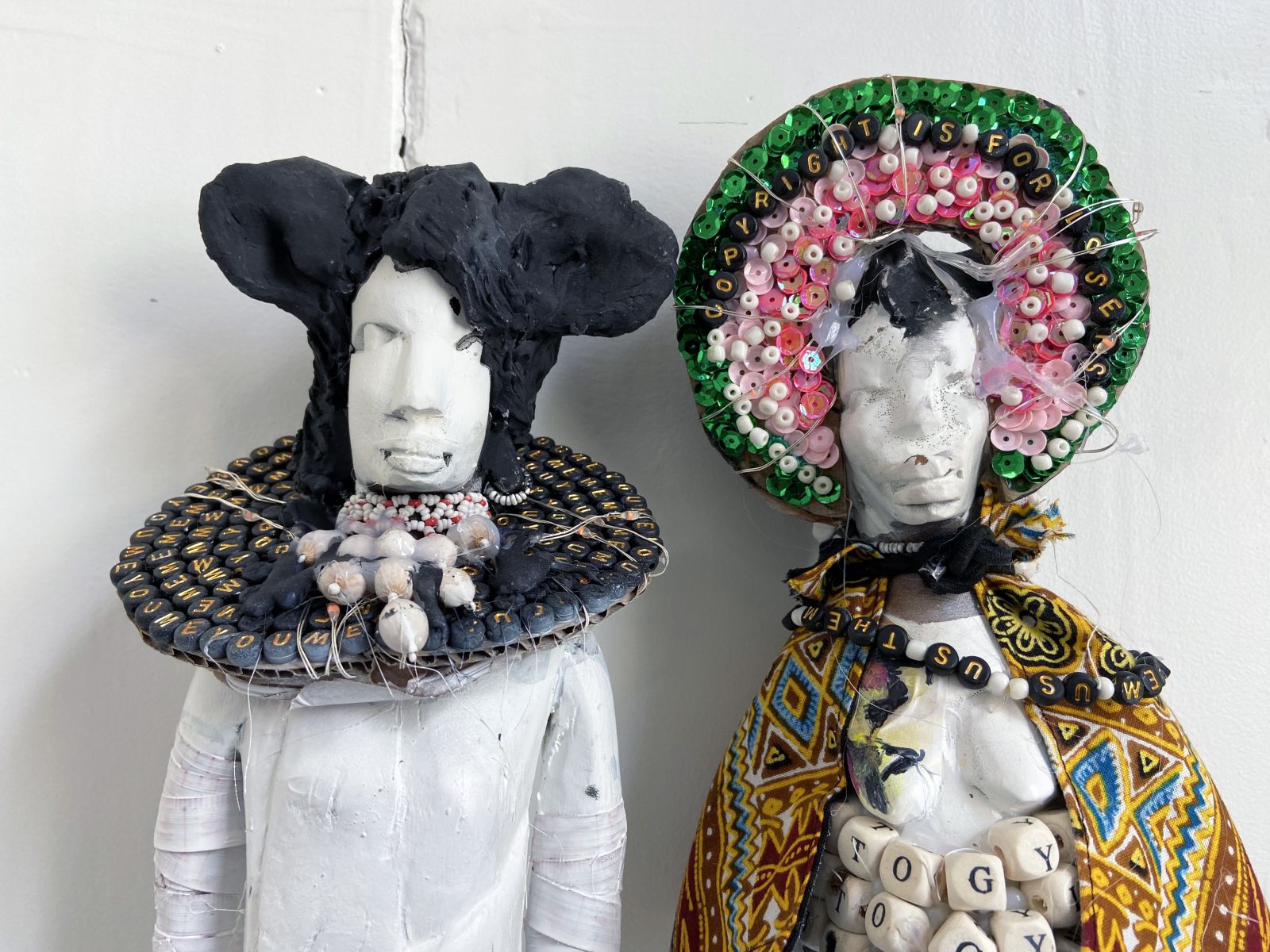
Monika Dahlberg
R - Wasiwasi (Worrier) - Man, wood, various materials, app. 48 x 13 x 10 cm
L - Hekima (Wisdom) – Vrouw/Woman, wood, various materials, app. 48 x 13 x 10 cm
De laatste jaren richt Dahlberg zich op het maken van beelden.
De aanleiding vormt de vondst van een afgedankt houten Afrikaans beeld, gemaakt als toeristisch souvenir. Terwijl ze zich sterker oriënteert
op haar afkomst uit Kericho (Kenia) en op het cyclische wereldbeeld van het lokale kipsigis-volk, geeft zij dit beeld een nieuw leven door het
wit te schilderen en de kenmerkende zwarte oren toe te voegen.
Zo begint zij een zoektocht naar het combineren van de als ‘geheimzinnig’ geachte Afrikaanse beeldcultuur met een ‘westers’ stereotype.
Dahlberg verwerft nog vele andere Afrikaanse sculpturen die zij wit schildert en op verschillende manieren bewerkt. De gezichten werden goud geverfd, als symbool voor status en macht. Reparaties, of juist het gebrek daaraan, maakt zij nadrukkelijk zichtbaar. Ook dat is een reactie tegen het westerse streven naar maakbaarheid en perfectie.
Zo ontstaat een heel leger van figuren, of gatekeepers, die door verschillende kunstinstellingen in verschillende constellaties worden getoond.
Sinds 2019 modelleert Dahlberg ook zelf sculpturen in een beeldtaal die hiervan is afgeleid. Dat doet zij vooralsnog in materialen met beperkte houdbaarheid, zoals purschuim met een geverfde coating, of met samengeraapte kartonresten. Een recent voorbeeld daarvan stond enige maanden nabij het Anton de Komplein, in het kader van een tentoonstelling van CBK Zuidoost in Amsterdam.
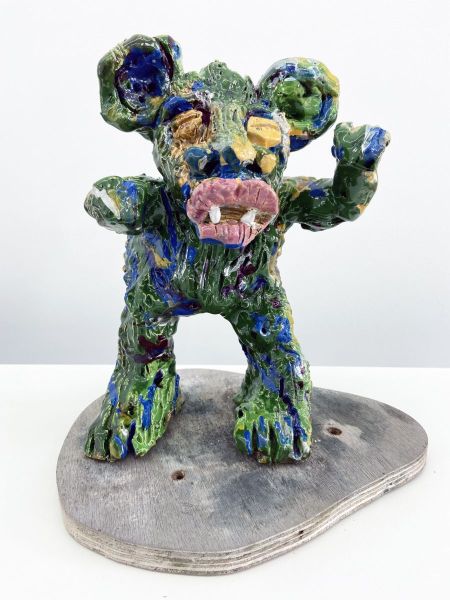
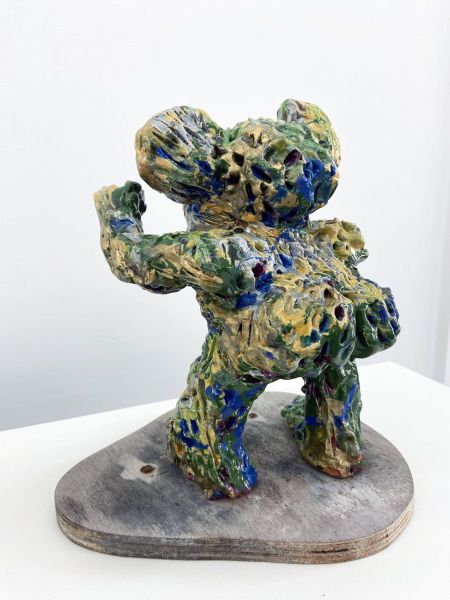
Monika Dahlberg
Uaminifu (Trust)
Ceramics
25,5 x 18 x 18 cm
In recent years, Dahlberg has focused on making sculptures.
The trigger is the discovery of a discarded wooden African sculpture, made as a tourist souvenir. While orienting herself more strongly to her origins from Kericho (Kenya) and to the cyclical worldview of the local kipsigis people, she gives this sculpture a new life painting it white and adding the distinctive black ears. Thus she begins a quest to combine the as 'mysterious' African visual culture with a 'Western' stereotype. Dahlberg acquires many other African sculptures which she paints white and manipulates in various ways. The faces were painted gold, symbolizing status and power. Repairs, or lack thereof, she makes explicitly visible. That too is a reaction against the Western pursuit of social engineering and perfection. This creates a whole army of figures, or gatekeepers, who are displayed by different art institutions in different constellations displayed.
Since 2019, Dahlberg has also been modeling his own sculptures in a visual language derived from this. For now, she does so in materials with limited durability, such as polyurethane foam with a painted coating, or with pieced together cardboard scraps. A recent example stood for several months near Anton de Komplein, in the context of an exhibition by CBK Zuidoost in Amsterdam.
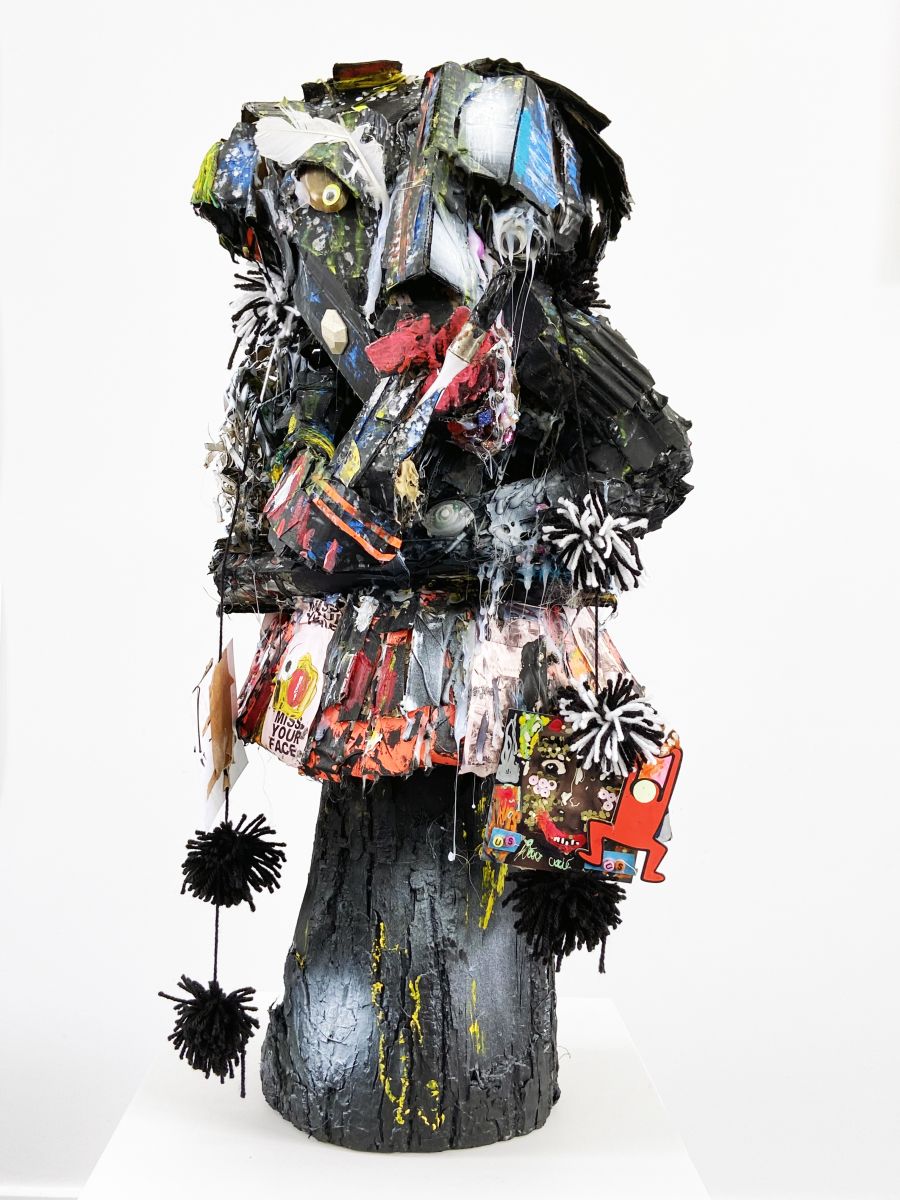
Monika Dahlberg
'Sana (So Much) 2024
Wood, cardboard, paint, various materials
app. 78 x 34 x 36 cm
26/09 > 19/10 2024
pietsjanke fokkema - ‘Madeliefjes’- site specific installation
Harry Markusse - 'Layered illusions' - recent paintings and work on paper
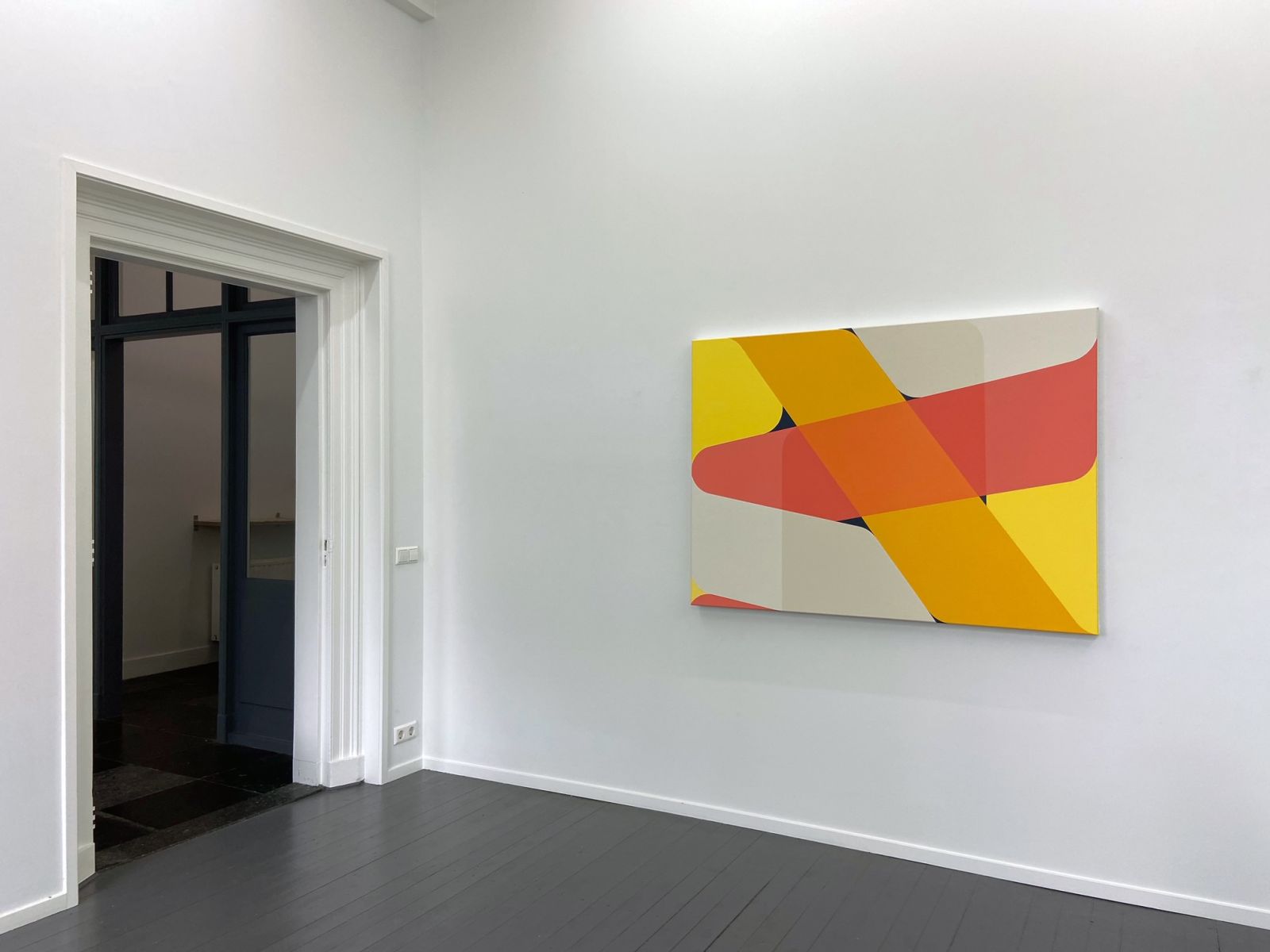
Harry Markusse
Untitled [A] (2024)
Acrylic on linen, 110 x 150 cm
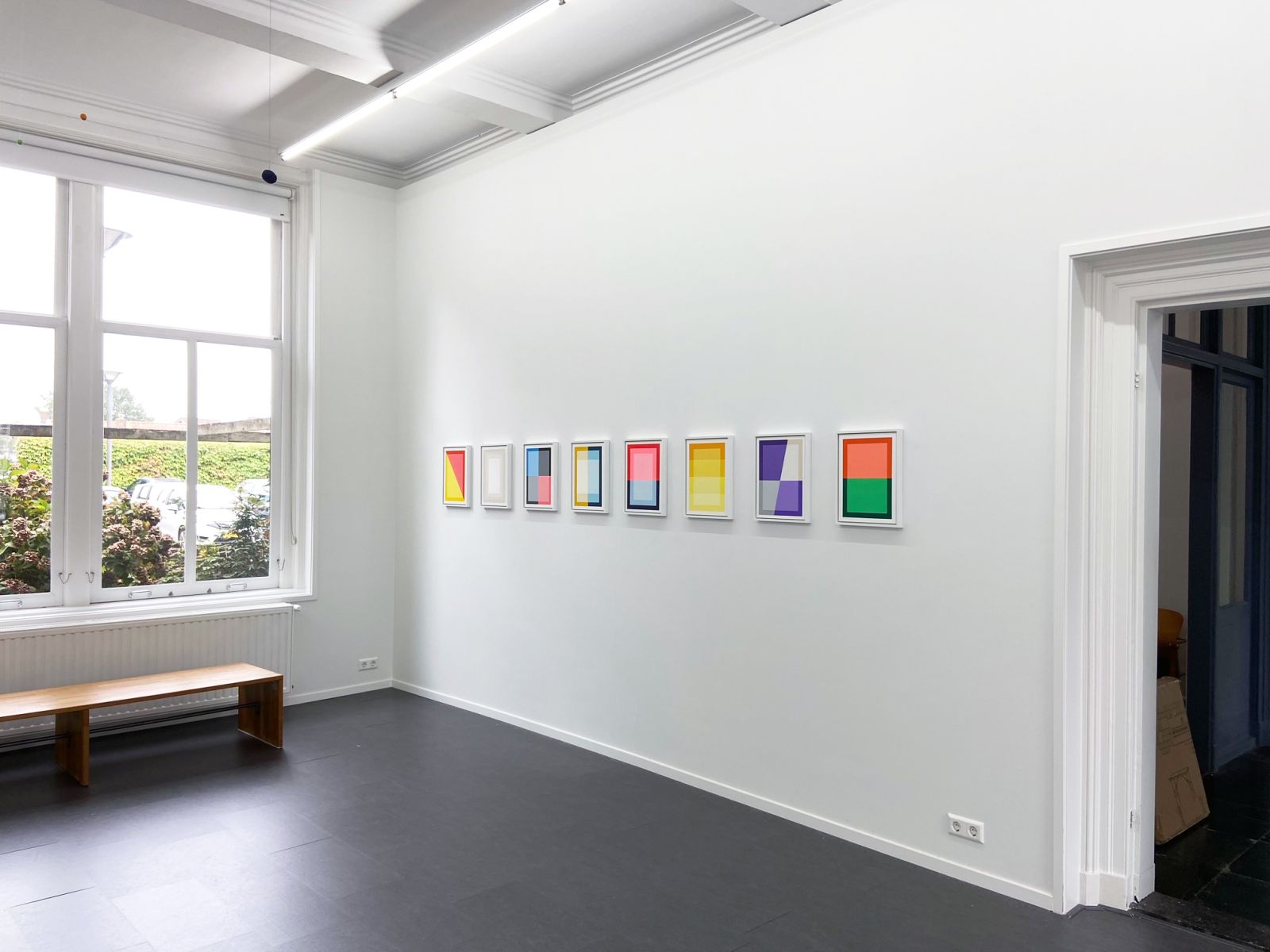
Harry Markusse
Untitled paintings on paper # 1 thru #8 (2024)
Acrylic on paper, mounted on aluminium, floating frame
39 x 29 cm (each)
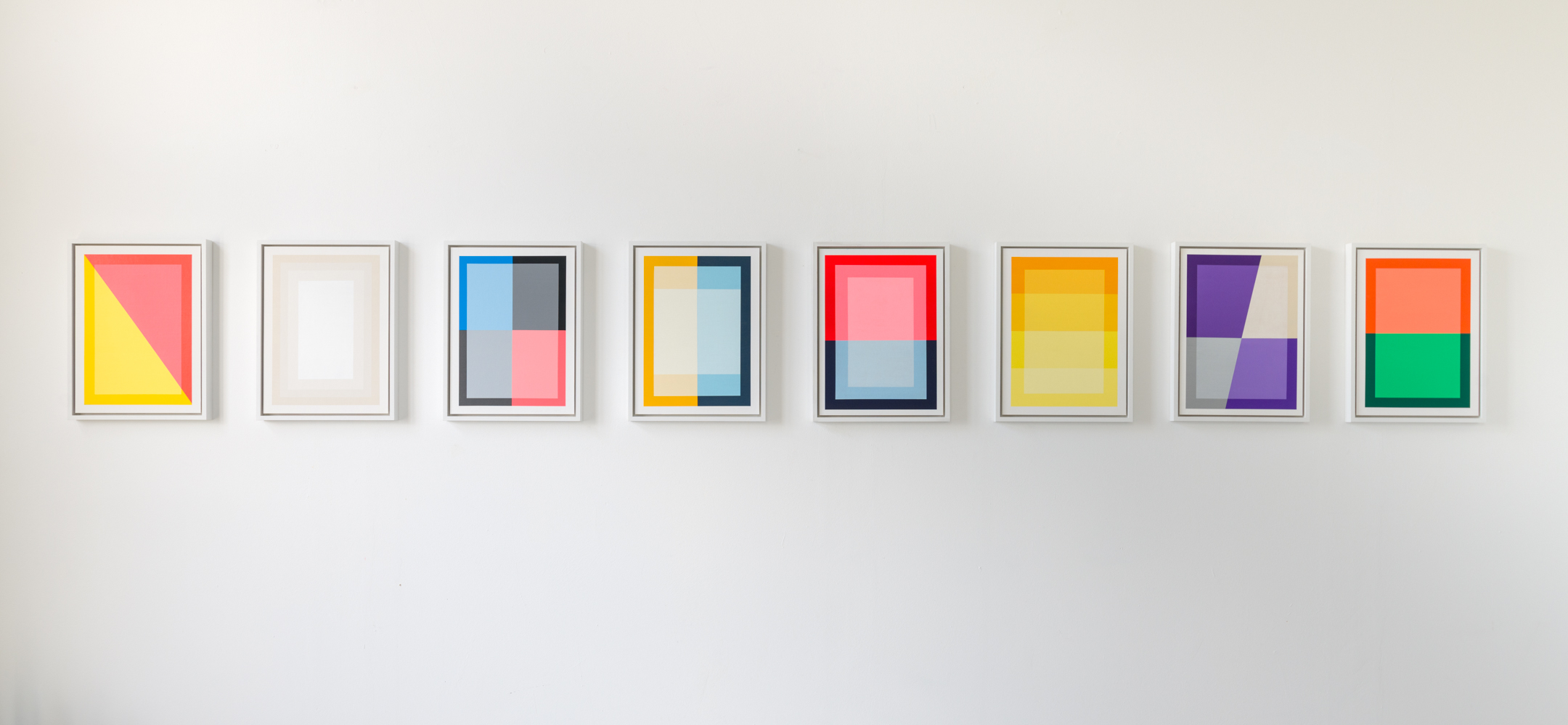
Ik werk zonder een vooraf opgesteld plan, wat misschien tegenstrijdig lijkt voor iemand die strakke geometrische werken maakt. Hoewel mijn werk vaak strak oogt, bevatten ze imperfecties die energie en menselijkheid toevoegen. In mijn praktijk speel ik met vorm, ruimte, geometrie en kleur. Ik ben gefascineerd door reflectie, concentrische vormen, symmetrie, het doorbreken daarvan, en de wisselwerking tussen positieve en negatieve ruimte, evenals kleurverloop. Mijn werk is onder andere beïnvloed door abstracte schilderkunst, minimalisme en grafische kunst.
In mijn Stacked series hergebruik ik afgekeurde doeken en voorstudies om nieuwe ruimtelijke composities te make die ik rangschik in perspex bakken. Deze werken spelen met de interactie tussen kleuren en vormen die elkaar op nieuwe manieren ontmoeten. De laatste jaren zijn organische elementen steeds meer in mijn werk geslopen. De strakke hard-edge lijnen heb ik verruild voor meer golvende, vloeiende vormen.
In mijn meest recente werk creëer ik een nieuwe dimensie door kleur te gebruiken om veranderingen en gelaagdheid aan te brengen. In feite schilder ik echter een illusie van die gelaagdheid, waarbij ik speel met het idee van transparantie, zonder dat die er daadwerkelijk is.
I work without a pre-established plan, which may seem contradictory for someone who creates tight geometric works. Although my works often look sleek, they contain imperfections that add energy and humanity. In my practice, I play with form, space, geometry and colour. I am fascinated by reflection, concentric shapes, symmetry, its breaking through, and the interplay between positive and negative space, as well as colour gradient. My work is influenced by abstract painting, minimalism and graphic art, among others.
In my Stacked series, I reuse rejected canvases and preliminary studies to make new spatial compositions that I arrange in perspex bins. These works play with the interaction between colours and shapes that meet in new ways. In recent years, organic elements have increasingly crept into my work. I have traded the rigid hard-edge lines for more undulating, flowing forms.
In my most recent work, I create a new dimension by using colour to create changes and layering. In fact, however, I paint an illusion of that layering, playing with the idea of transparency without its actual presence.
.jpg)
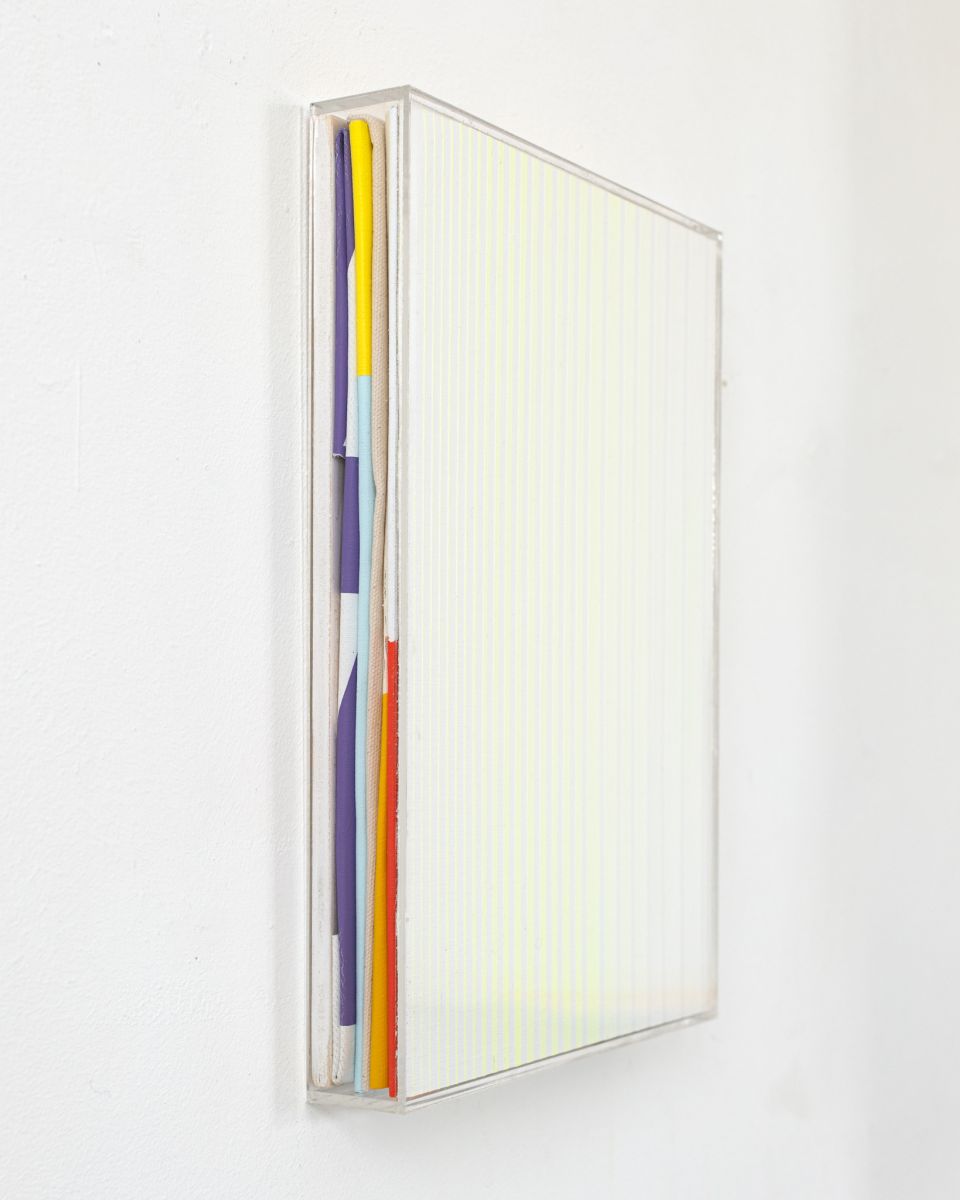
Harry Markusse
'Stacked painting' 2024 # 1
Acrylic on linen, perspex box, 36 x 26 x 4 cm
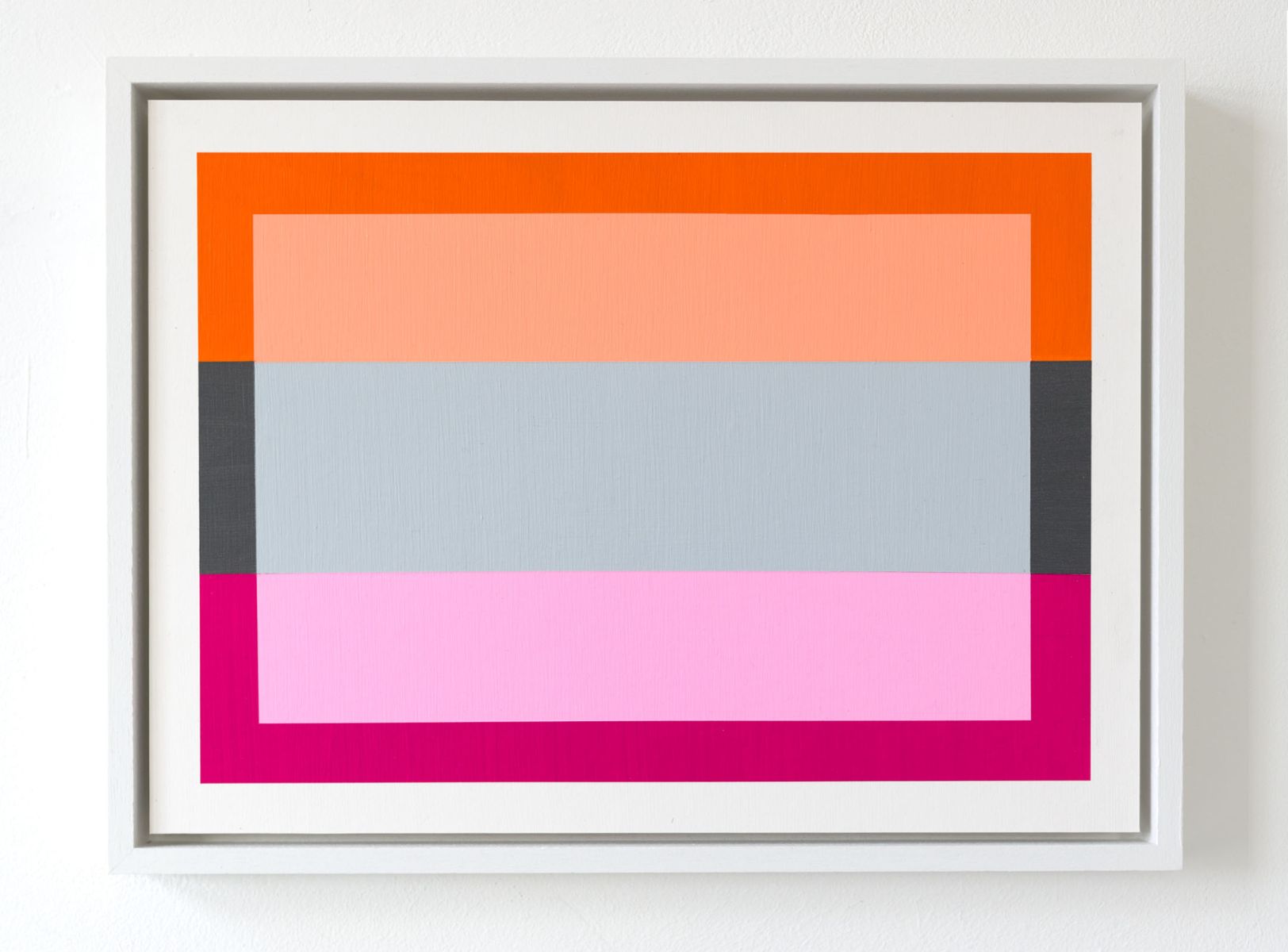
Harry Markusse
Untitled painting on paper #9 (2024)
Acrylic on paper, mounted on aluminium, floating frame
29 x 39 cm
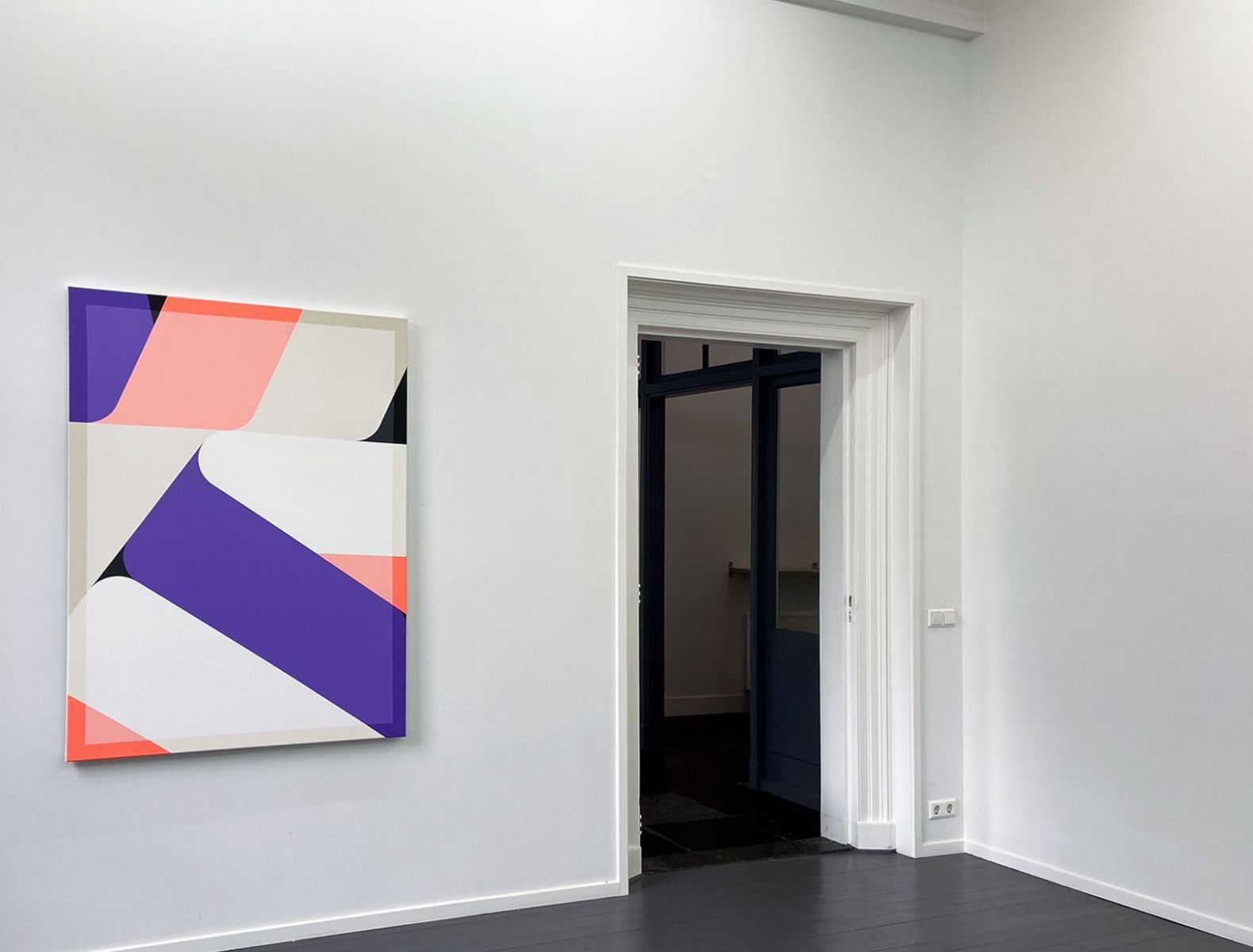
Harry Markusse
Untitled [B] (2024)
Acrylic on linen, 110 x 150 cm
> Harry Markusse on Gallery Viewer
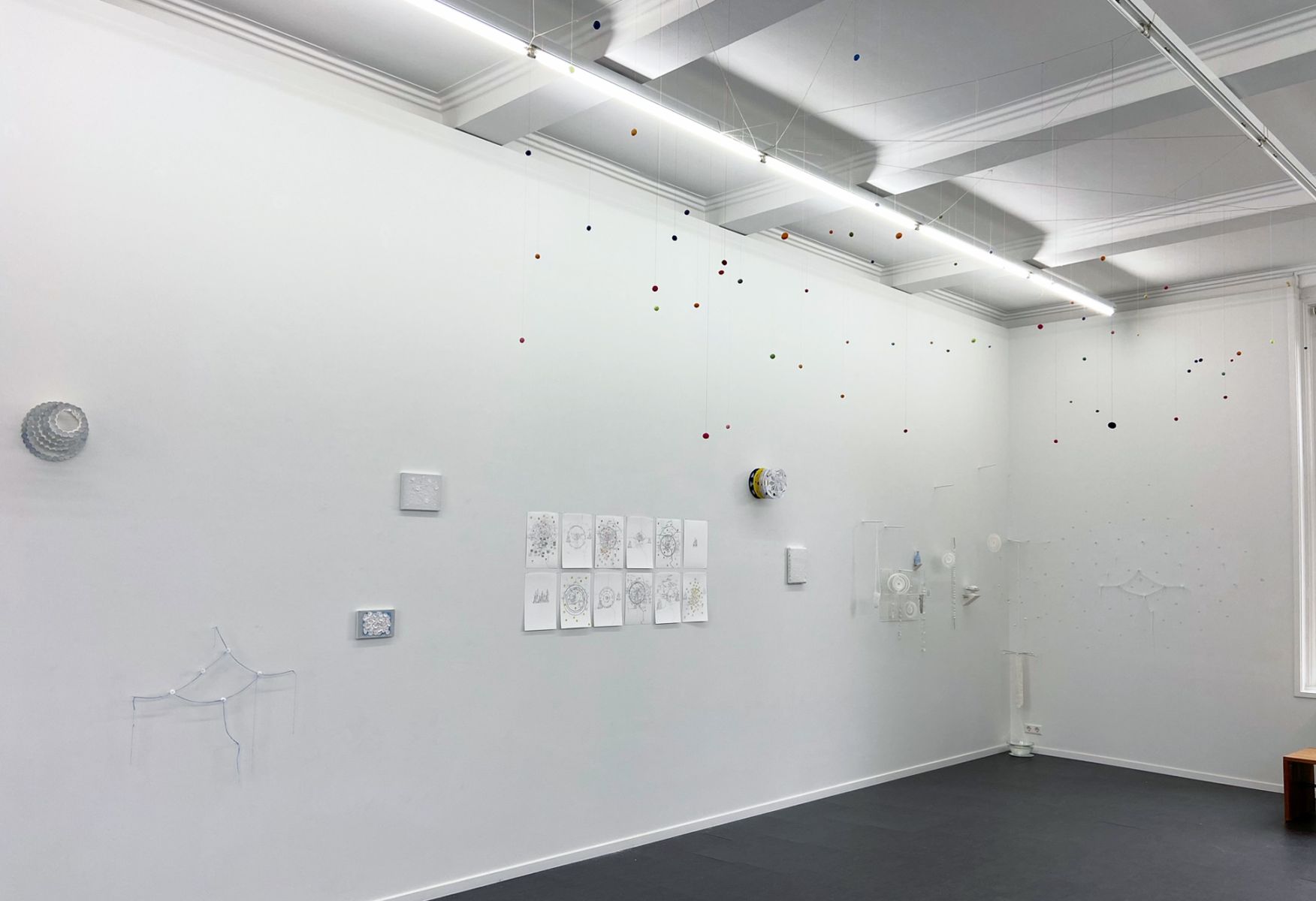
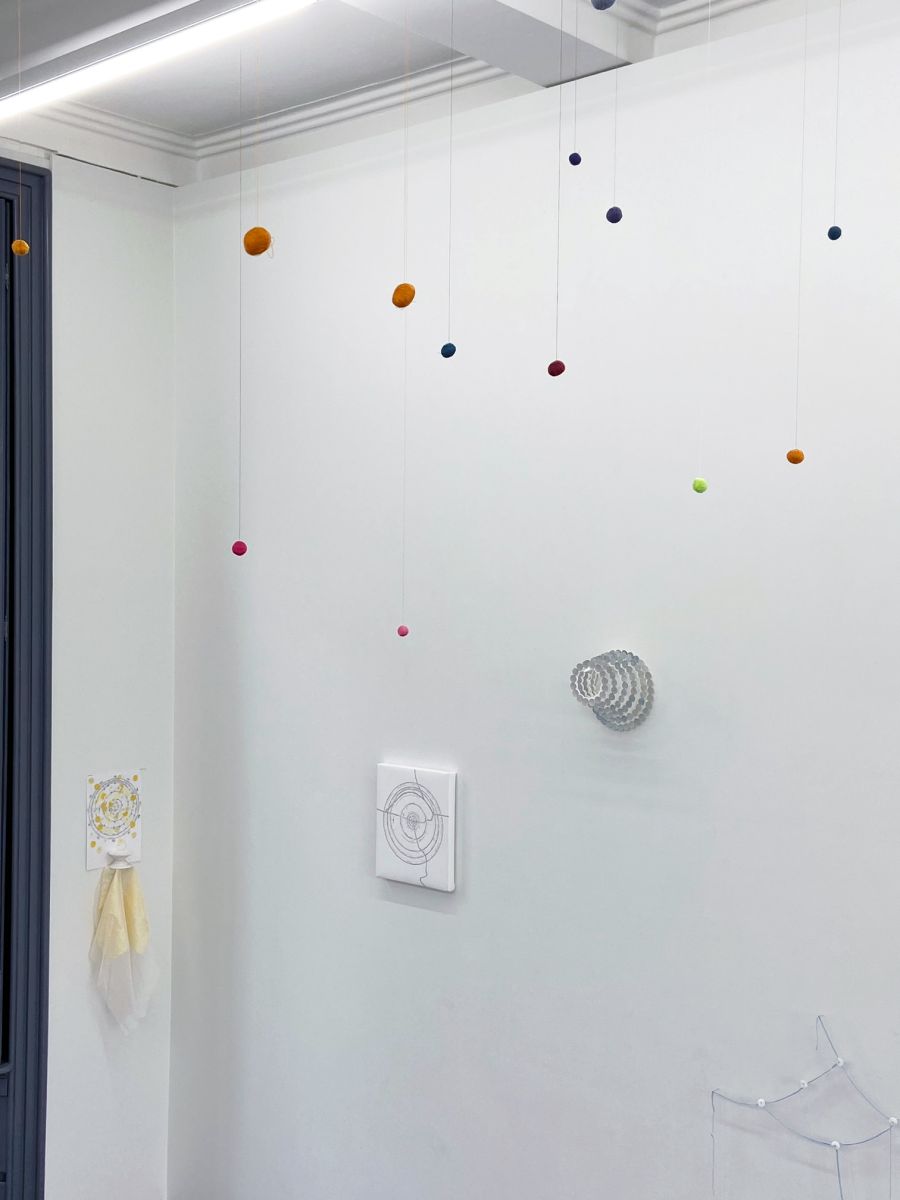
pietsjanke fokkema
Overviews
.jpg)
.jpg)
pietsjanke fokkema pietsjanke fokkema
'Madeliefjes in het veld' (2024) Six-fold circle (2022)
fabric, paper, thread, beads, gouache on cloth on stretcher bars Gouache on cardboard, paper, rolled paper
12,5 x 18, 5 cm Ø 21 x 16 cm
pietsjanke fokkema - MADELIEFJES (DAISIES)
In het voorjaar heb ik een serie tekeningen ( Hemel-Land-kaart) gemaakt die te maken hadden met heimwee naar de plek waar ik ben opgegroeid. Het ouderlijk huis, dat er heel lang is geweest, was weg sinds het overlijden van mijn vader.
Opeens overviel me de herinneringen aan het oude huis met de grote tuin. Ik ben tekeningen gaan maken met de plattegrond, die ik gemaakt had in 2015 en in het boek Utwrydsk (2019) staat.
De vorm van de plattegrond ben ik gaan combineren met de planeetbanen, zoals Eise Eisinga (Planetarium, Franeker) die heeft gemaakt.
Ook de madeliefjes, die toen overal om je heen waren, kwamen terug.
De madeliefjes zijn gaan staan voor de herinneringen en het heimwee.
Deze tekeningen werden het uitgangspunt voor nieuw werk. De plattegrond werd een zelfstandig object. De madeliefjes werden rondjes die door allerlei werken heen gingen zweven. De planeetbanen zweven zo ie zo altijd door mijn werk.
Het werk GEDACHTEN III baseert zich op een vorig vergelijkbaar werk GEDACHTEN II. De basis is een aantal schoolschrift bladzijden, nog uit de tijd dat mijn vader schoolmeester was.
De werken zijn wit geworden, met weinig kleur. Zo heeft het zich ontwikkeld.
De kleur zit in de opgehangen bolletjes. Ik heb vanaf het plafond gekleurde bolletjes opgehangen om het werk een ruimtelijke uitstraling te geven. De bolletjes, ook al zijn ze erg klein, pakken de hele ruimte. Het werk aan de wand heeft daardoor een nog sterkere relatie met de hele ruimte.
In spring, I made a series of drawings ( Heaven-Land map) that had to do with homesickness for the place where I grew up. The parental home, which had been there for a very long time, was gone since my father's death.
Suddenly, memories of the old house with the big garden overwhelmed me. I started making drawings using the floor plan, which I had made in 2015 and is in the book Utwrydsk (2019).
I started combining the shape of the floor plan with the planetary orbits, as created by Eise Eisinga (Planetarium, Franeker).
The daisies, which were all around you at the time, also returned.
The daisies came to represent memories and nostalgia.
These drawings became the starting point for new work. The floor plan became an independent object. The daisies became circles floating through all kinds of works. Planetary orbits always float through my work anyway.
The work GEDACHTEN III (THOUGHTS III) bases itself on a previous similar work GEDACHTEN II. The basis is a number of school notebook pages, still from the time when my father was a school teacher.
The works became white, with little colour. This is how it developed.
The colour is in the suspended globes. I hung coloured spheres from the ceiling to give the work a spatial look. The spheres, even though they are very small, grab the whole room. This gives the work on the wall an even stronger relationship with the whole room.
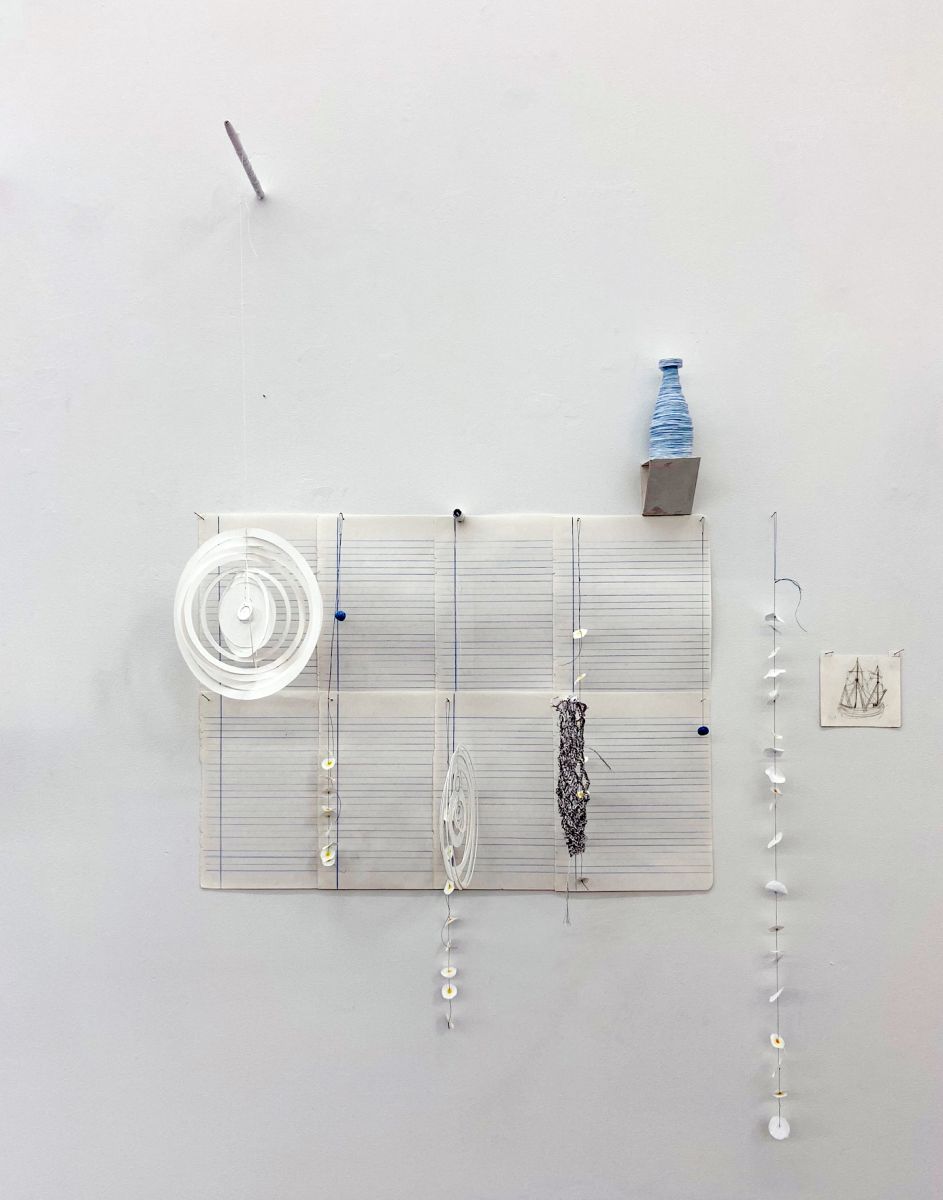
pietsjanke fokkema
‘Thoughts’ III' (2024)
School notebook paper, coloured pencil, crocheted silver thread, fabric, wire 39 x 53.5 cm
‘Blue tower’ - paper, cardboard base 4.5 x 13 cm / 5 x 5 x 5 cm
‘Plane Towns 3D’ [3x] - paper, wire Ø 16 cm
'Ship' -pencil on paper 8 x 7 cm
> pietsjanke fokkema on Gallery Viewer
26/10 > 30/11
Henric Borsten - soloshow STATEN prospectief/retrospectief
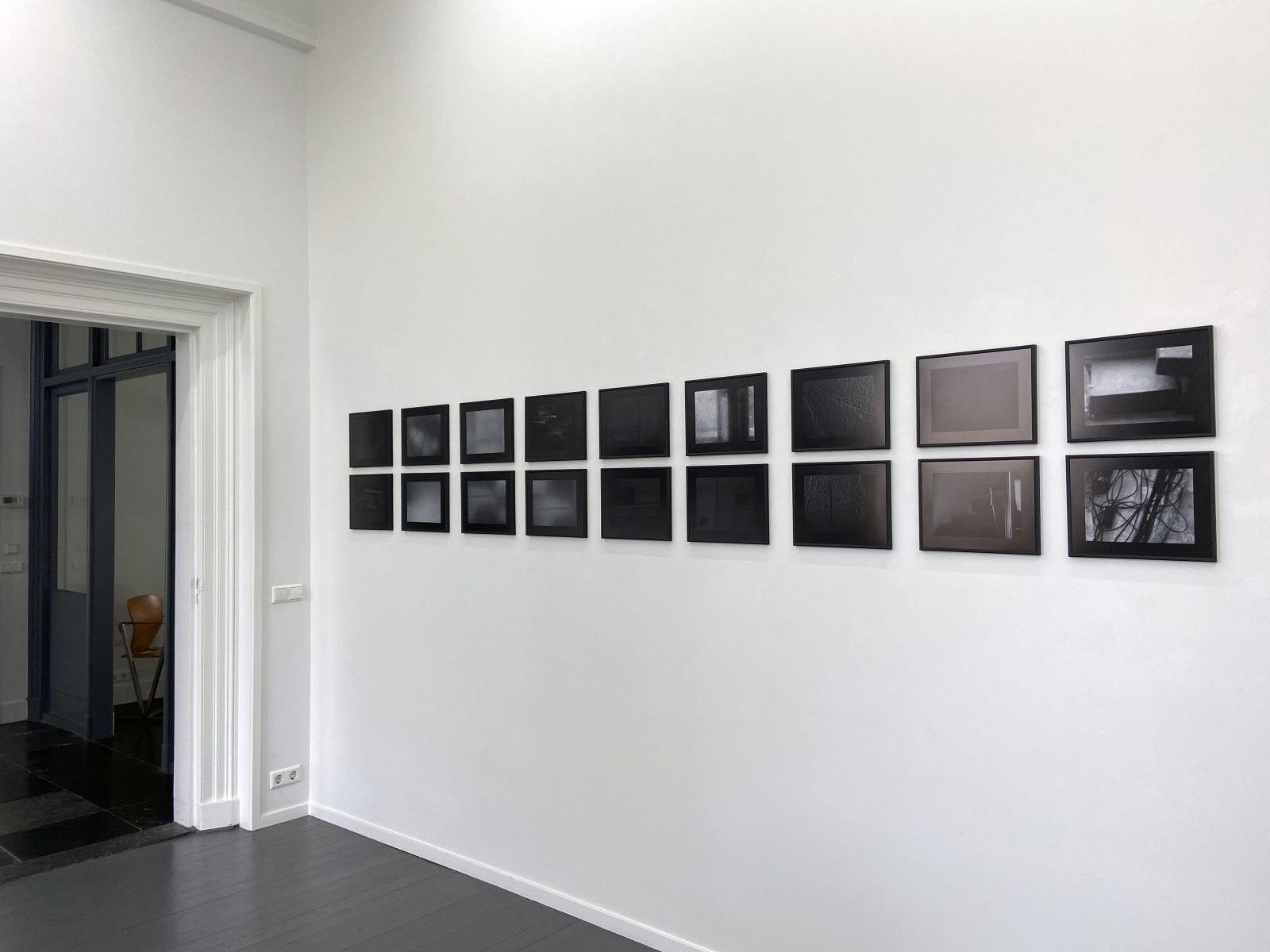
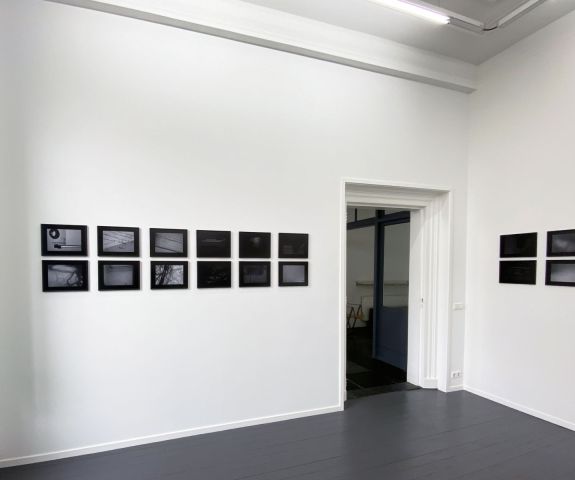
%20adj.jpg/HB%20image3%20(052)%20adj__600x474.jpg)
40 photographic works (2010/2020)
Prints on black/white lustre mat - Ed. 10
25 x 31 x 1,5 cm (each)
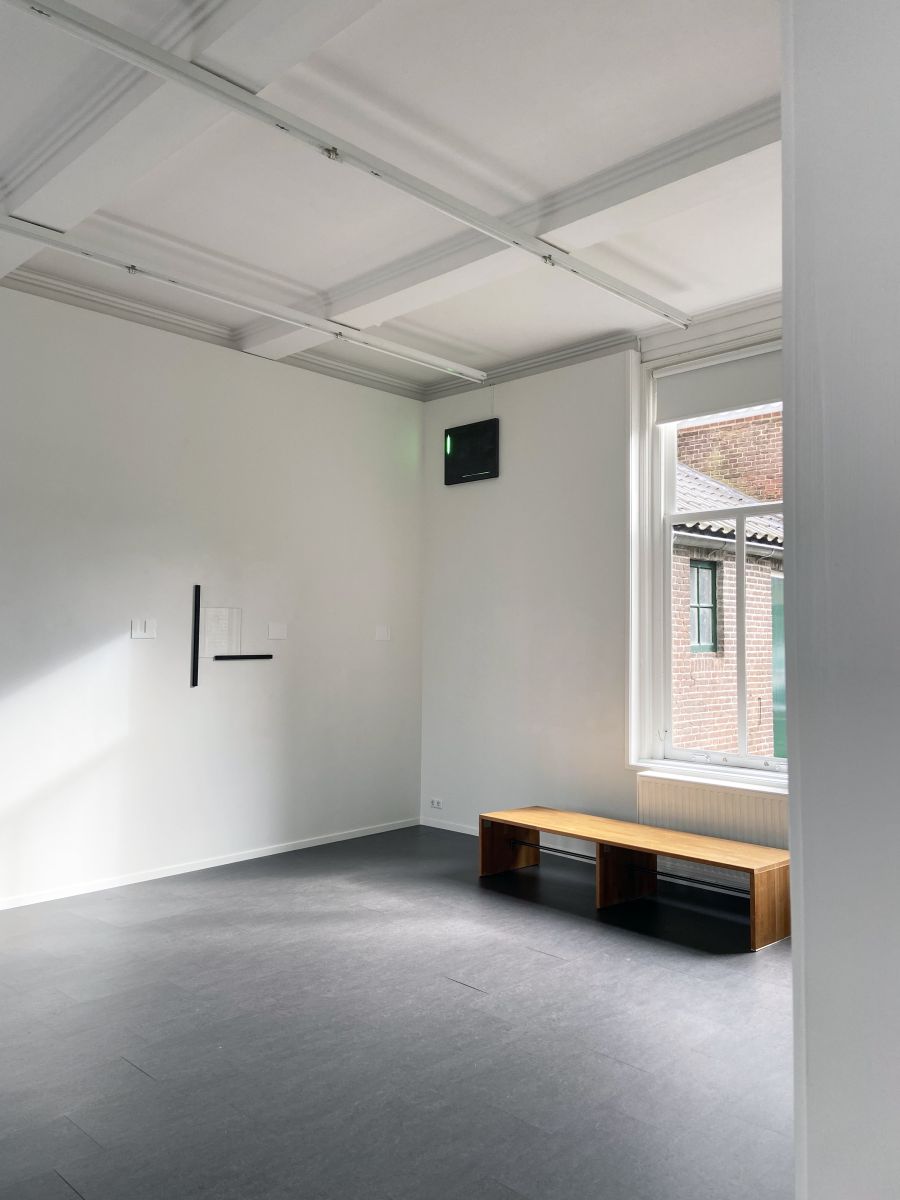
In de tentoonstelling 'STATEN' zijn eerdere, recente en nieuwe werken (waaronder muurbeelden en fotowerken) opgenomen die samen een uitgelezen beeld geven van zijn oeuvre.
Het oeuvre van Henric Borsten (NL) kenmerkt zich (in al zijn diversiteit) altijd op een zelfde wijze.
Met een minimum aan beeldende middelen wordt een beeldende présence gerealiseerd die het associatief proces van de beschouwer een zekere richting op stuurt.
"Ik heb zelden een collega gezien die zo vastberaden, koppig en uniek is - niet beïnvloed door iets of iemand. Henric's werk is tijdloos. Het is hiërarchisch en compleet. Het is streng en precies in compositie en de materiaalkeuze onderscheidt zich door zijn grote gevoel voor schoonheid. Ik raad iedereen aan om Henric's werk te zien en te voelen en hem te volgen - het is een verrijking".
Citaat uit een tekst van Jan van Munster over Henric Borsten, november 2016
The exhibition 'STATEN' includes previous, recent and new works (including wall sculptures and photographic works) that together give an exquisite picture of his oeuvre.
The oeuvre of Henric Borsten (NL) is (in all its diversity) always characterized in a similar way.
With a minimum of visual means, a visual presence is realized which directs the associative process of the viewer in a certain direction.
“I have rarely seen a colleague so determined, stubborn and unique - not influenced by anything or anyone. Henric's work is timeless. It is hierarchical and complete. It is rigorous and precise in composition and the choice of materials is distinguished by his great sense of beauty. I recommend everyone to see and feel Henric's work and follow him - it is enriching.”
Quote from a text by Jan van Munster on Henric Borsten, November 2016
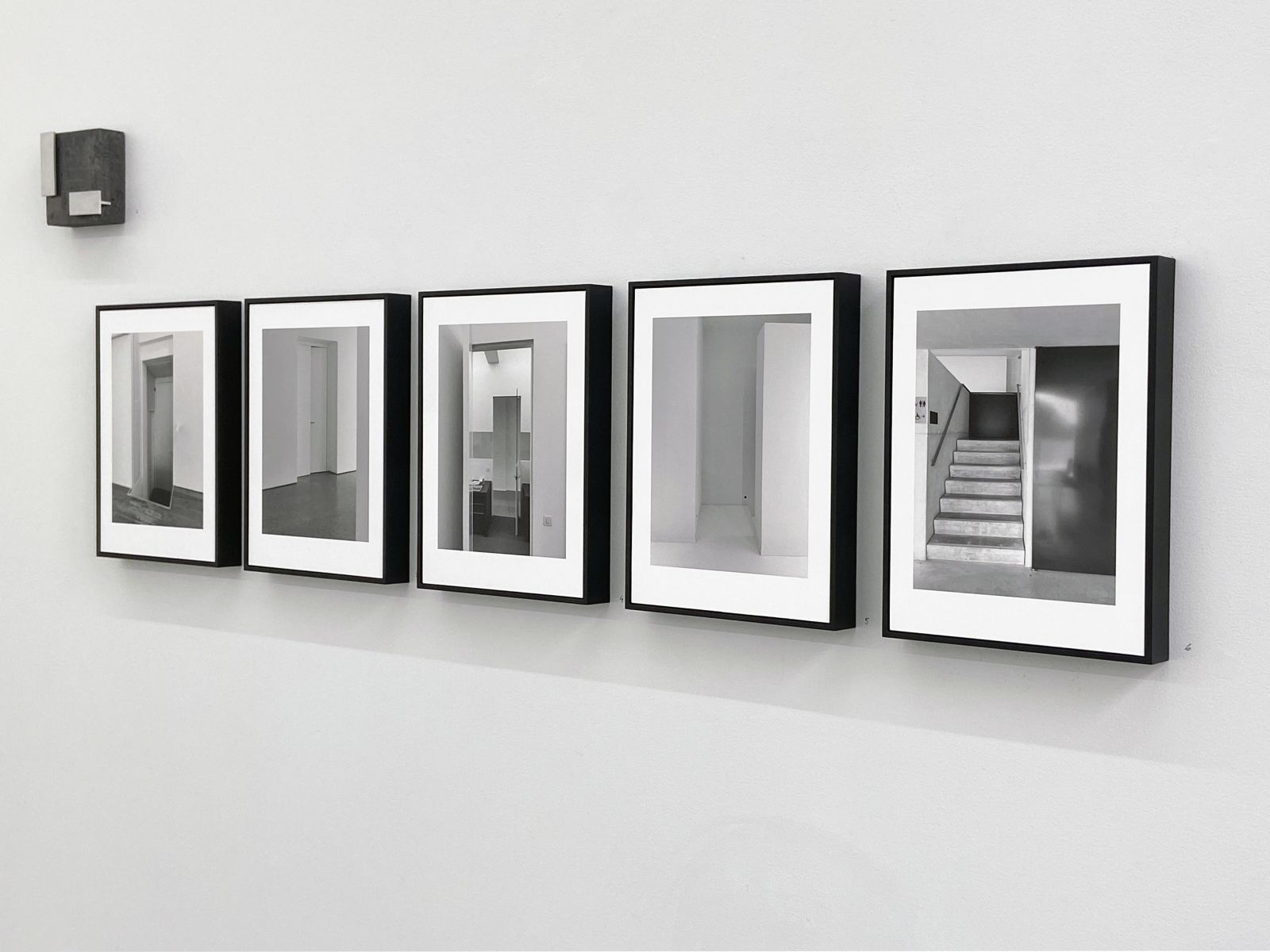
V.l.n.r / from left to right: GSI (2020/2024) - GGRM (2021/2024) - GMSzw (2020/2024) - GDW15 (2022/2024) - KtB (2021/2024)
Prints on Canson Platine Fibre Rag – Ed. 10 - 27 x 20,3 x 3 cm (each)
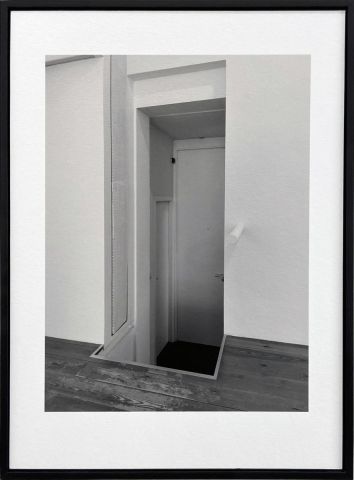
GSl (2020/2024)
Print on Canson Platine Fibre Rag – Ed. 10
27 x 20,3 x 3 cm
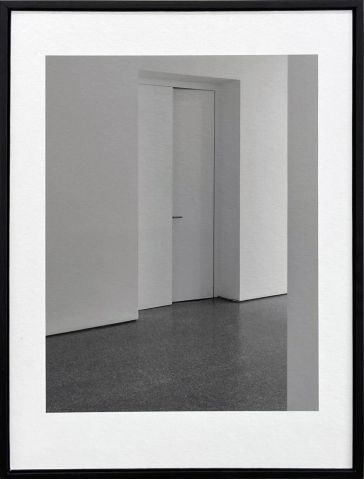
GGrM ( 2021/2024)
Print on Canson Platine Fibre Rag – Ed. 10
27 x 20,3 x 3 cm
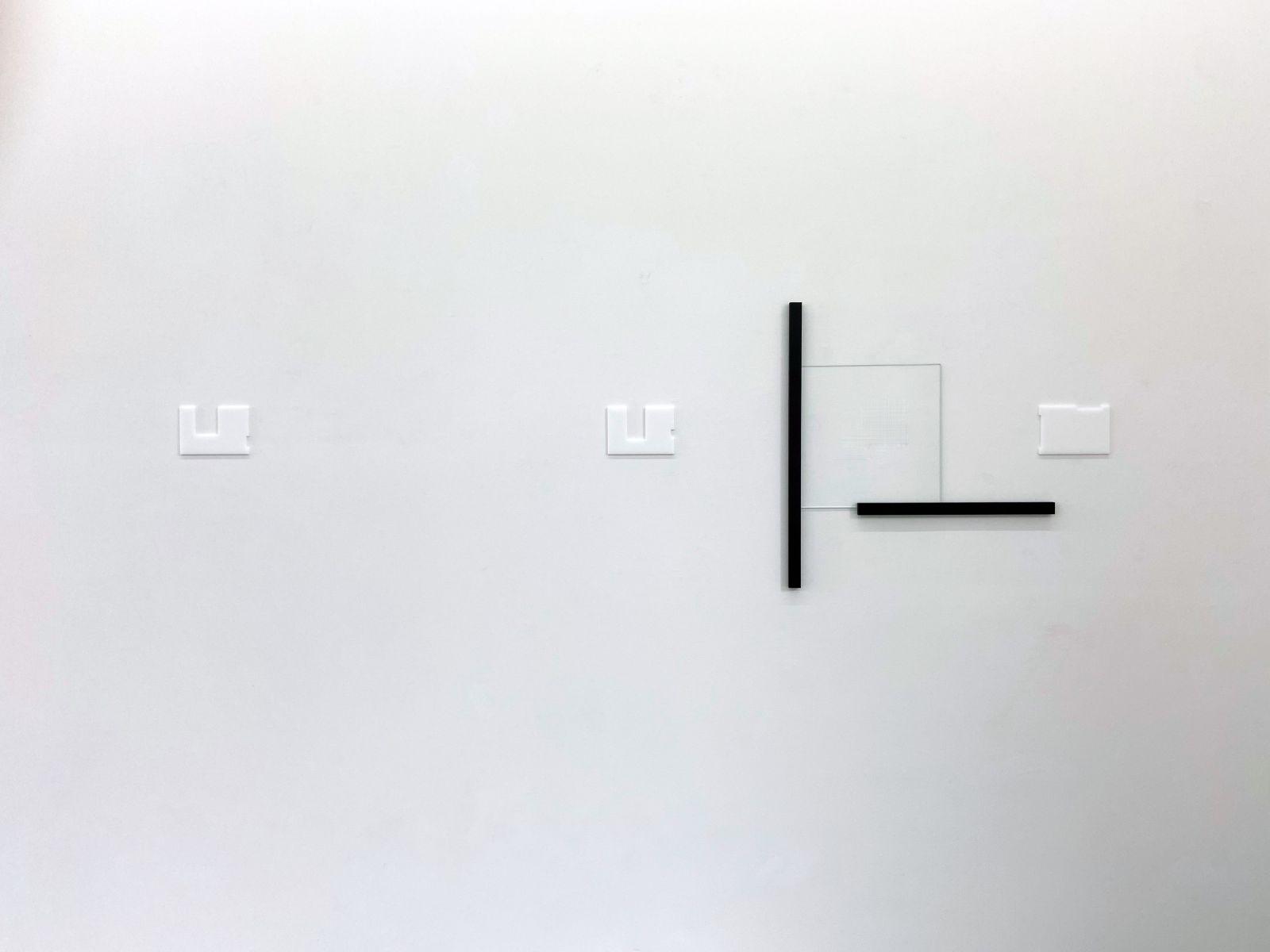
fotografie uit 2010 in 2020 als een verzameling van 40 prints gerealiseerd
wat hier binnen het fotografisch medium is vastgelegd, is bij iedere opname ingegeven door een uitgesproken subjectieve keuze om zo in het uiteindelijk fotografisch beeld een vrije loop van associaties te kunnen bewerkstelligen
de titel van de tentoonstelling als geheel zou zo ook betrekking kunnen hebben op specifiek deze fotoreeks
LED 5500 K
een ruimtelijke markering van een vlak
aluminium, zwarte lak, extra helder glas
48 cm staaf lang 72 cm staaf 3 cm breed, diep 0,5 maal 3cm glas vierkant formaat
van 36 x 36 cm hoogte van het totaal is 72 cm breedte van het totaal is 66 cm
andere afstanden 15 en 21 cm, samen 36 en 5 en 7 maal 3 48 plus 3 plus 15 weer 66
er bestaat een pendant van dit werk met verspreide componenten
plexiglas
17 breed 12 hoog 0,5 diep
met een modificatie die naar binnen is gericht zo te omschrijven als een translucente ruimtelijkheid, zeven van deze werken geplaatst
door de werking van het licht wordt een ruimtelijke connectie met de wand zichtbaar
plaatsing van de afzonderlijke werken is hier op gelijke hoogte en op gelijke afstanden
komt in het bereik van twee andere werken toch zonder de afzonderlijke waarneming ervan
in de weg te staan
foto's geprint op Canson
bepalende factor voor het maken van elk van de opnames was keer op keer de herkenning van het grensgebied tussen privaat en openbaar
in 2020 is deze fotografie gestart,
jaarlijks met enkele foto's aangevuld, vormt het een ongoing project
voortkomend uit een opvatting van sculptuur
grafiet met geanodiseerd aluminium
in een plaatsing van vijf werken op gelijke hoogte met oplopende onderlinge afstand de muuropening
hierin opnemend
plexiglas zwart rvs
drietal werken in de tentoonstelling waaronder deze, hebben iets van gelijkenis en liggen ruimtelijk min of meer op één lijn verspreid over twee ruimtes
grafiet CCFL
3 maal grafiet van 60 x 49 x 3,5 cm met groen CCFL
het gekozen formaat heeft voldoende afmeting om groot over te komen
het dual use materiaal is hoog in de ruimte geplaatst en de werken refereren zo enigszins aan
pictogrammen als die voor een nooduitgang
door de plaatsing krijgen de werken een naar afwezigheid neigende vanzelfsprekendheid
grafiet
een klein formaat werk met twee zaaglijnen
verbruikte TL-buis, zwart rubber
klein werk uit 1997 een cluster van zes installaties uit 1990 ging hieraan vooraf
Incision I
staaf van grafiet, gemerkt met het begin van een zaagsnede 9,3 cm vanaf links,
waar de titel naar verwijst
de titel kan ook gezien worden als een verwijzing naar de plaatsing op het witte vlak van de wand
de tentoonstelling is zo gestructureerd dat
een veelheid aan tegenstellingen, zoals clustervorming en lege plekken, donker en licht tegenstellingen,
een ordening vindt in meerdere lijnwerkingen
Henric Borsten, november 2024

Untitled (2012)
Aluminium bars, paint, extra clear flat glass
72







